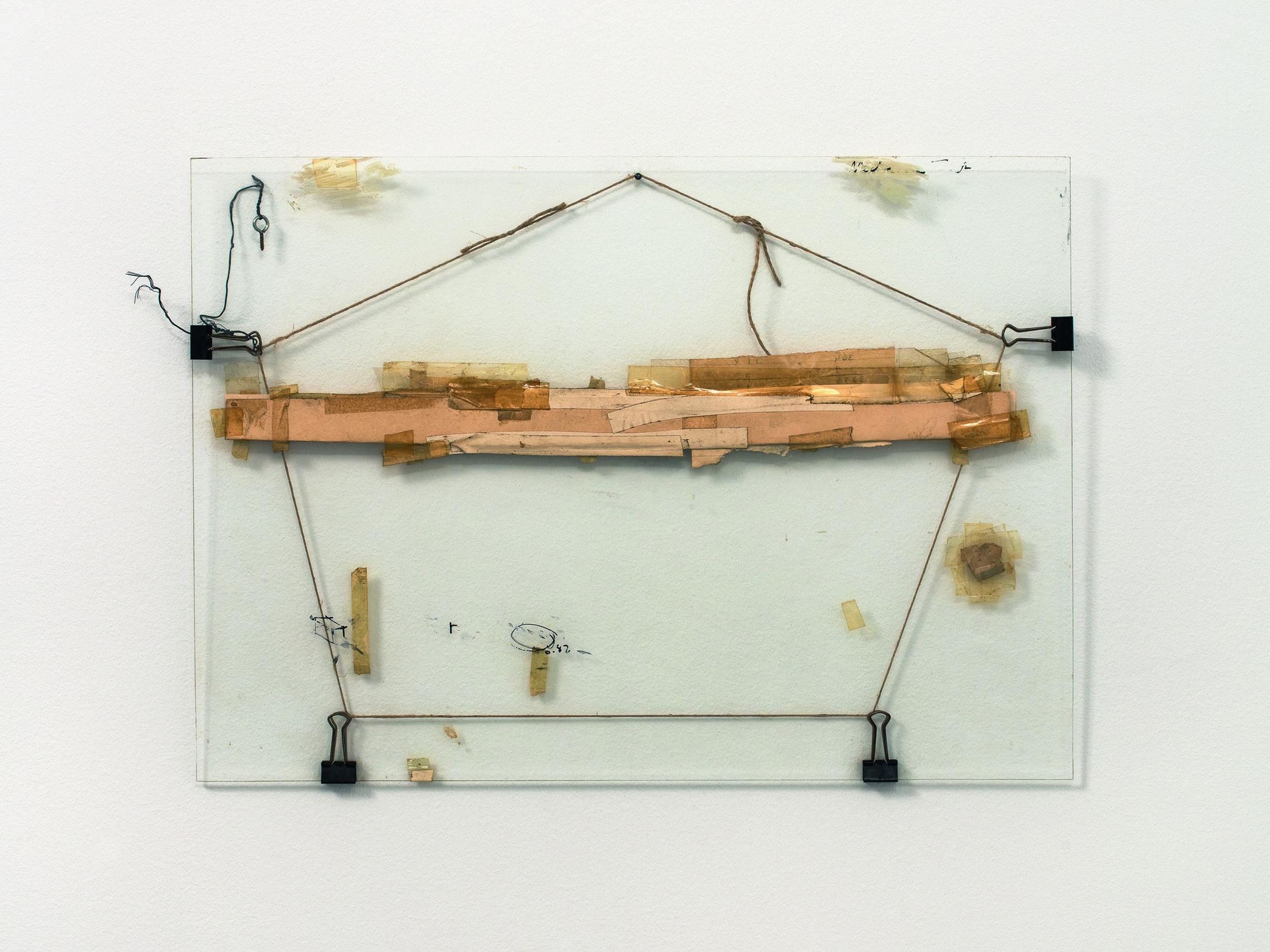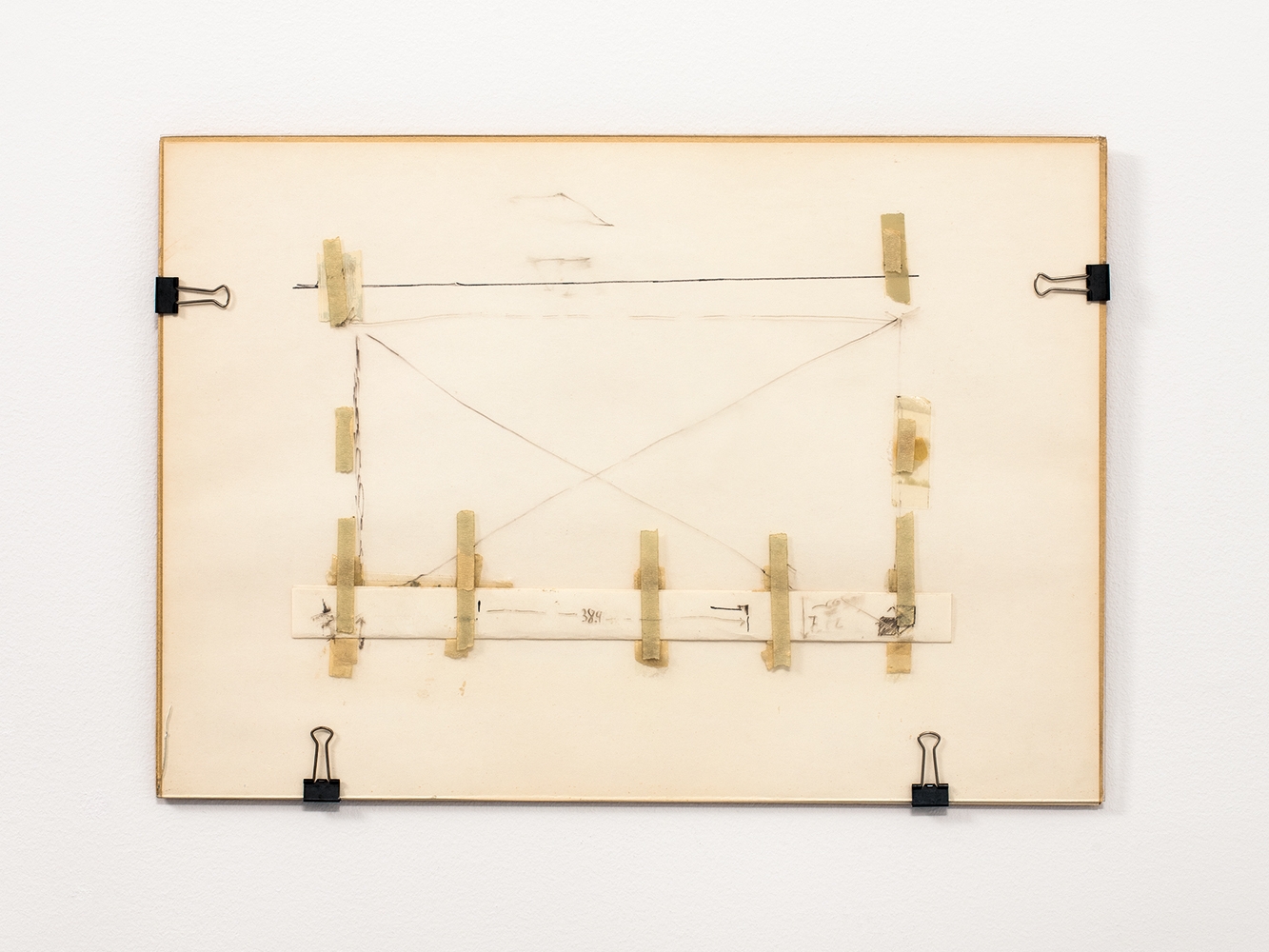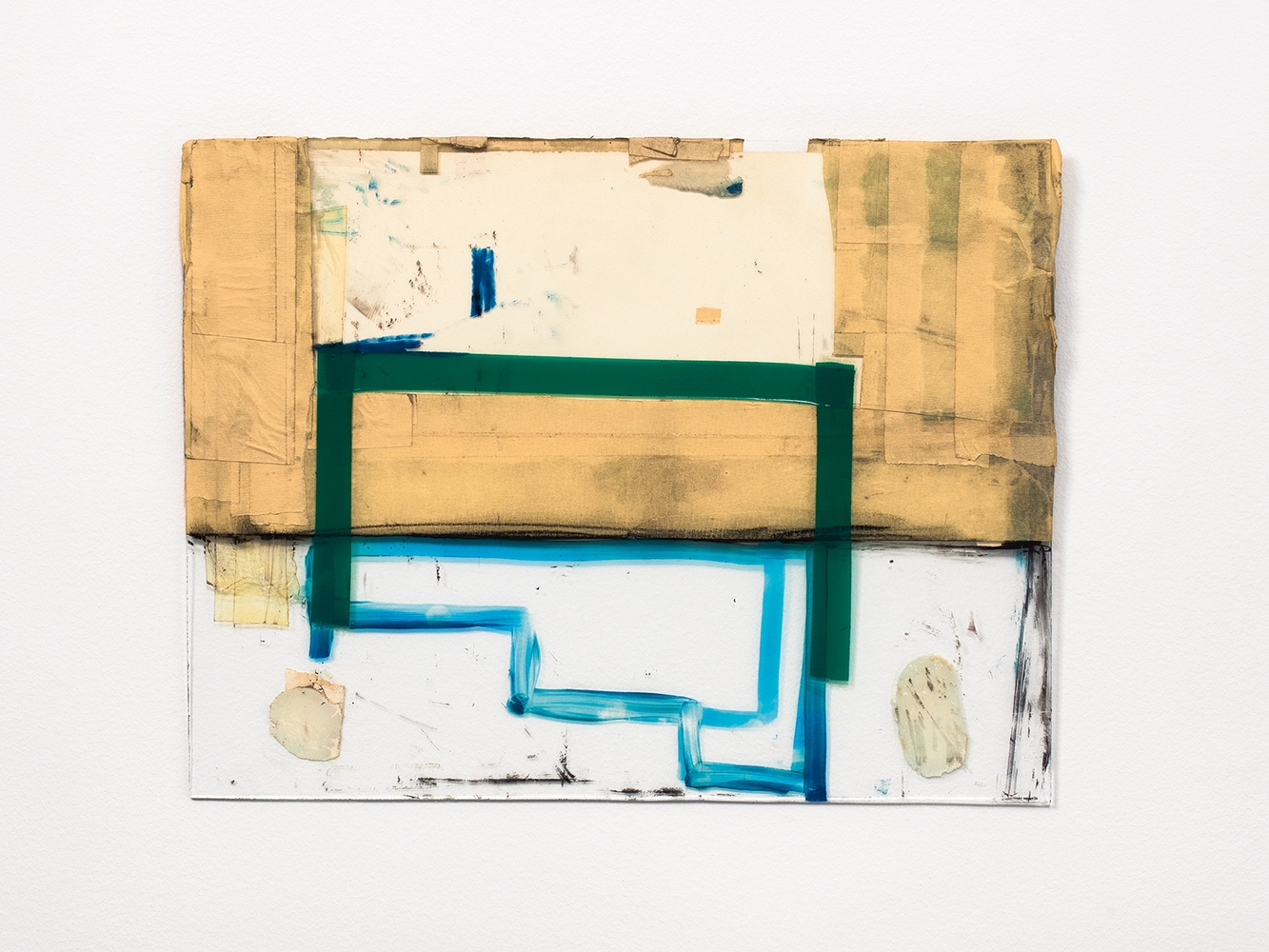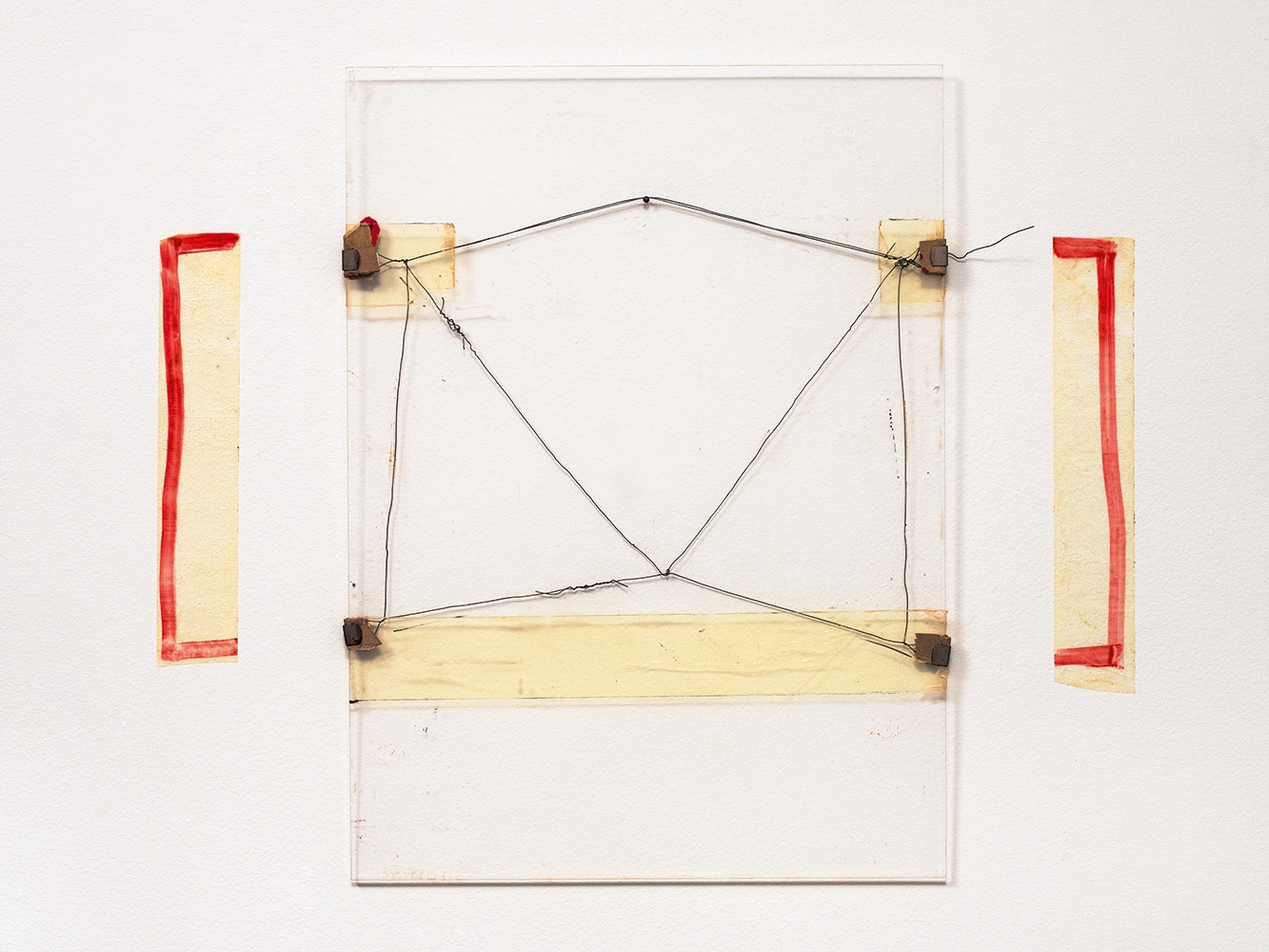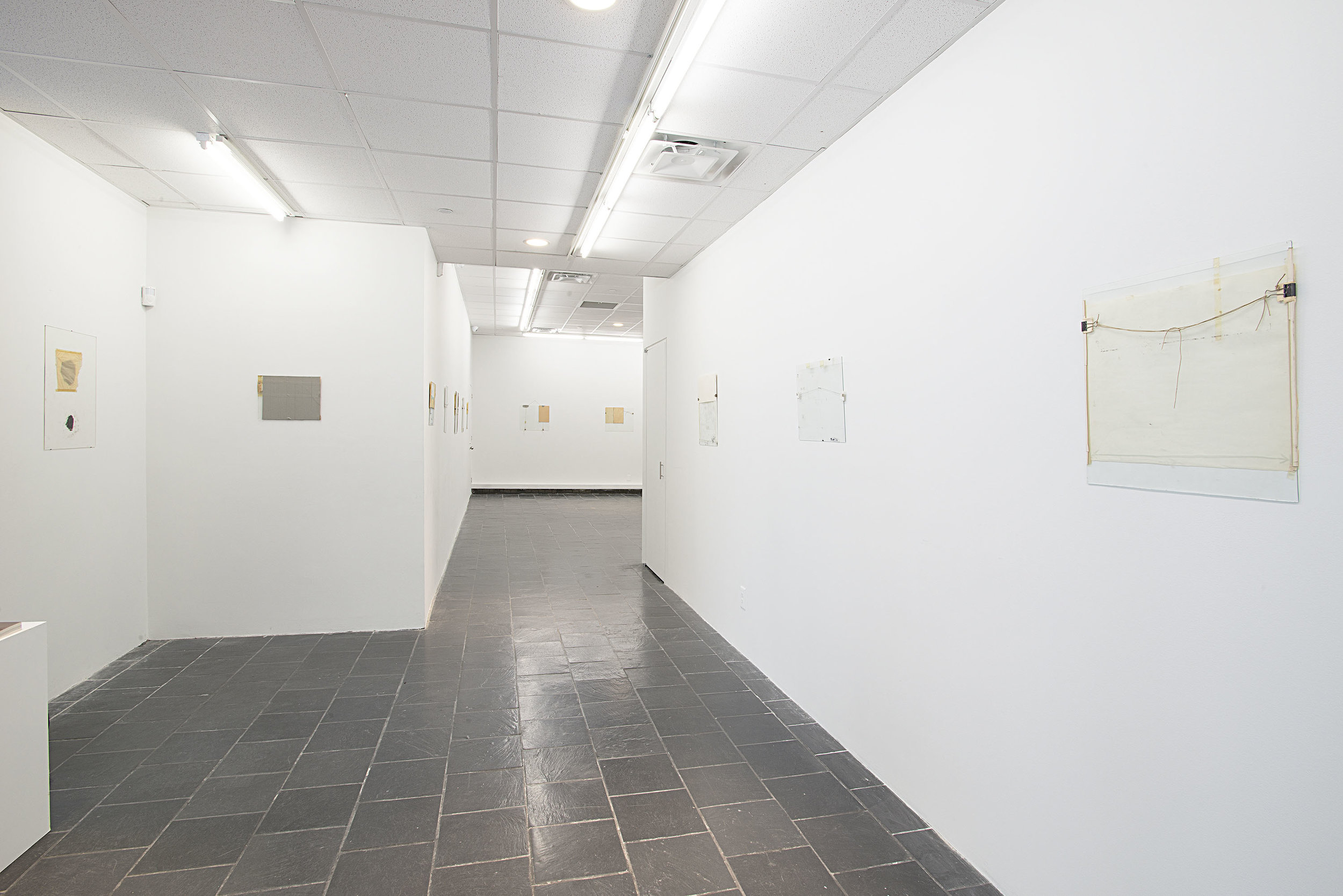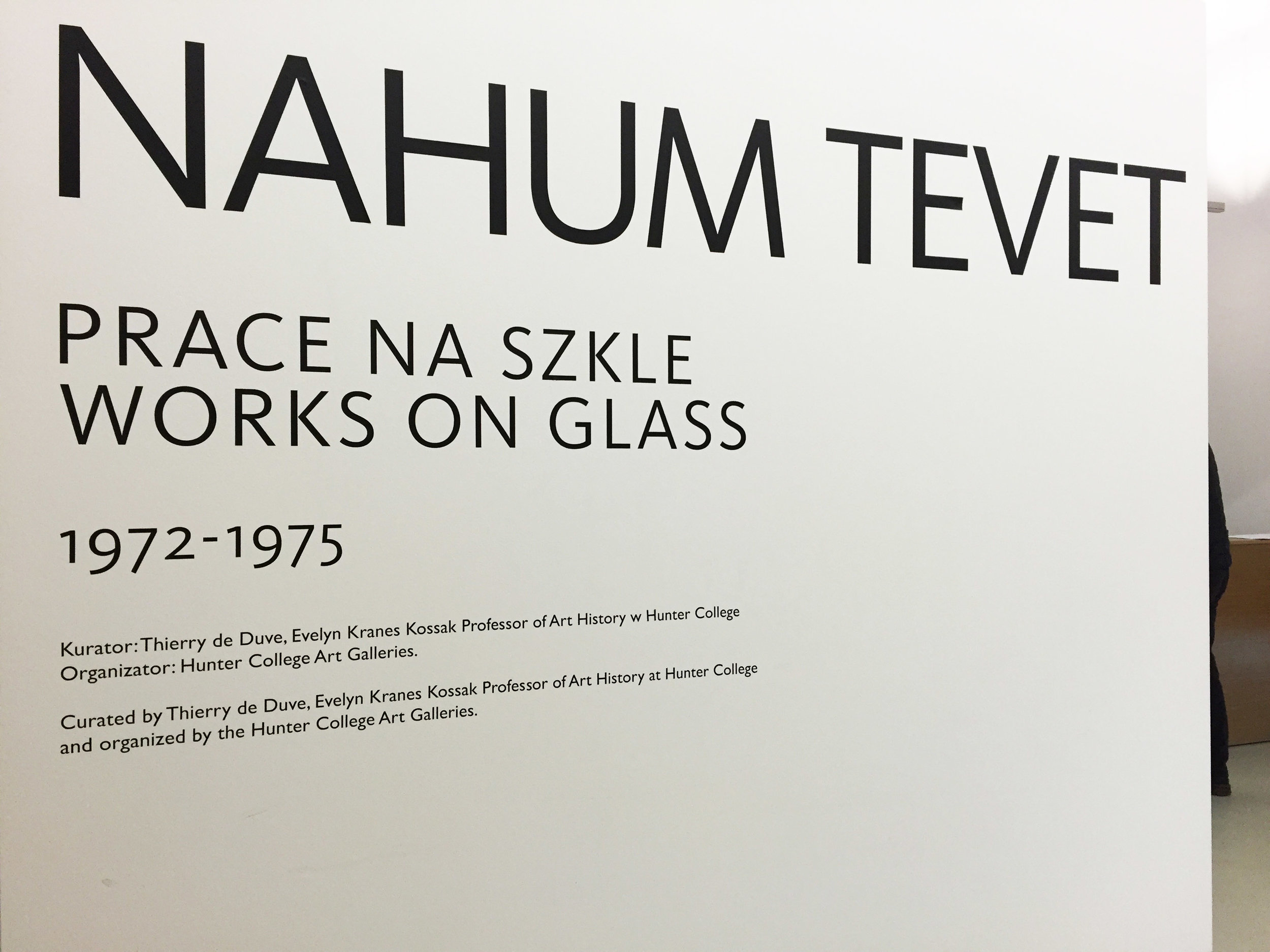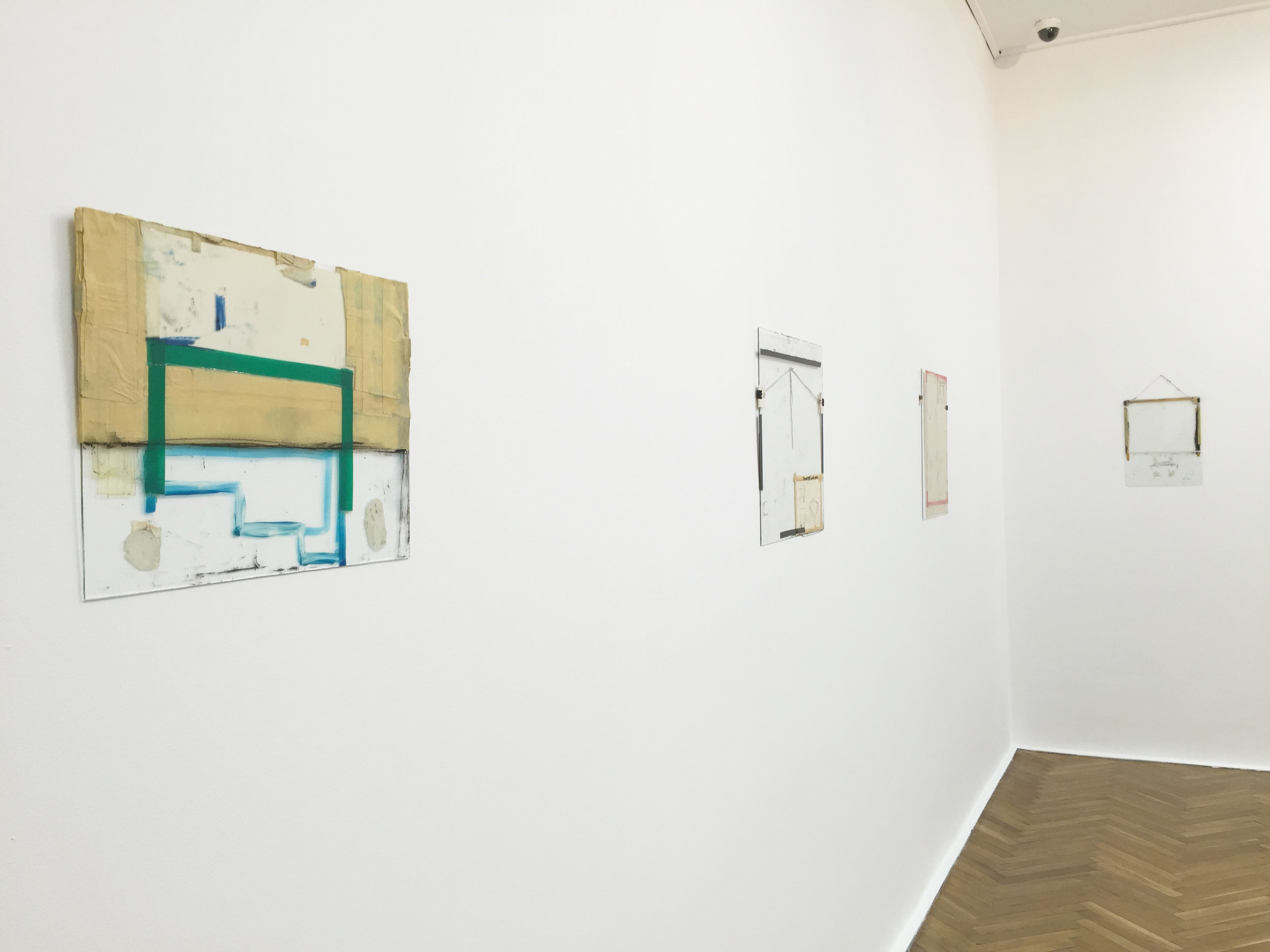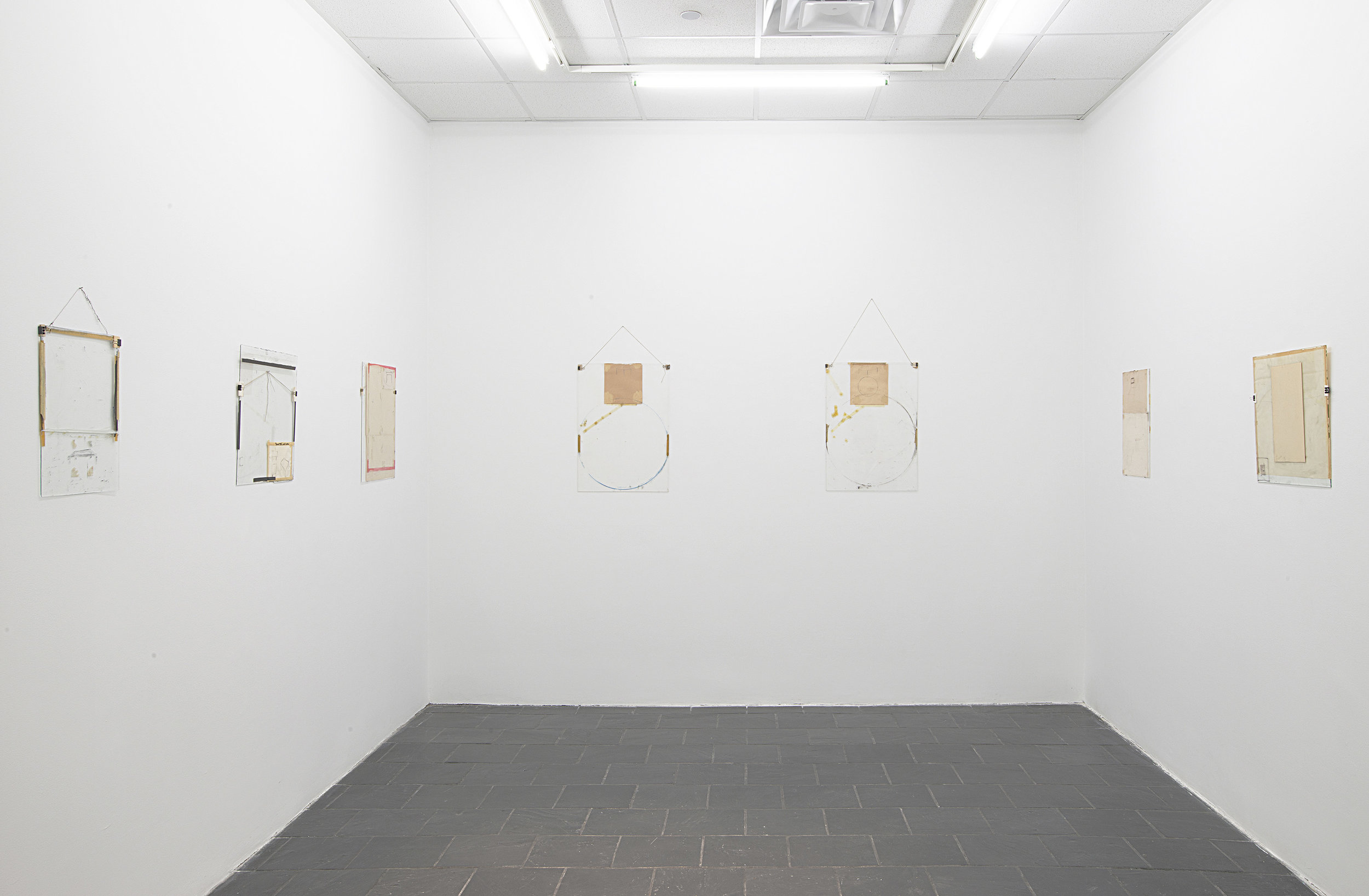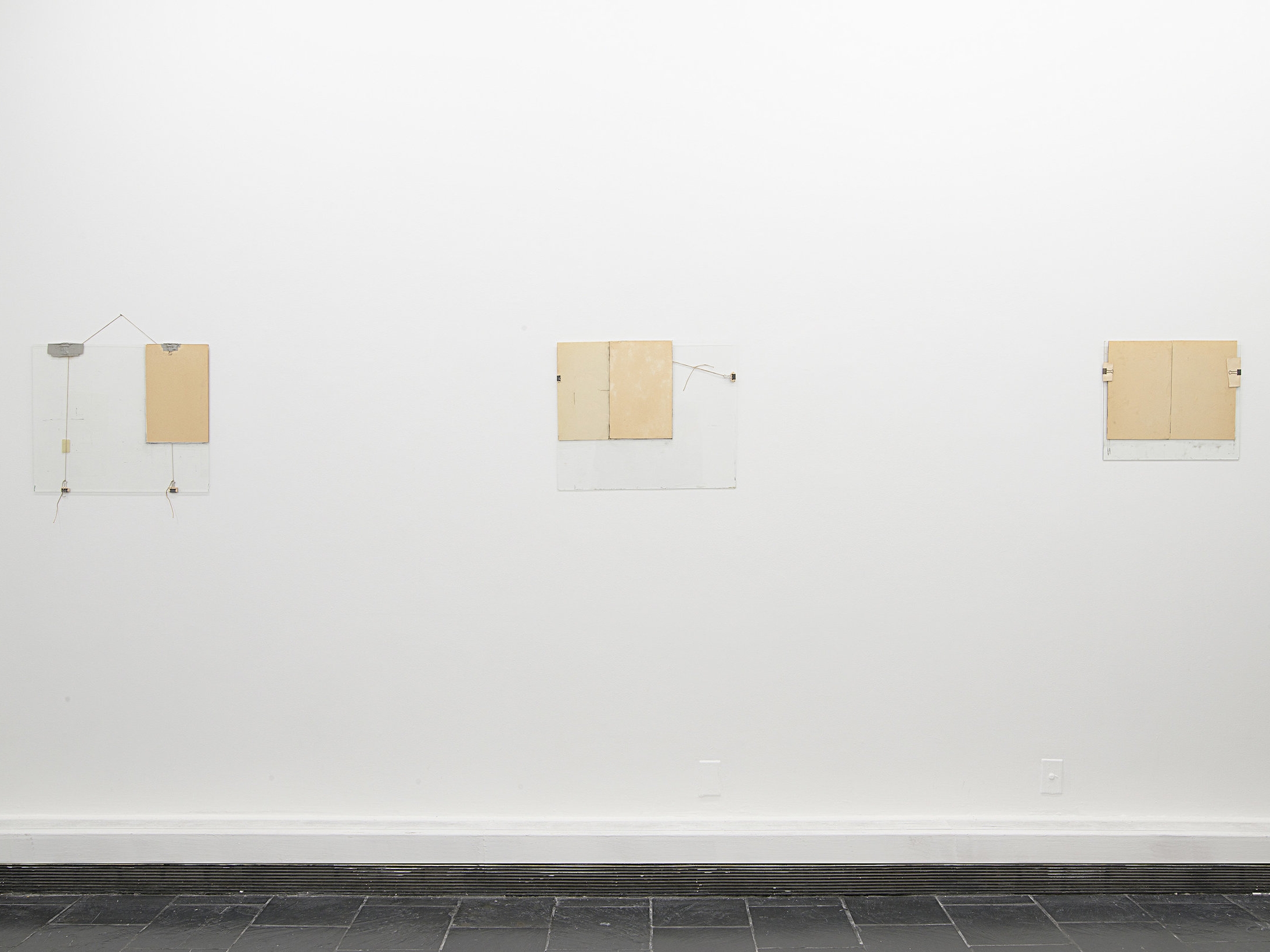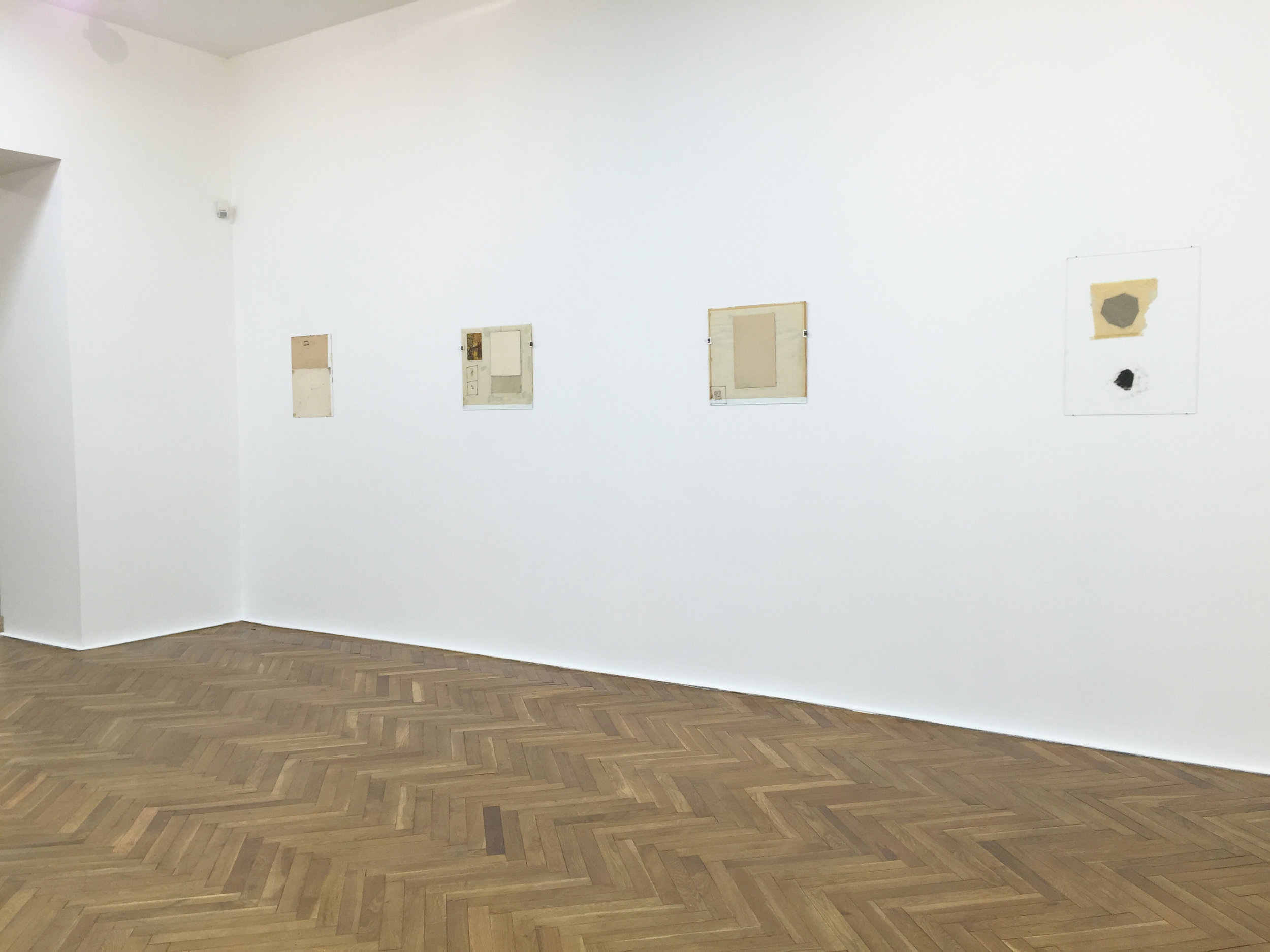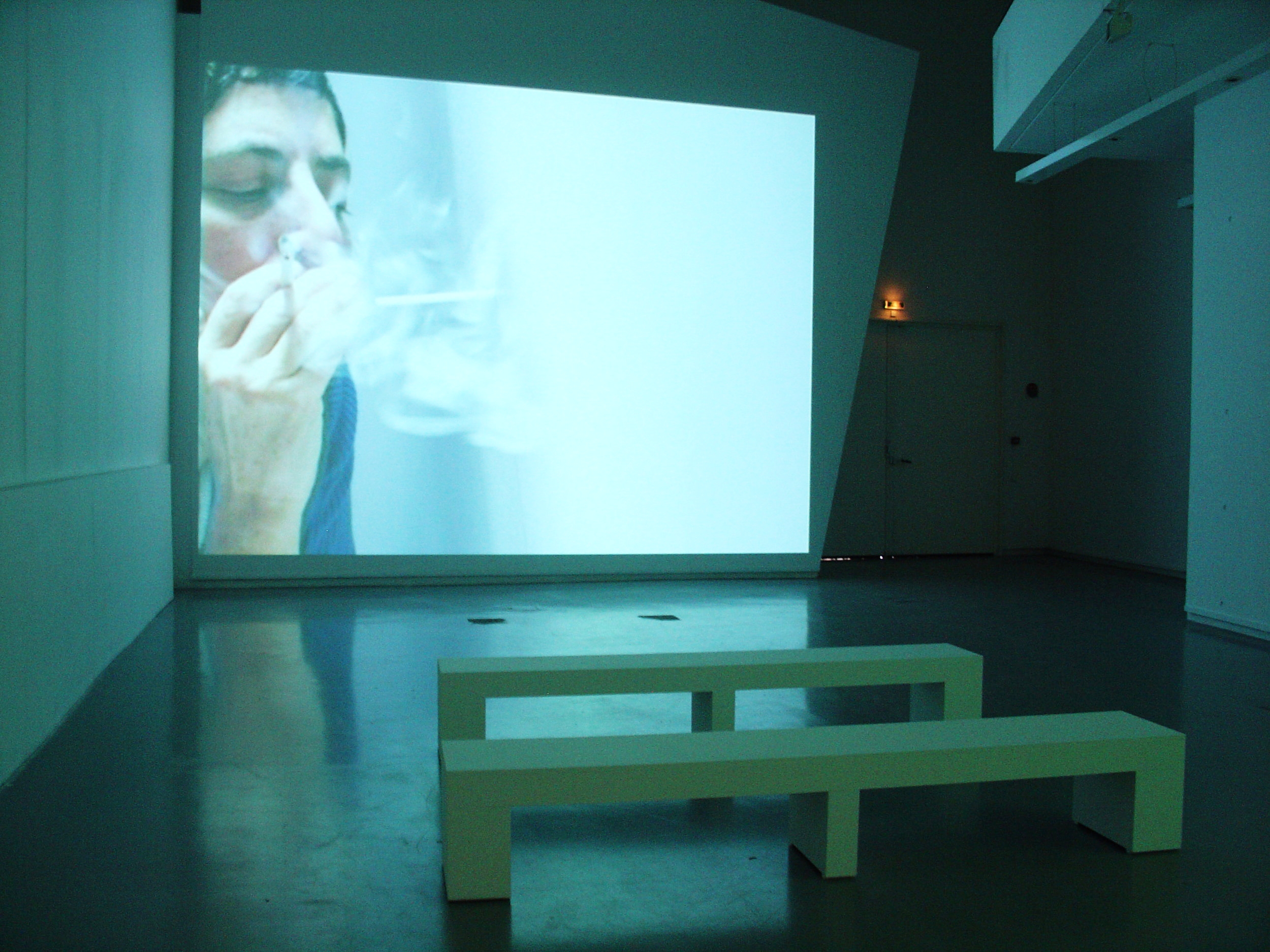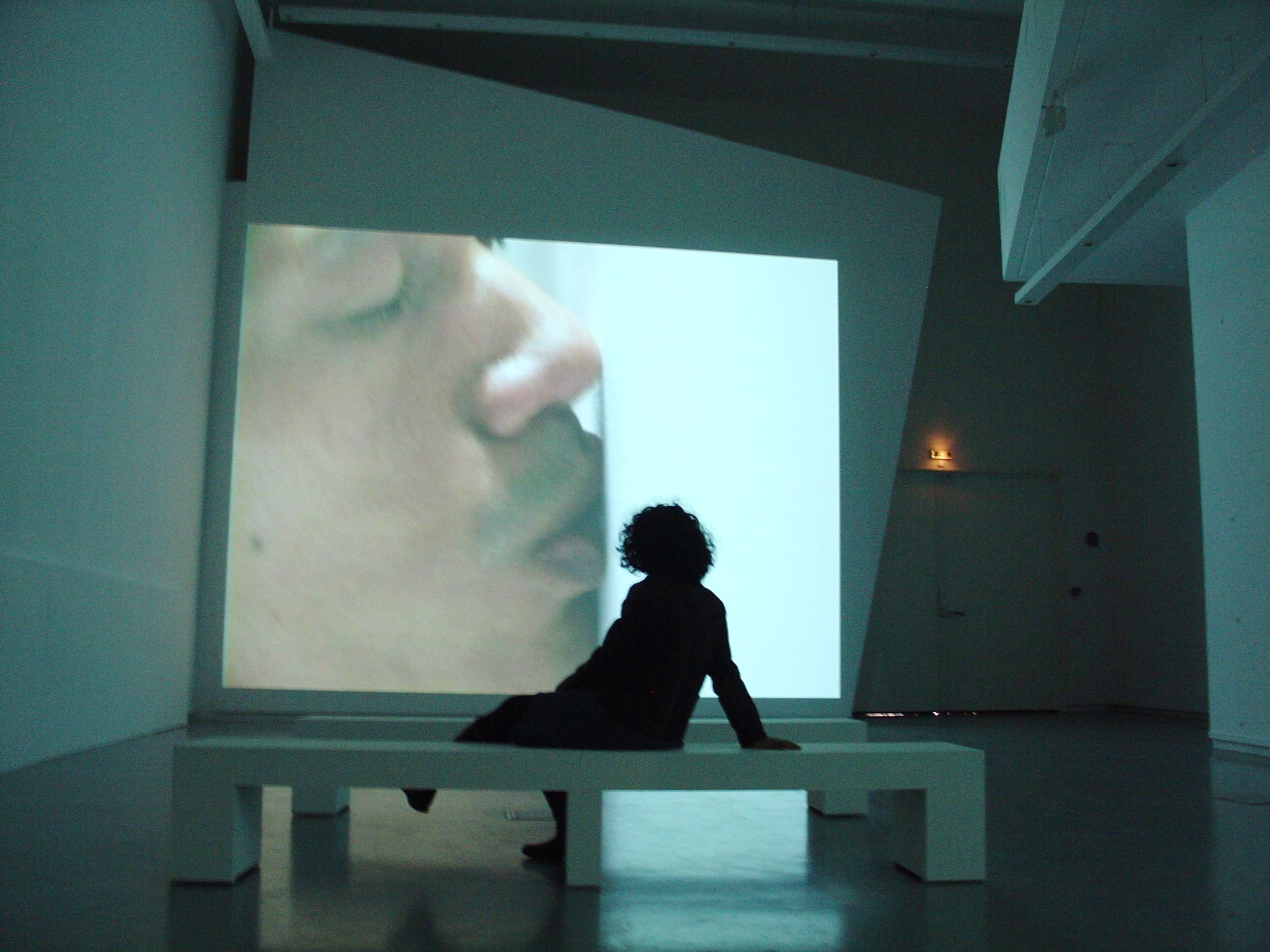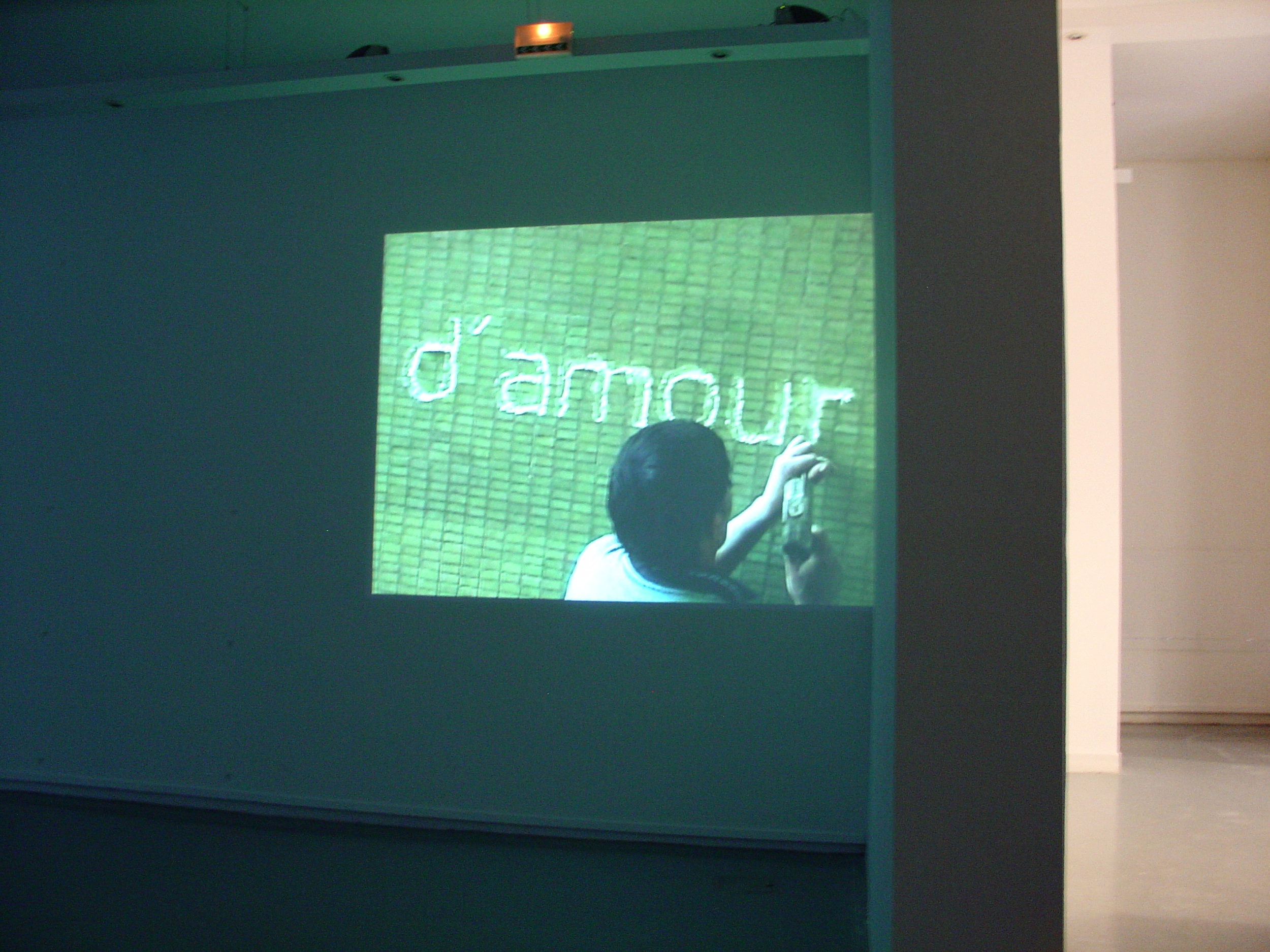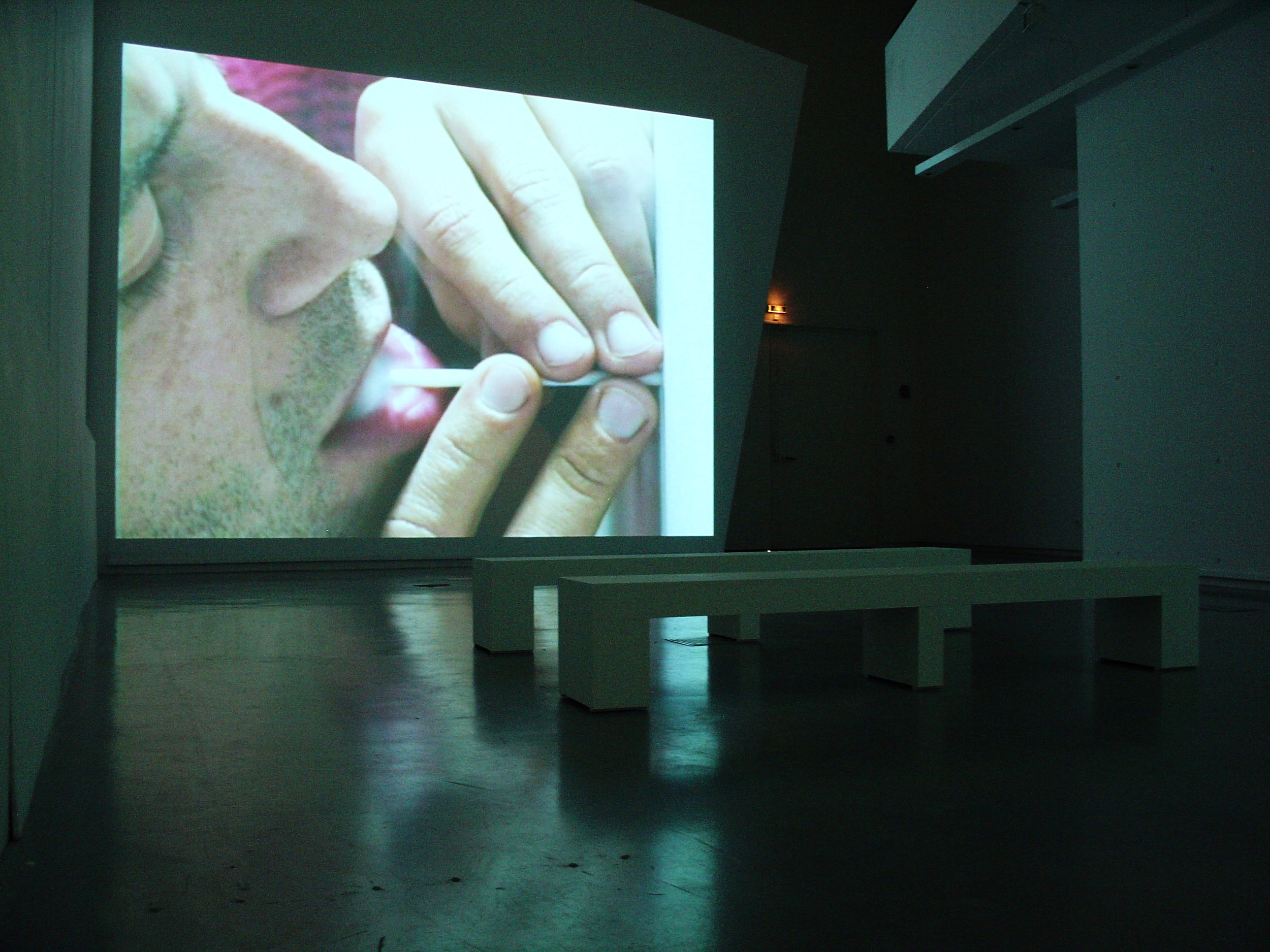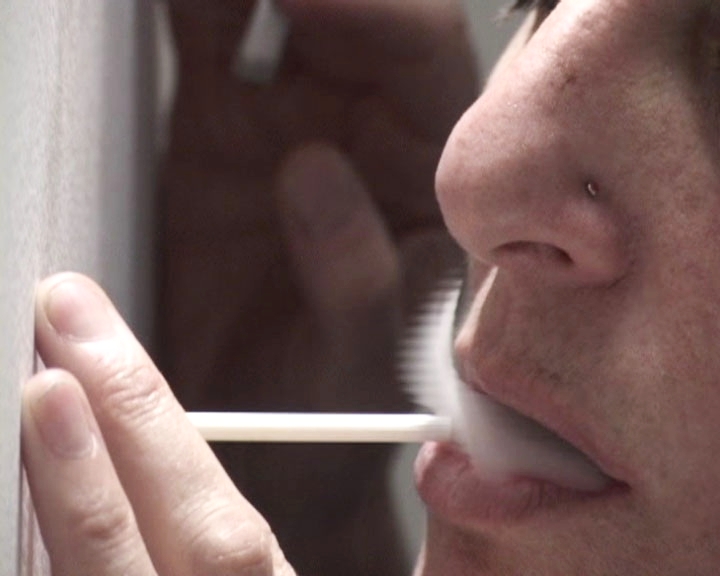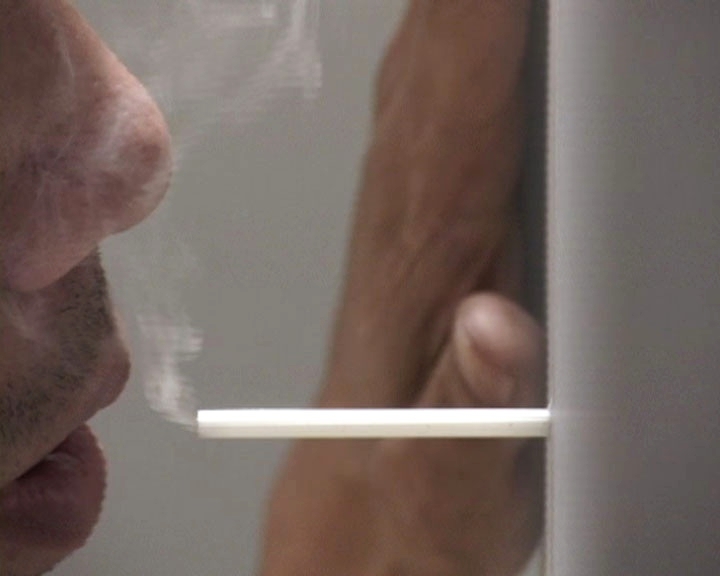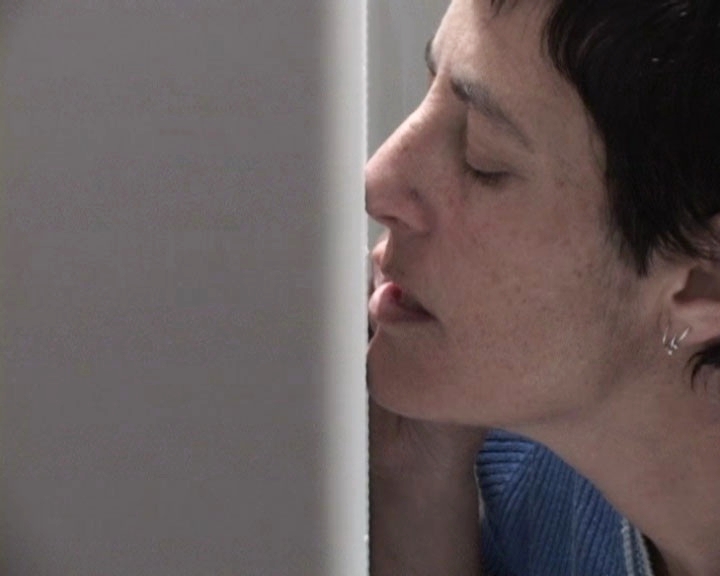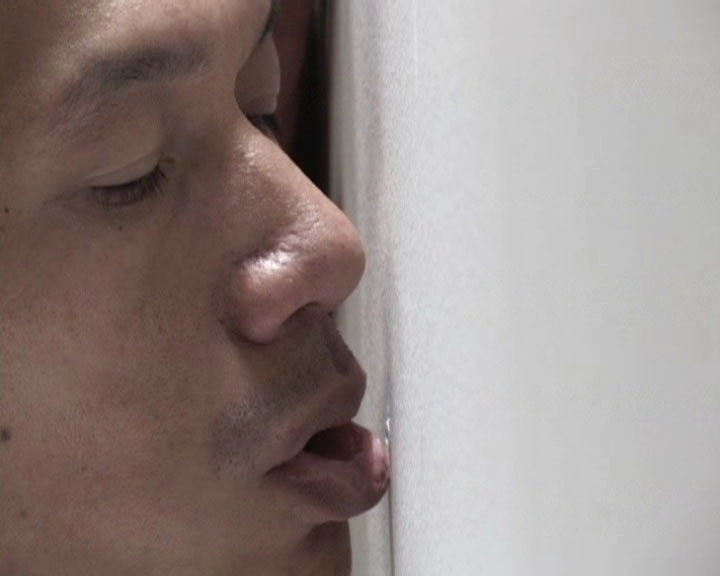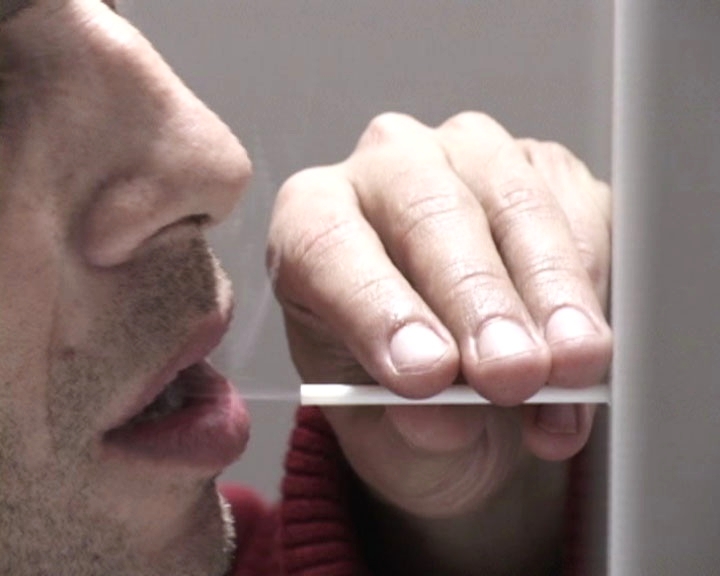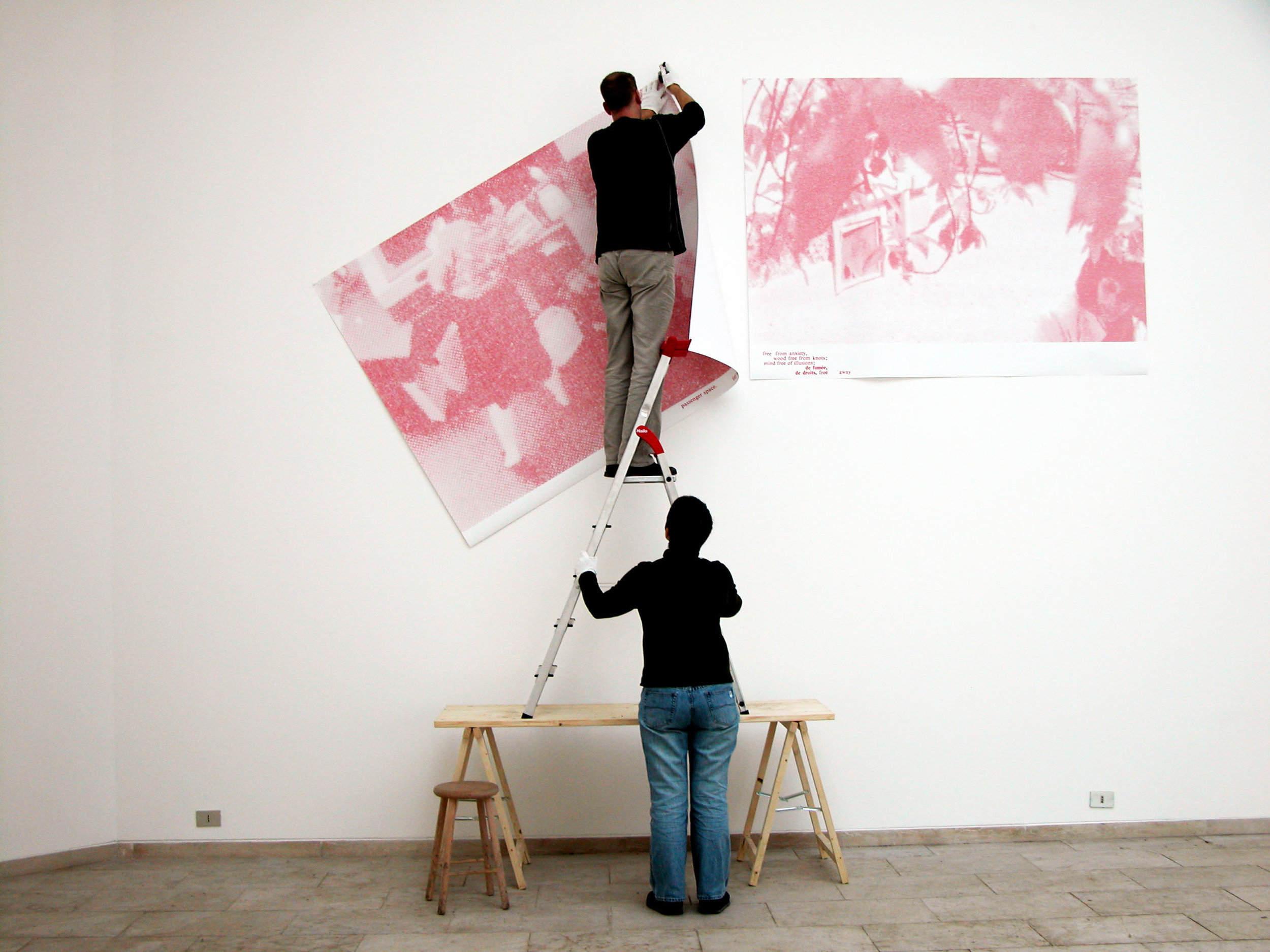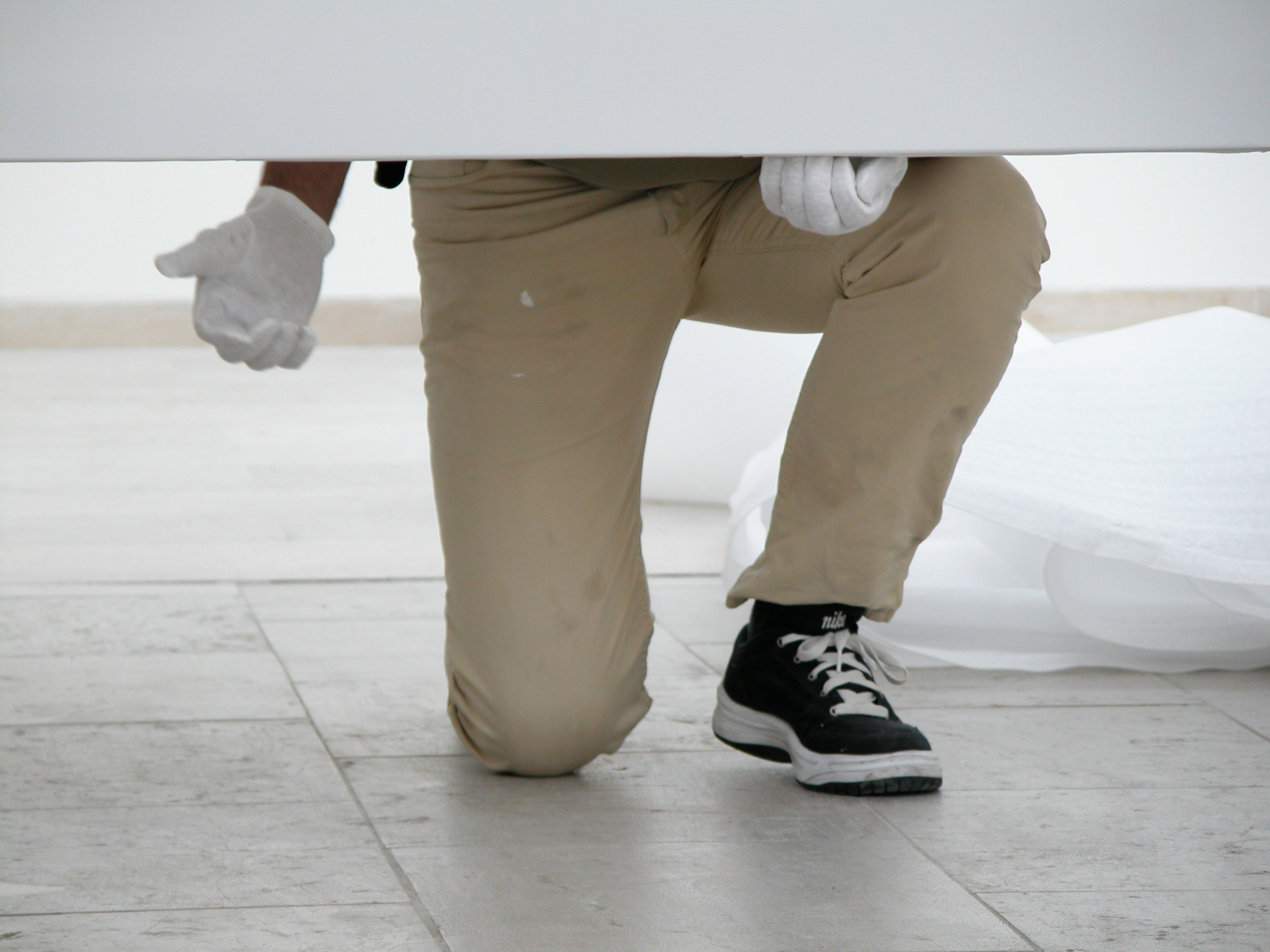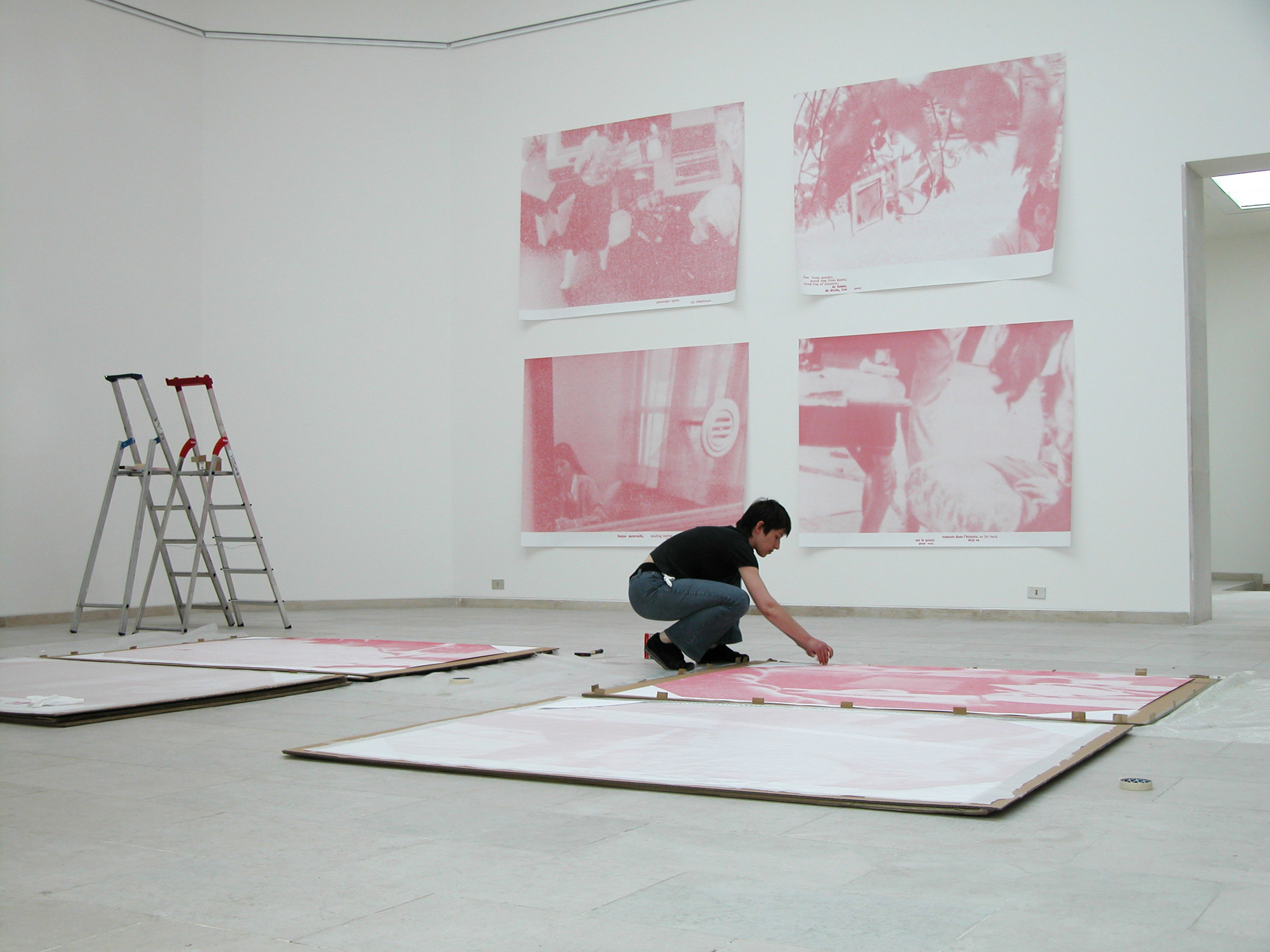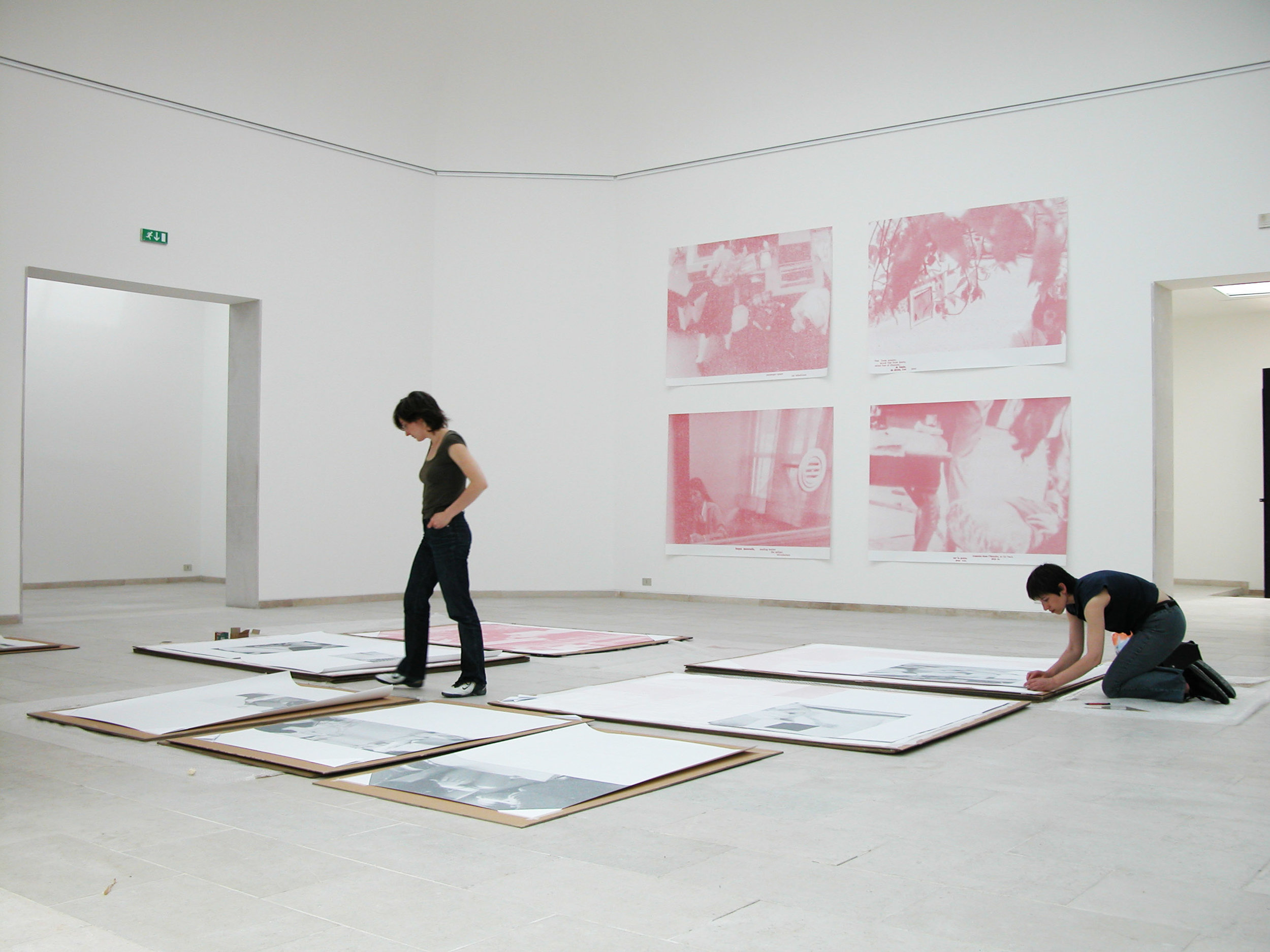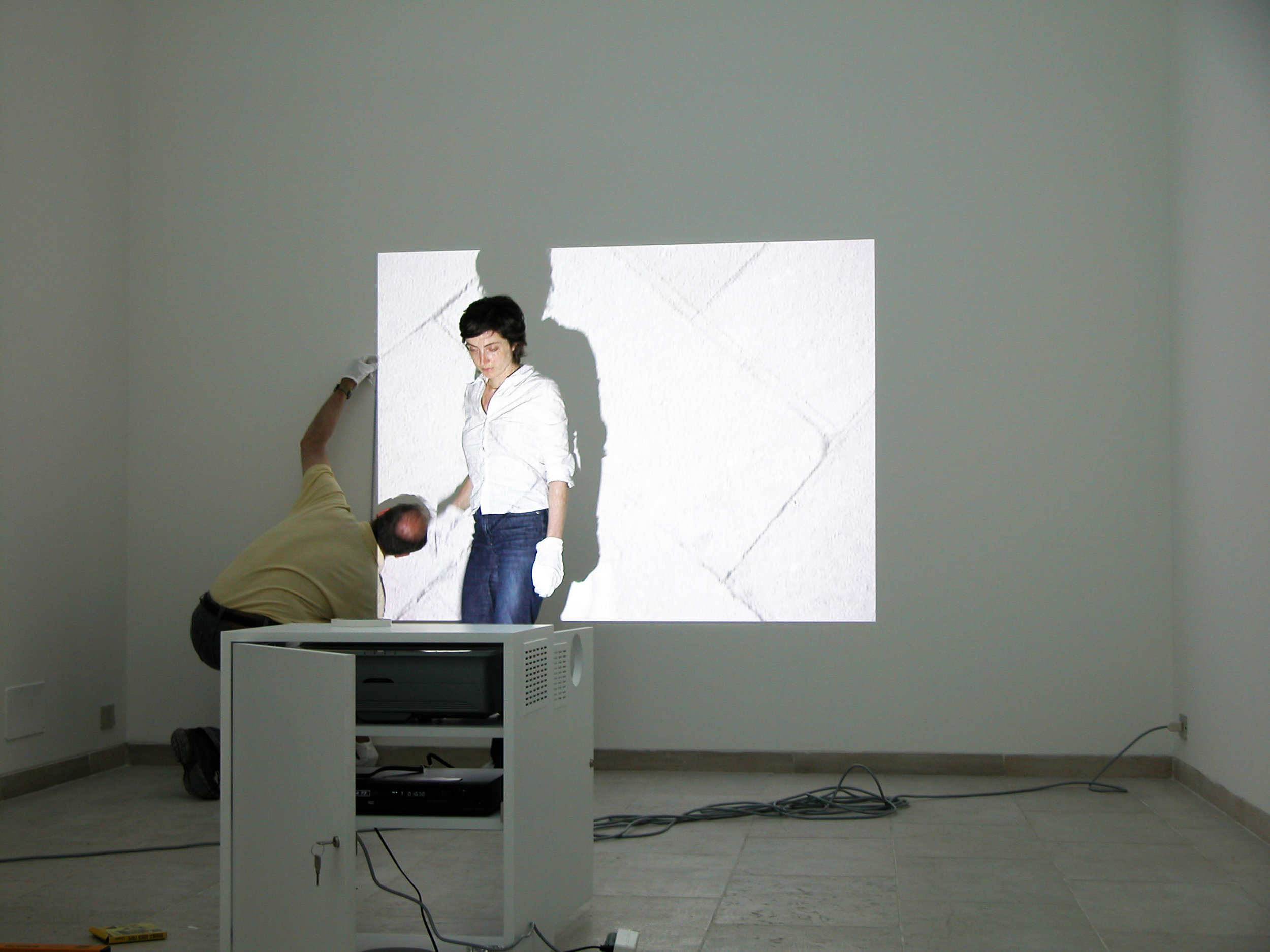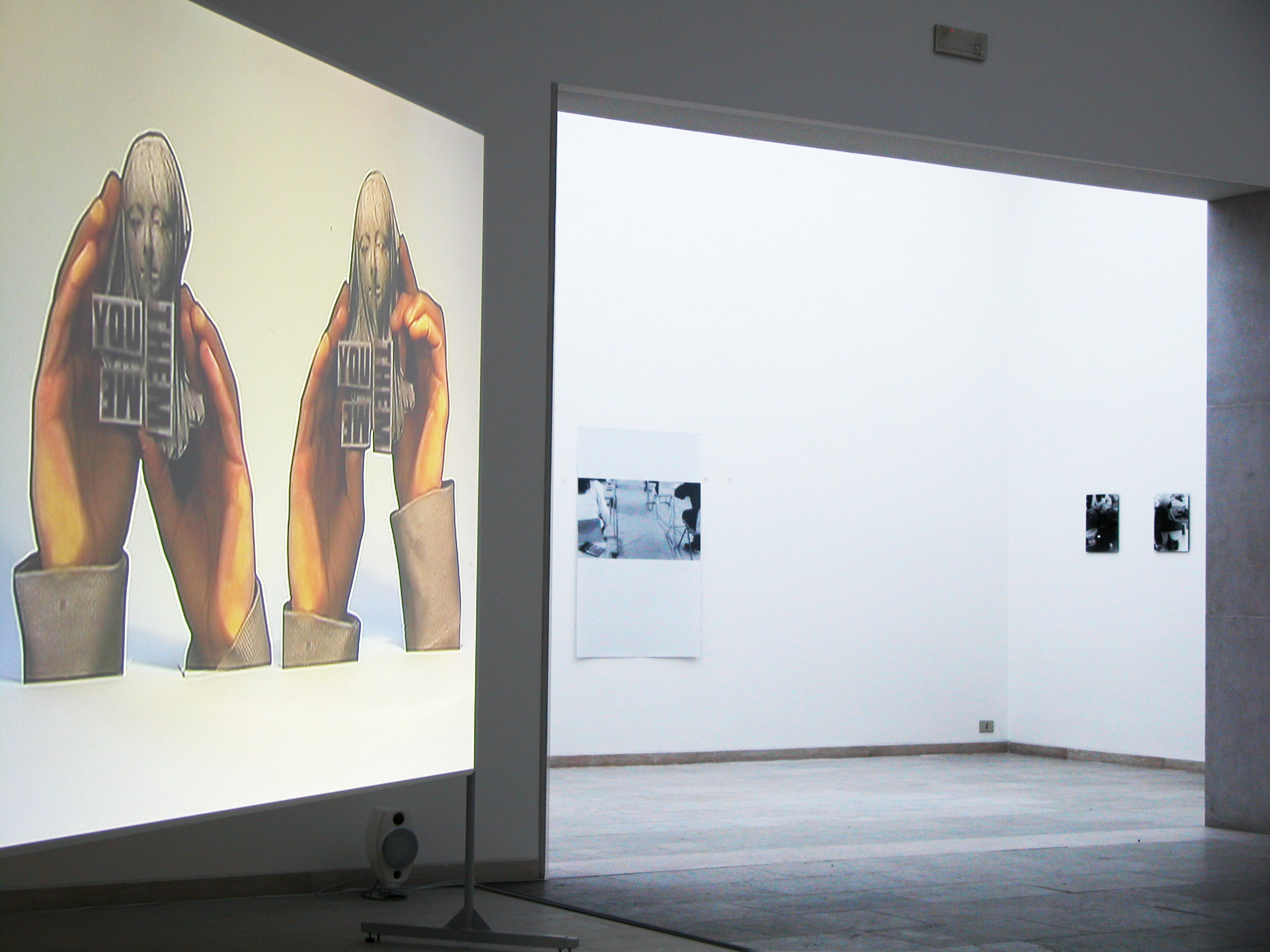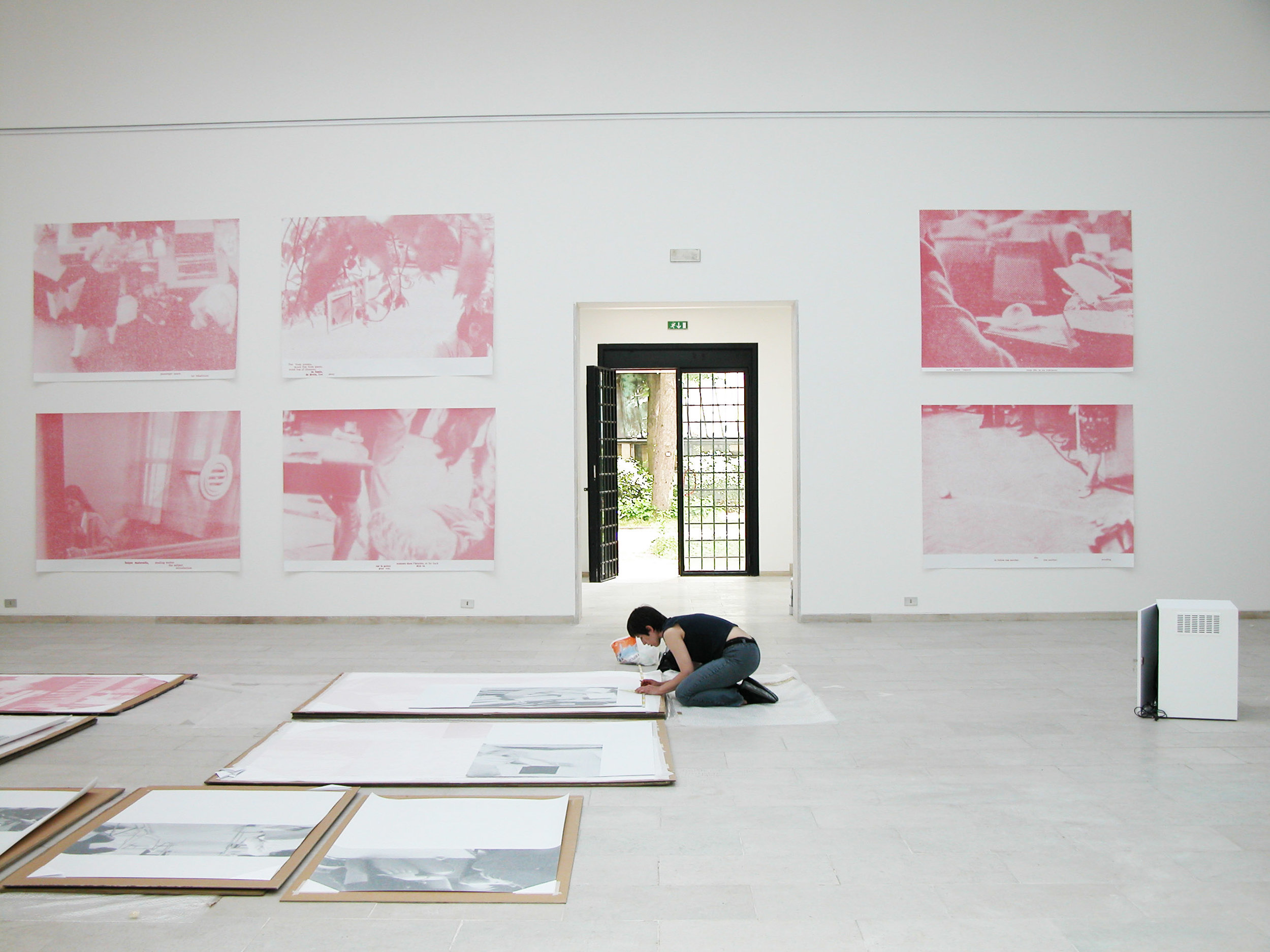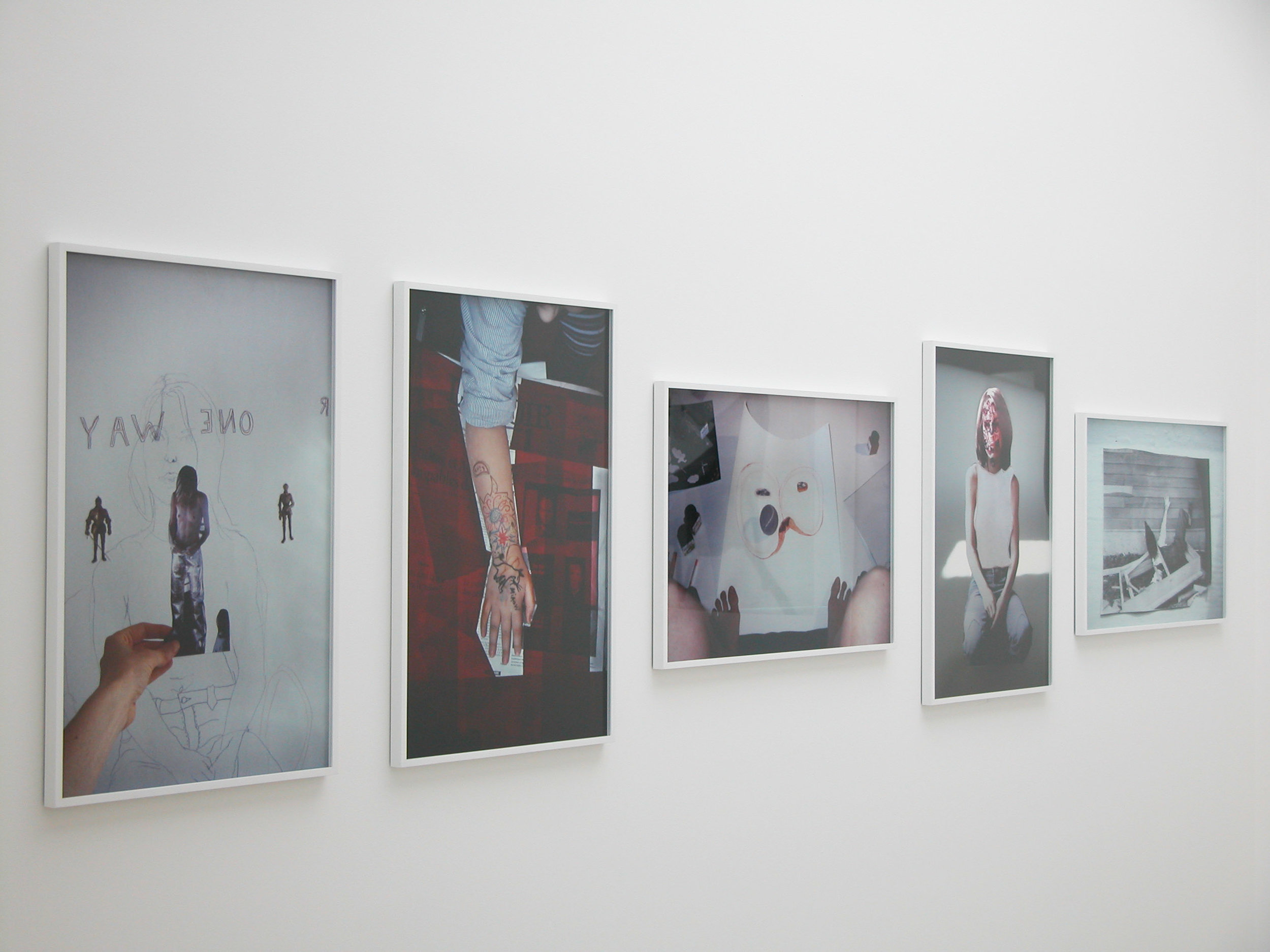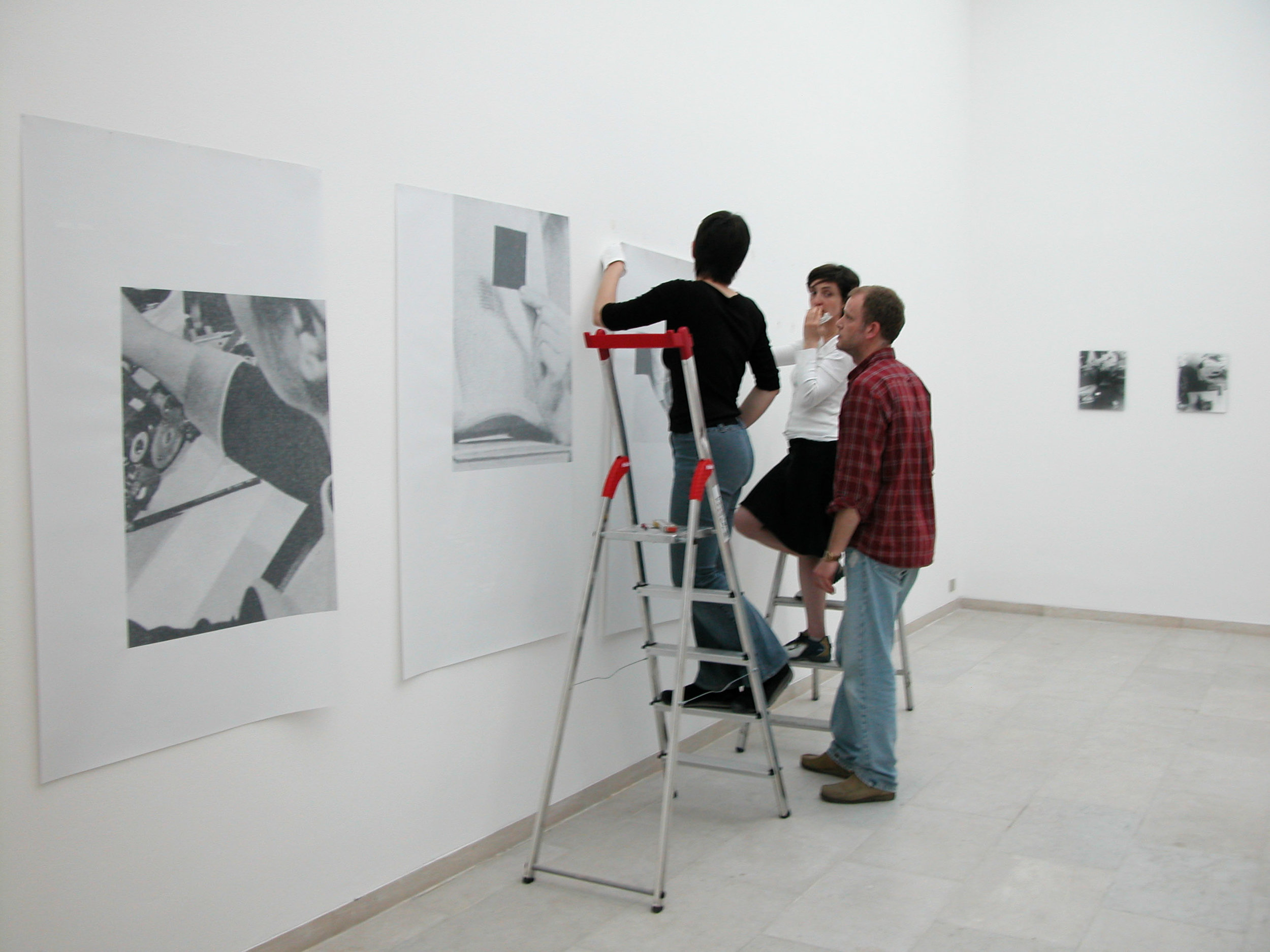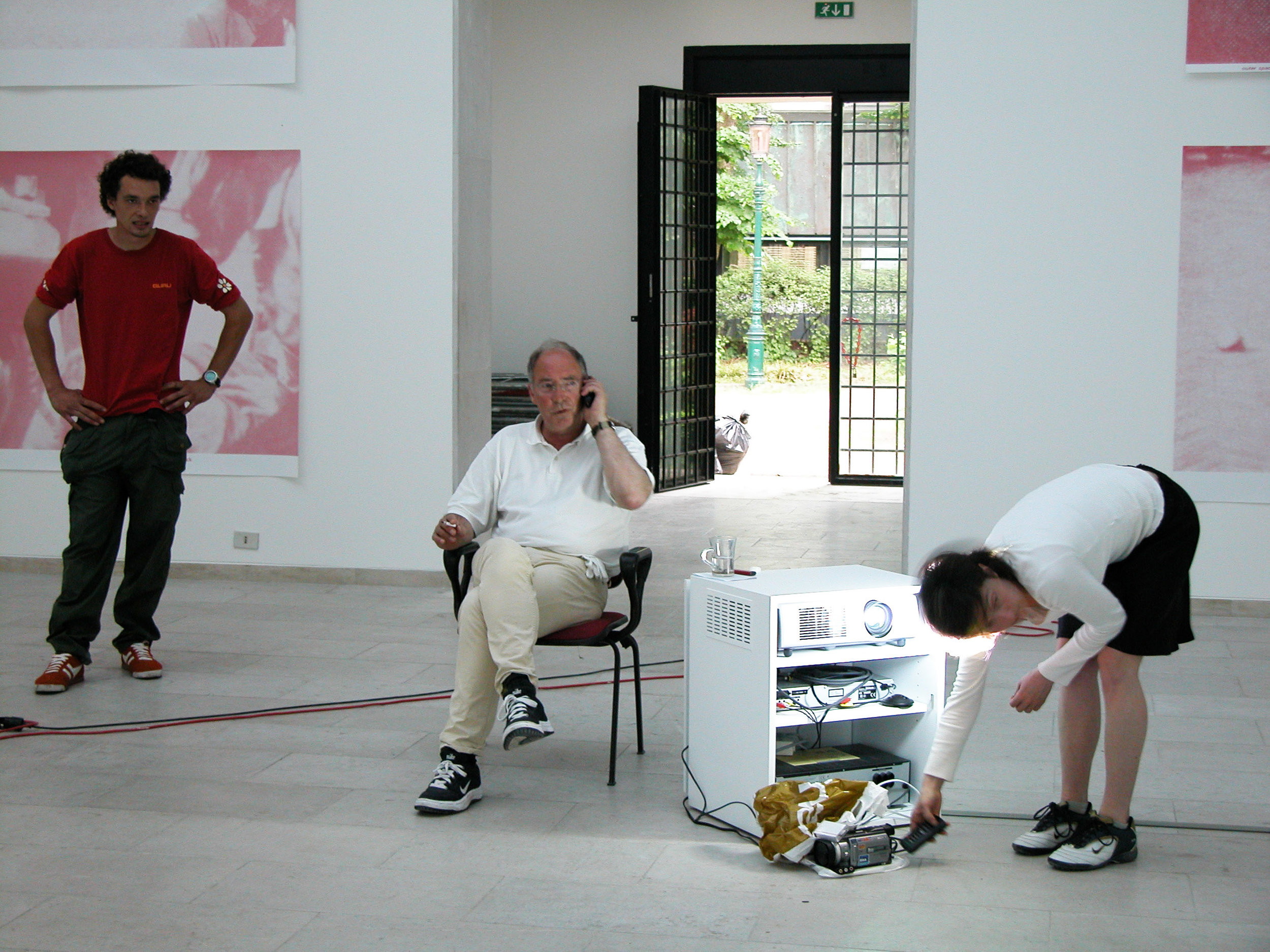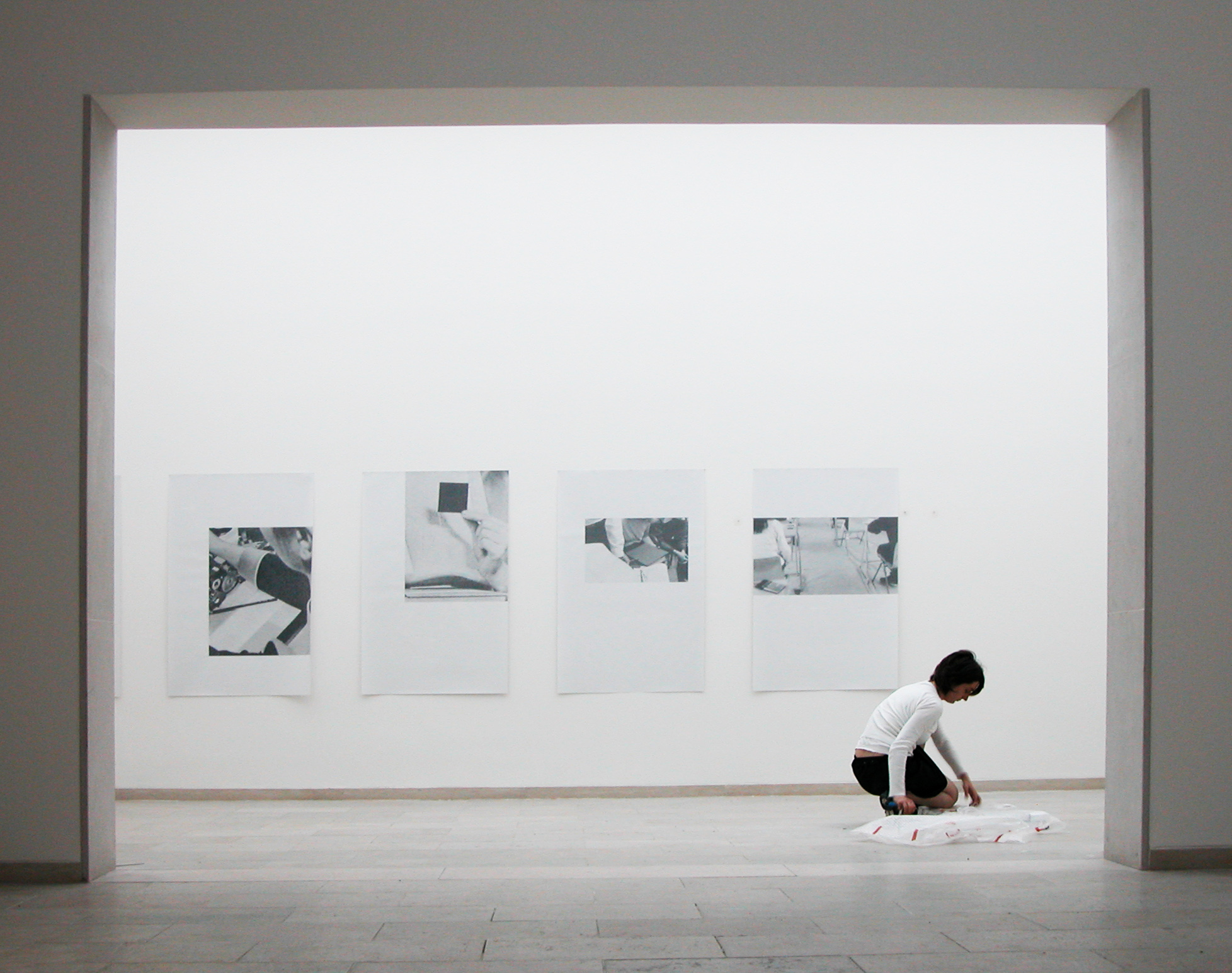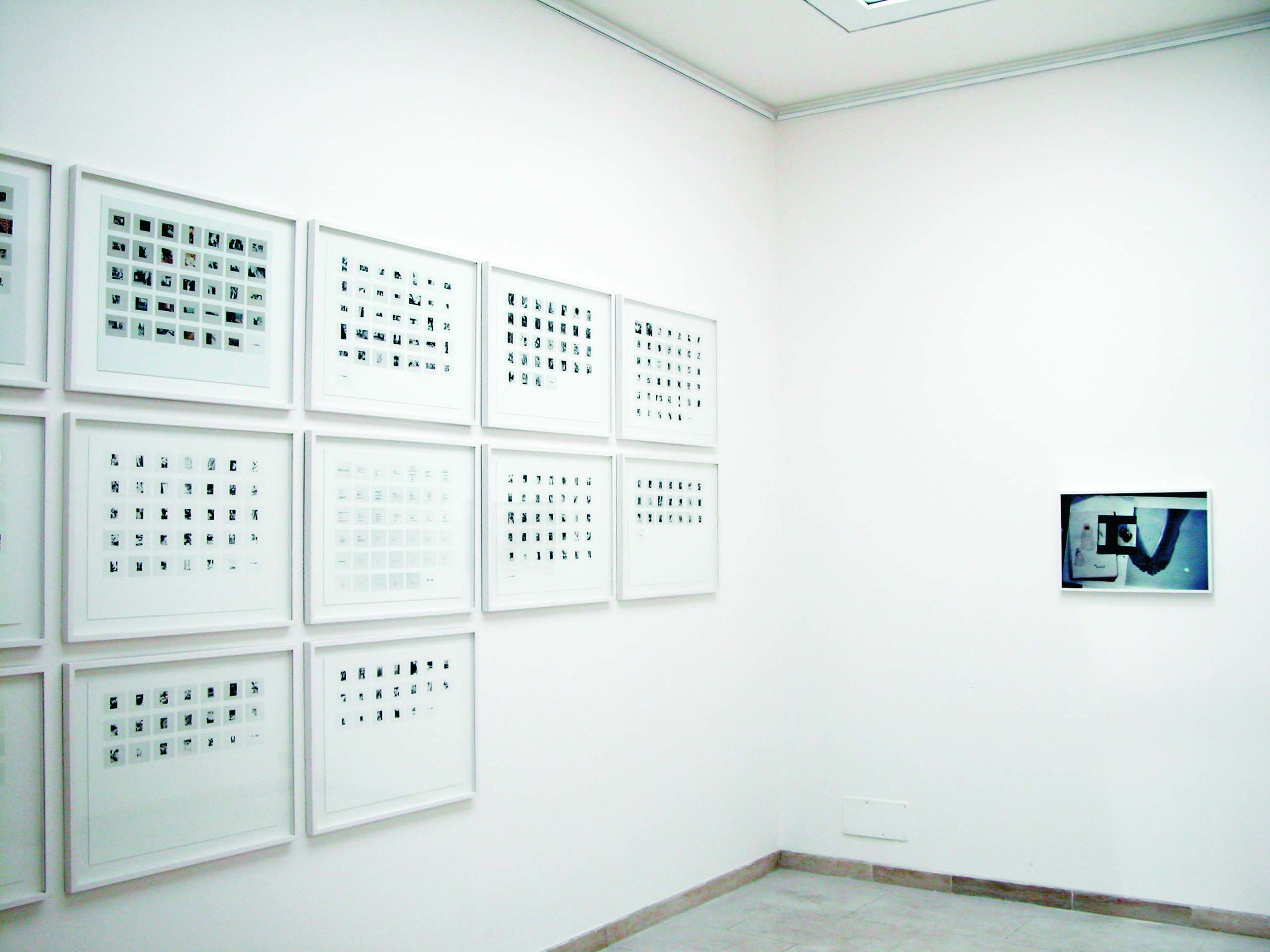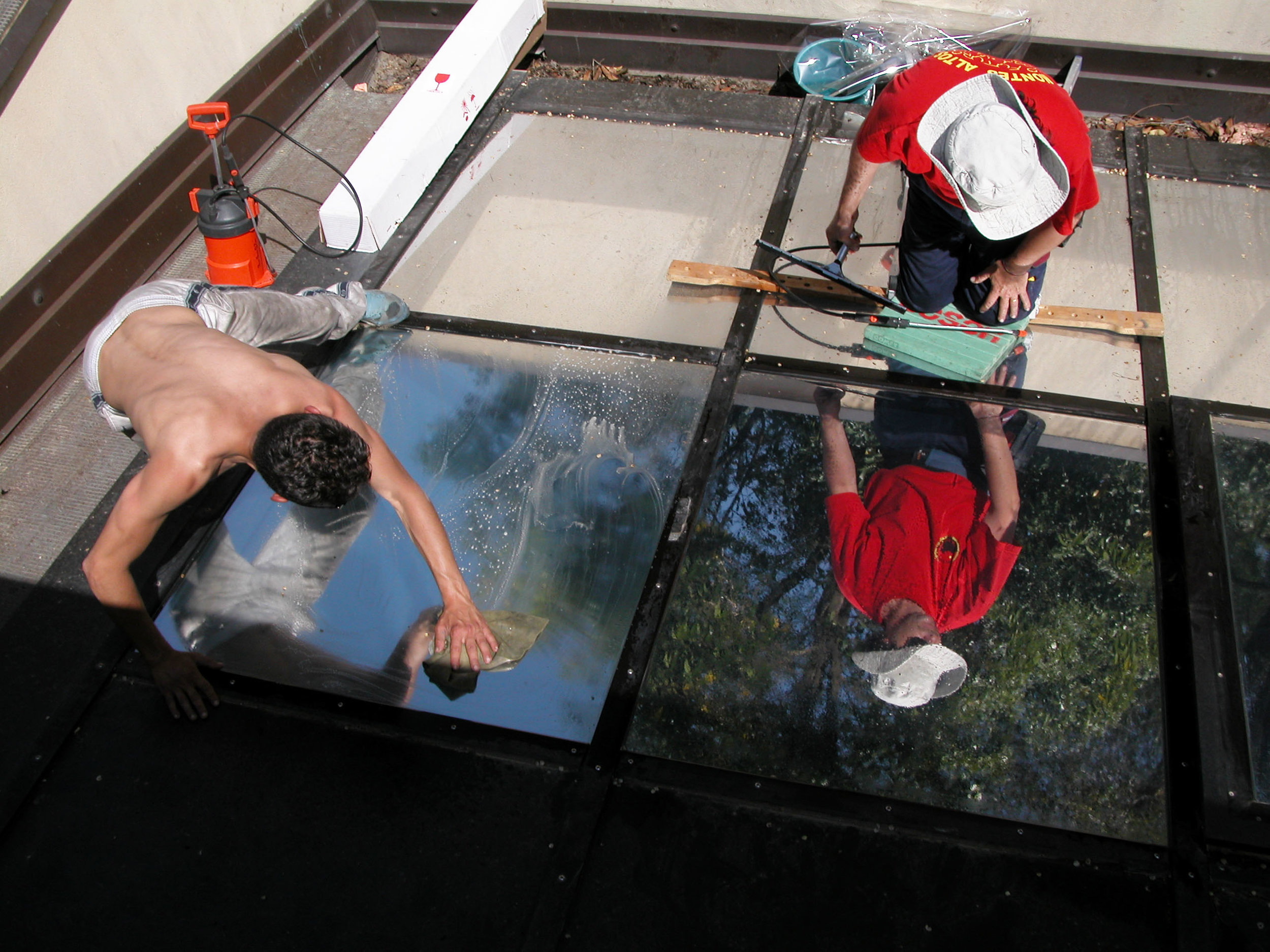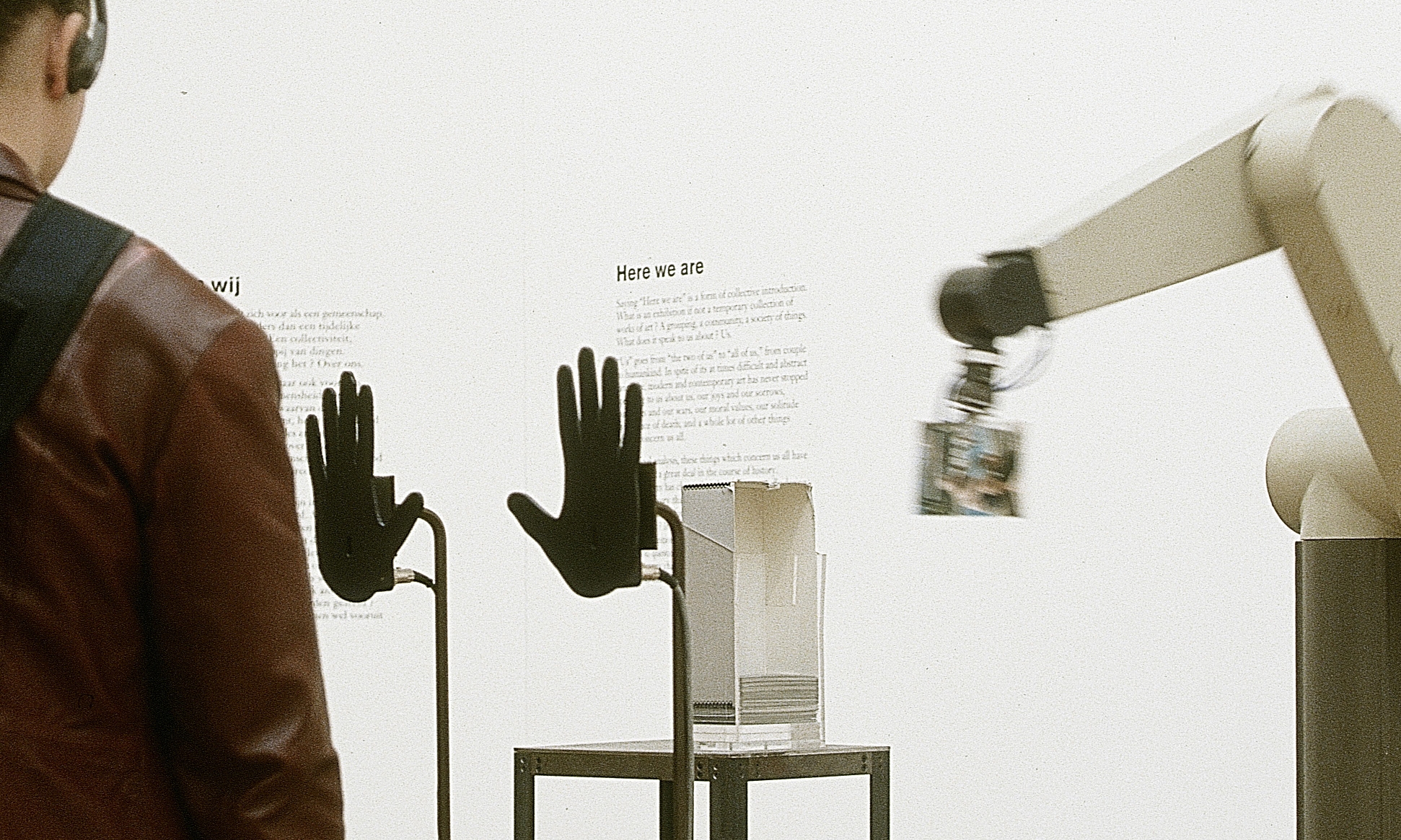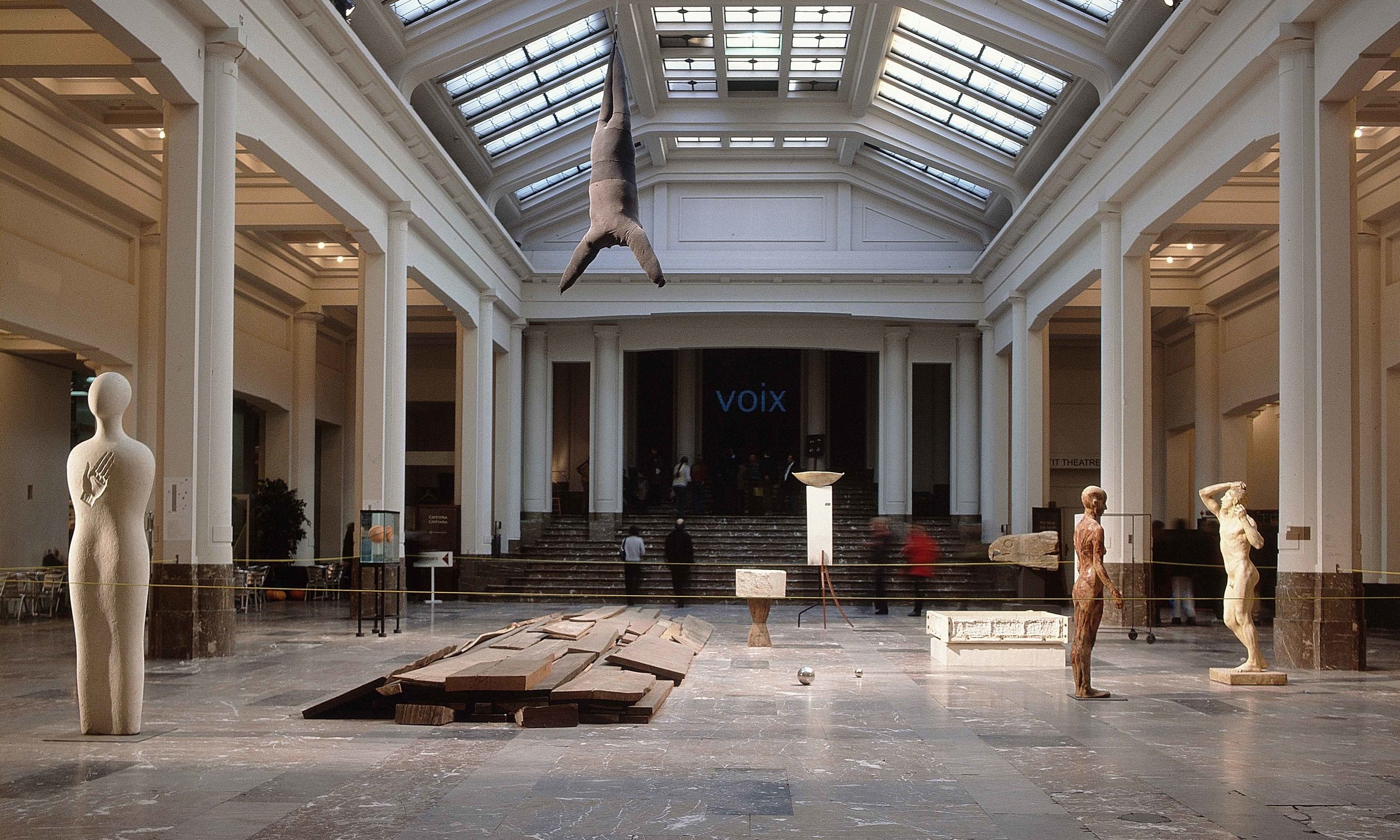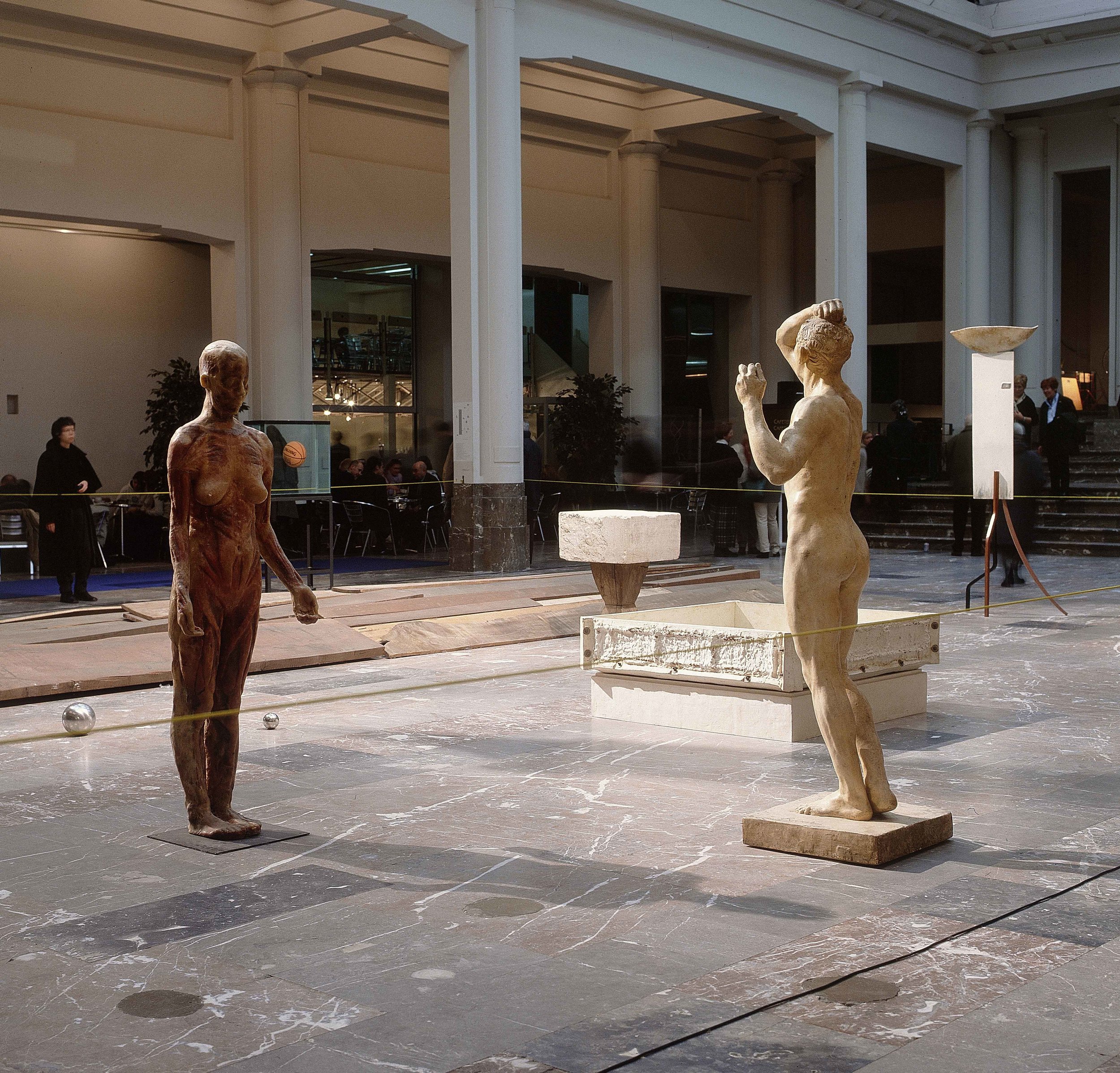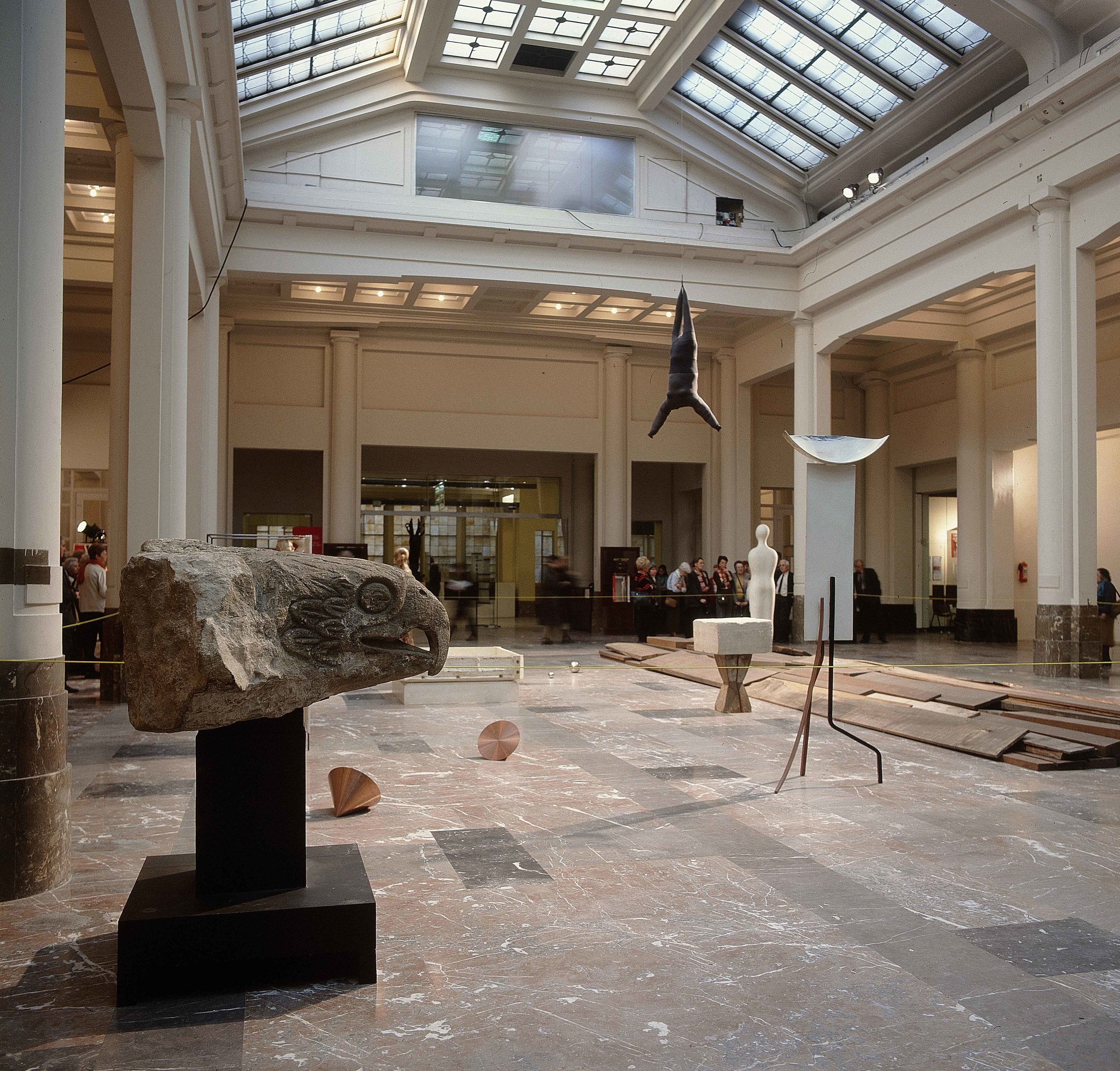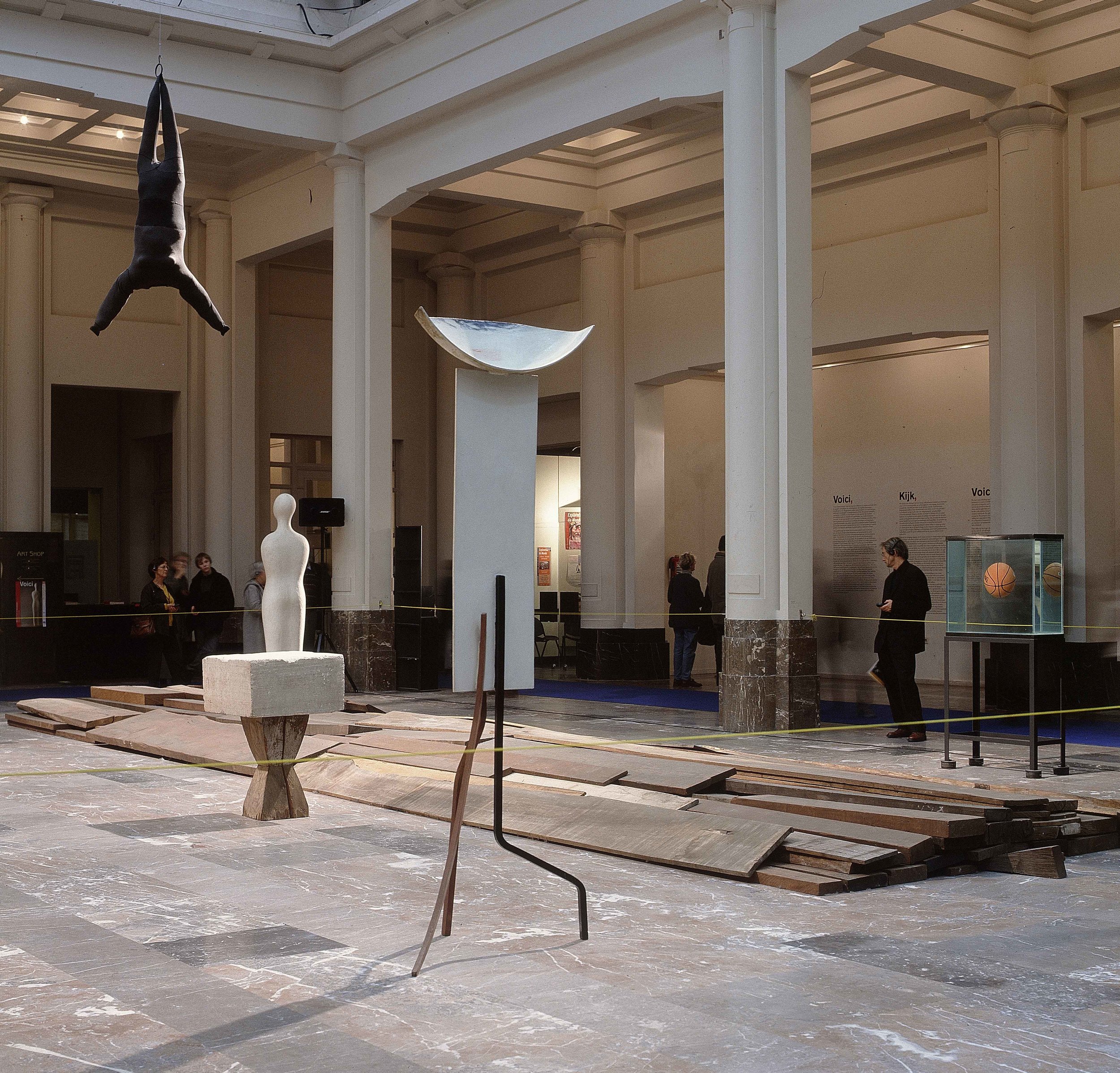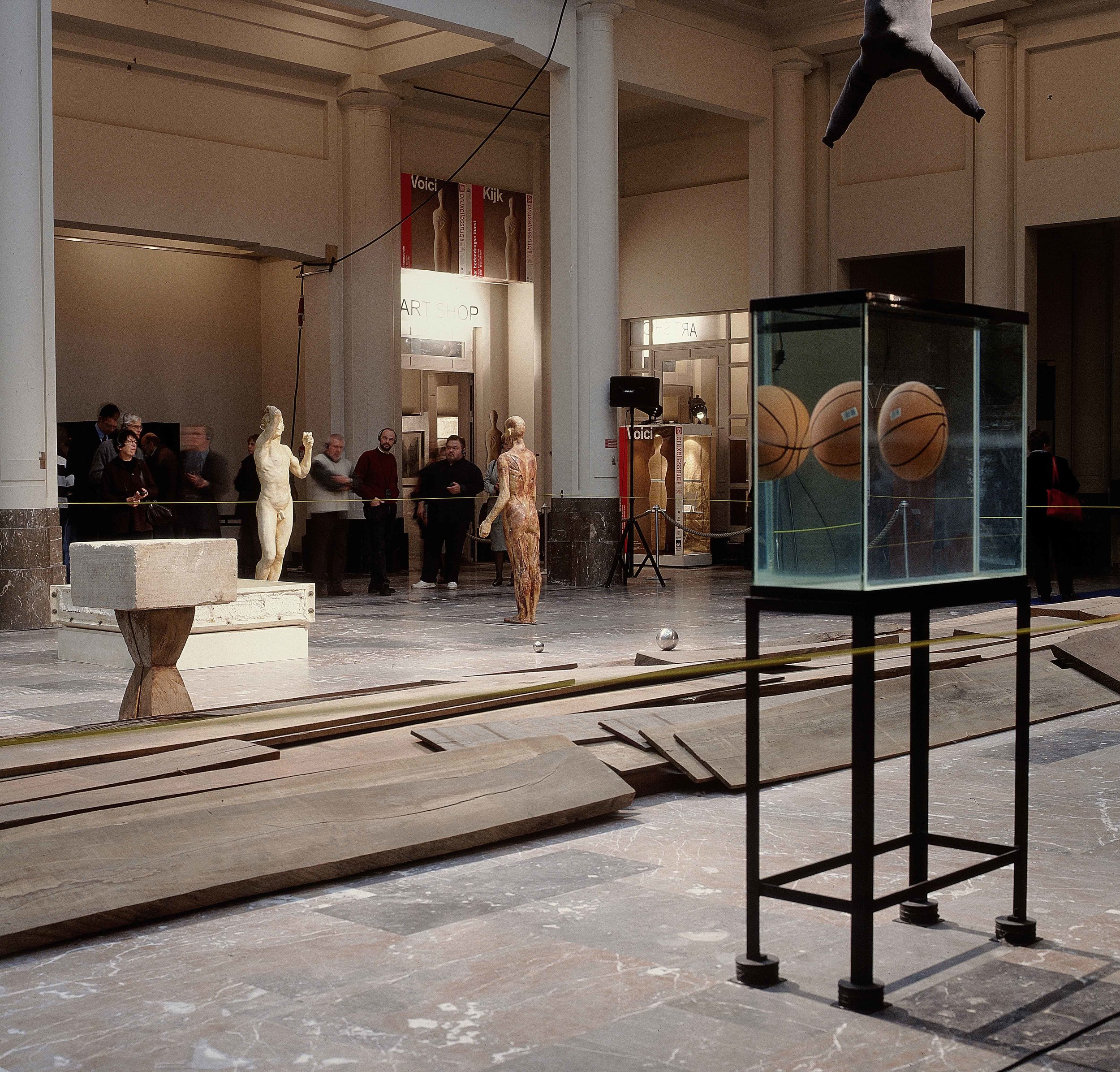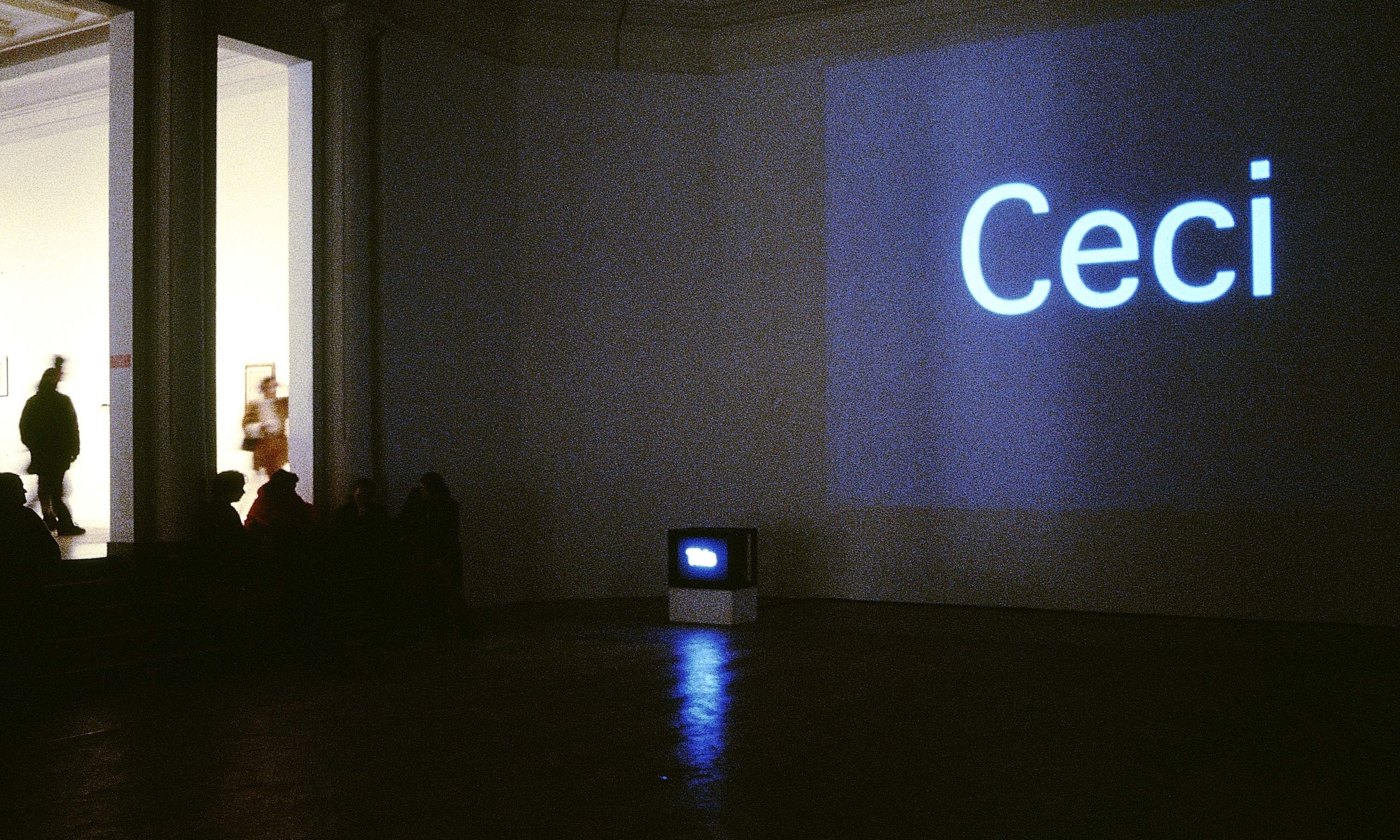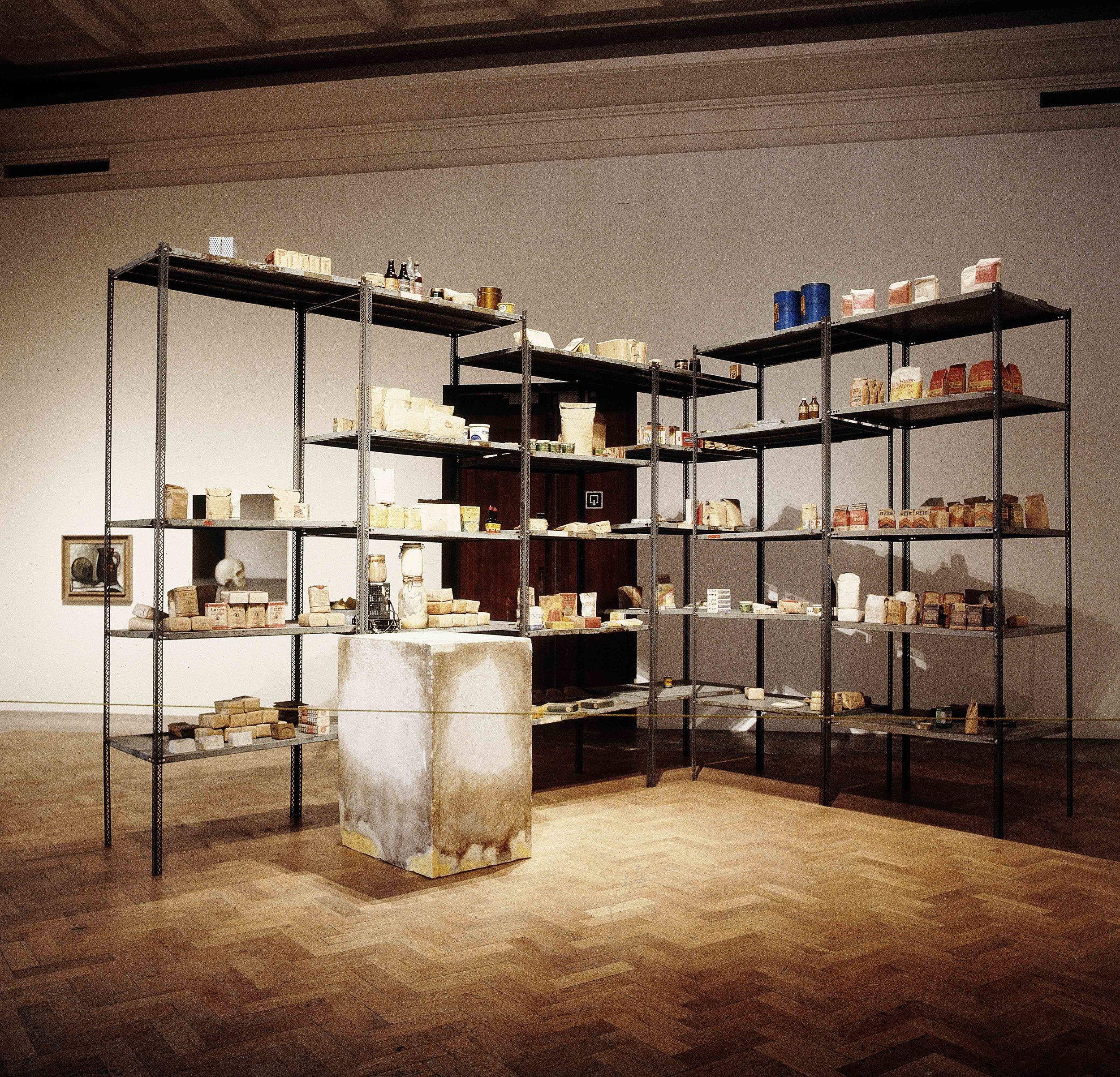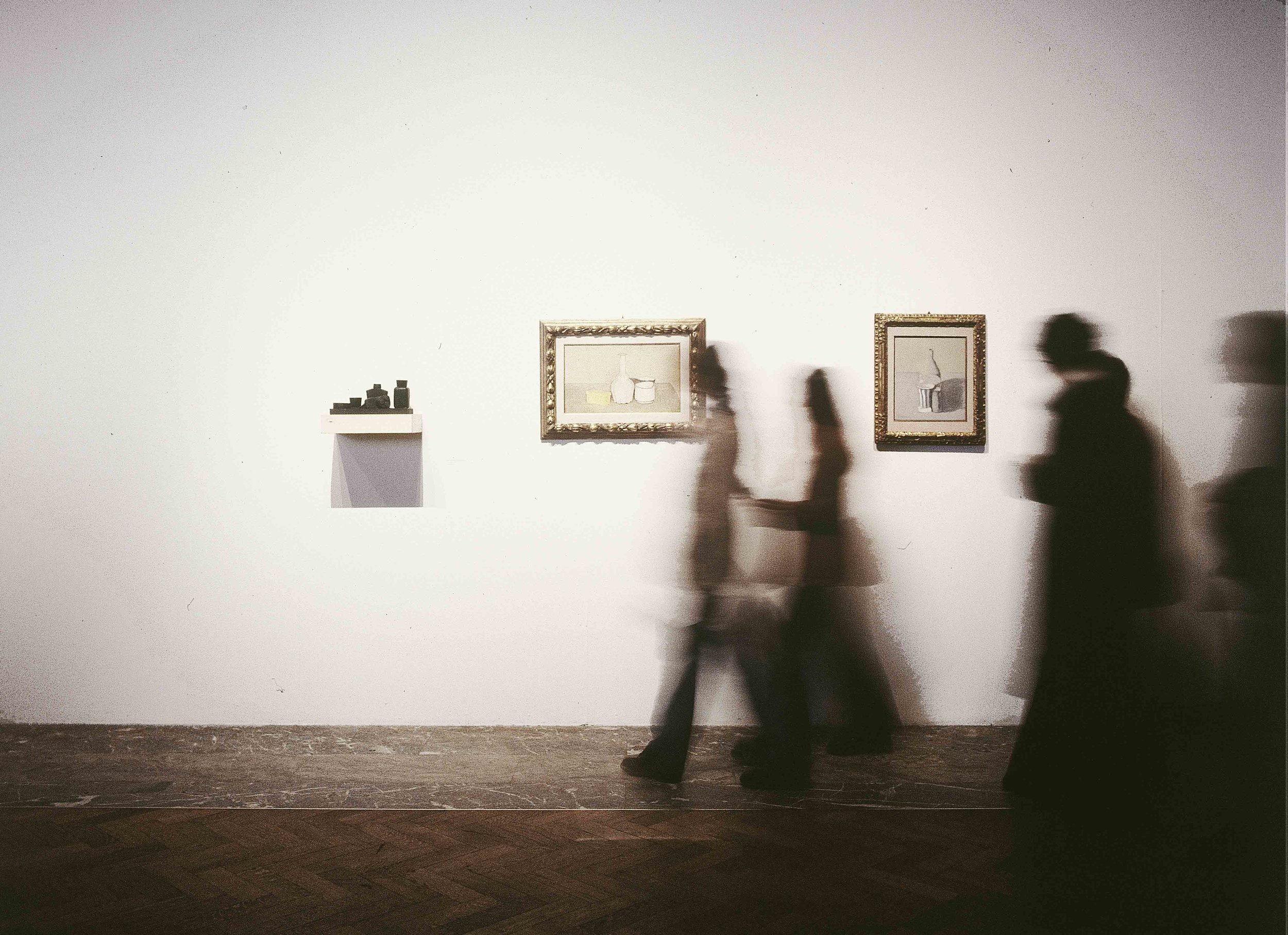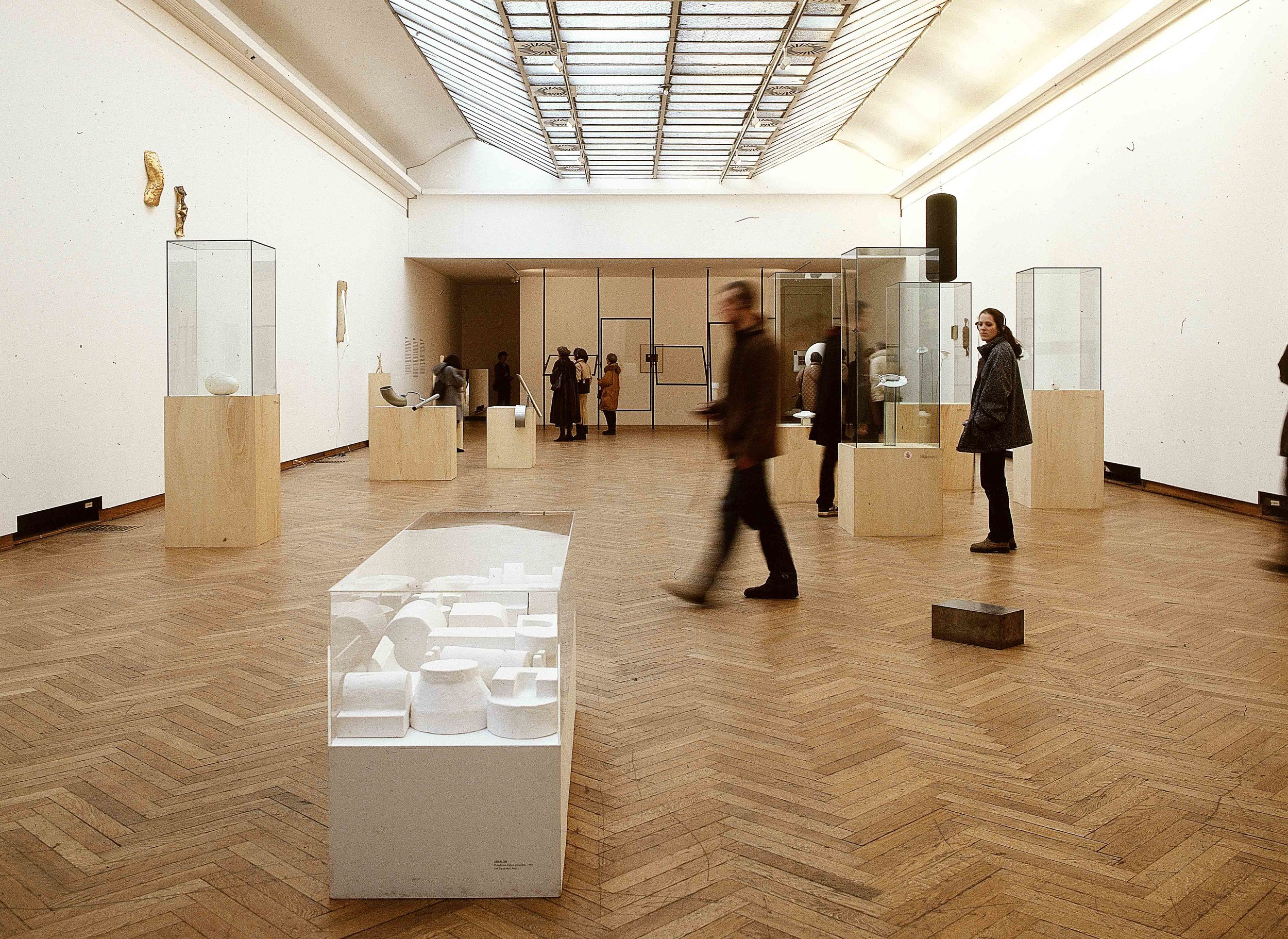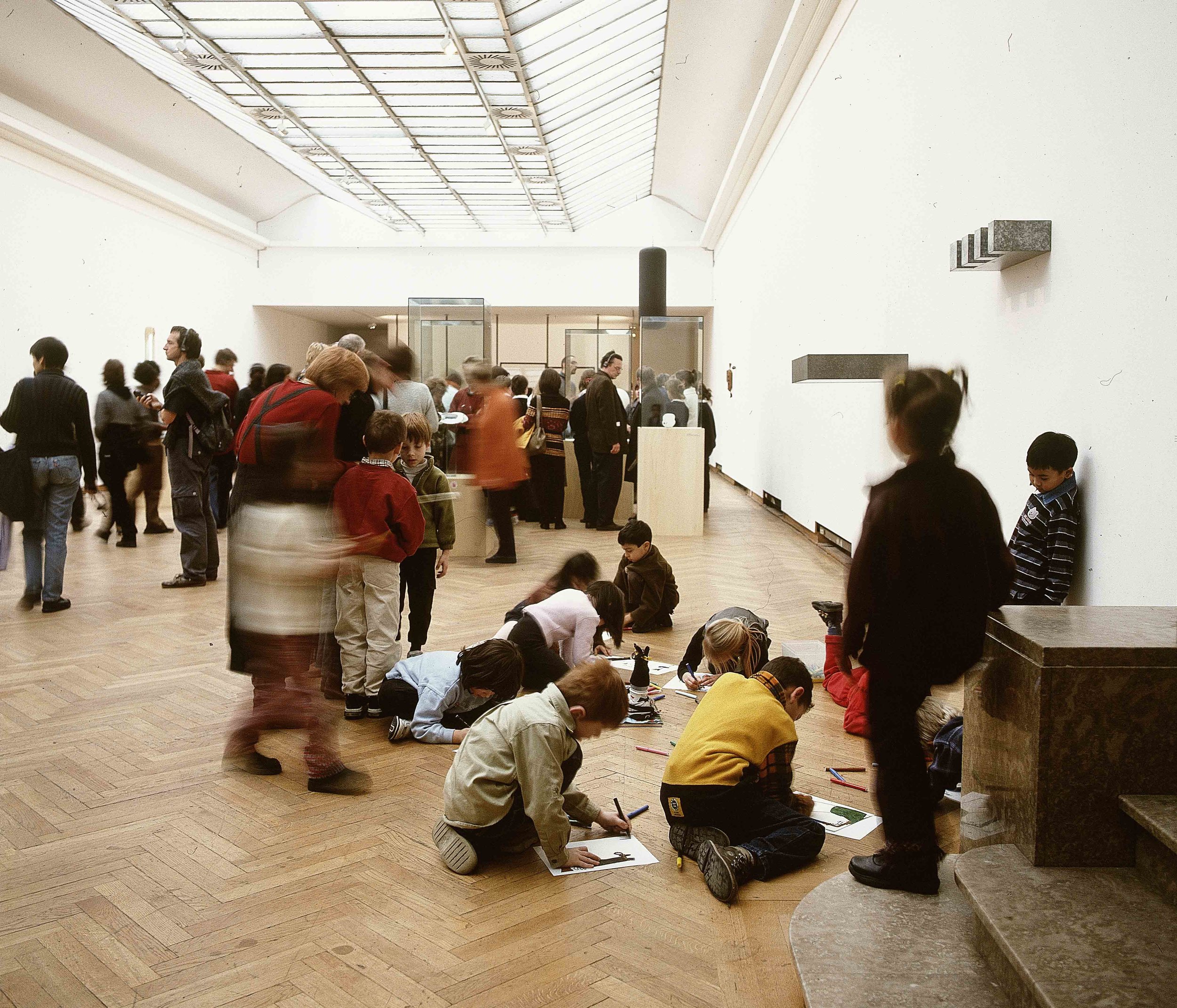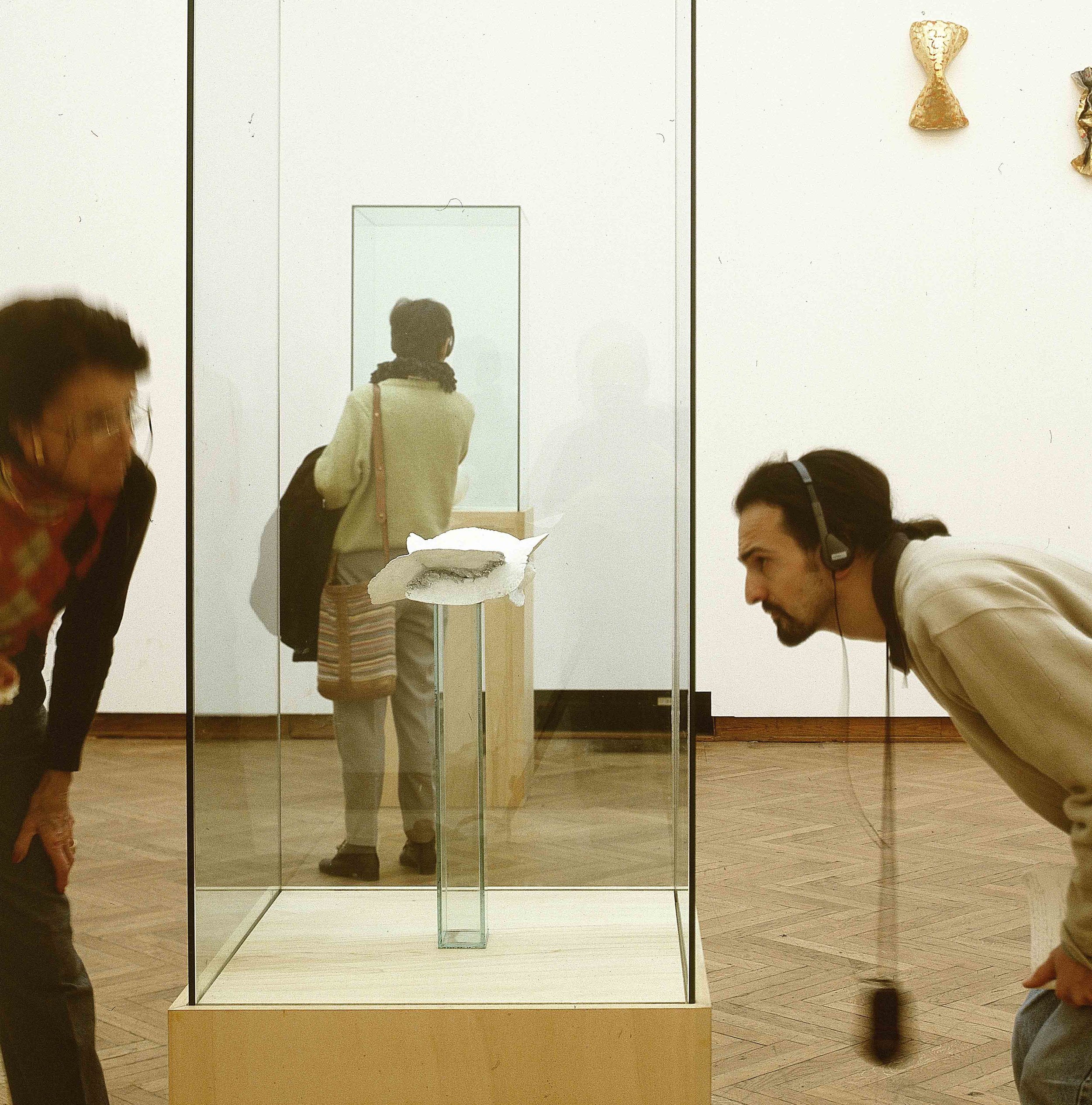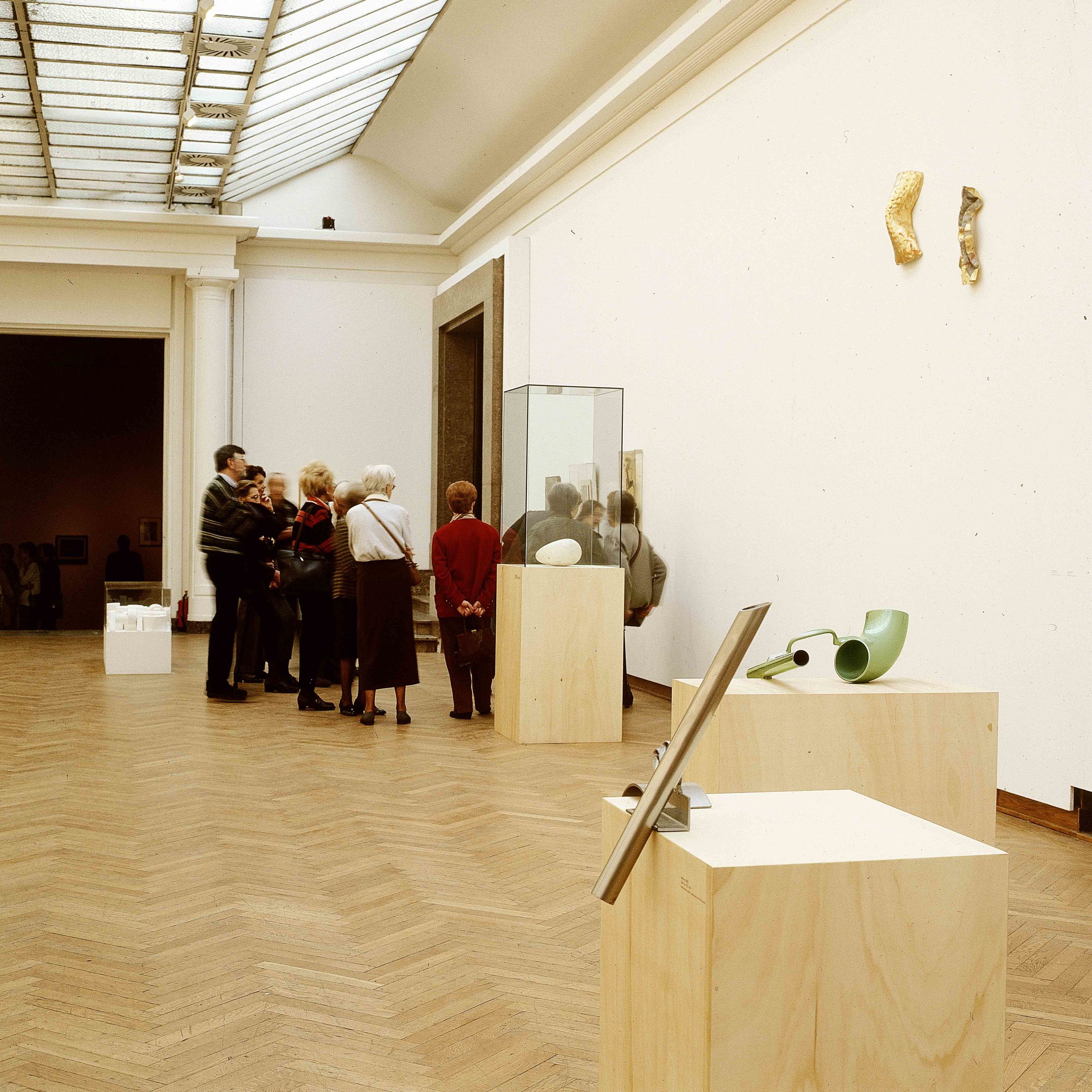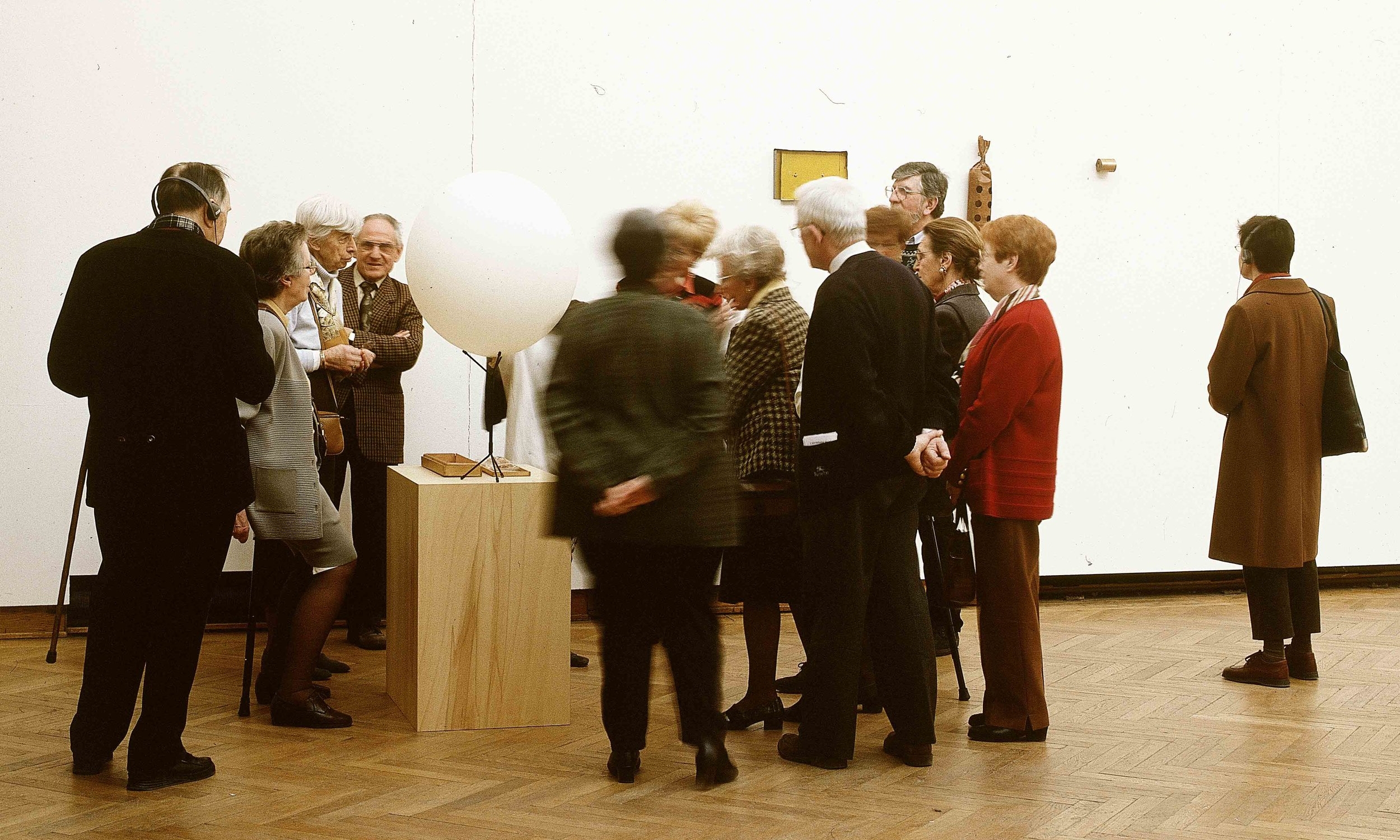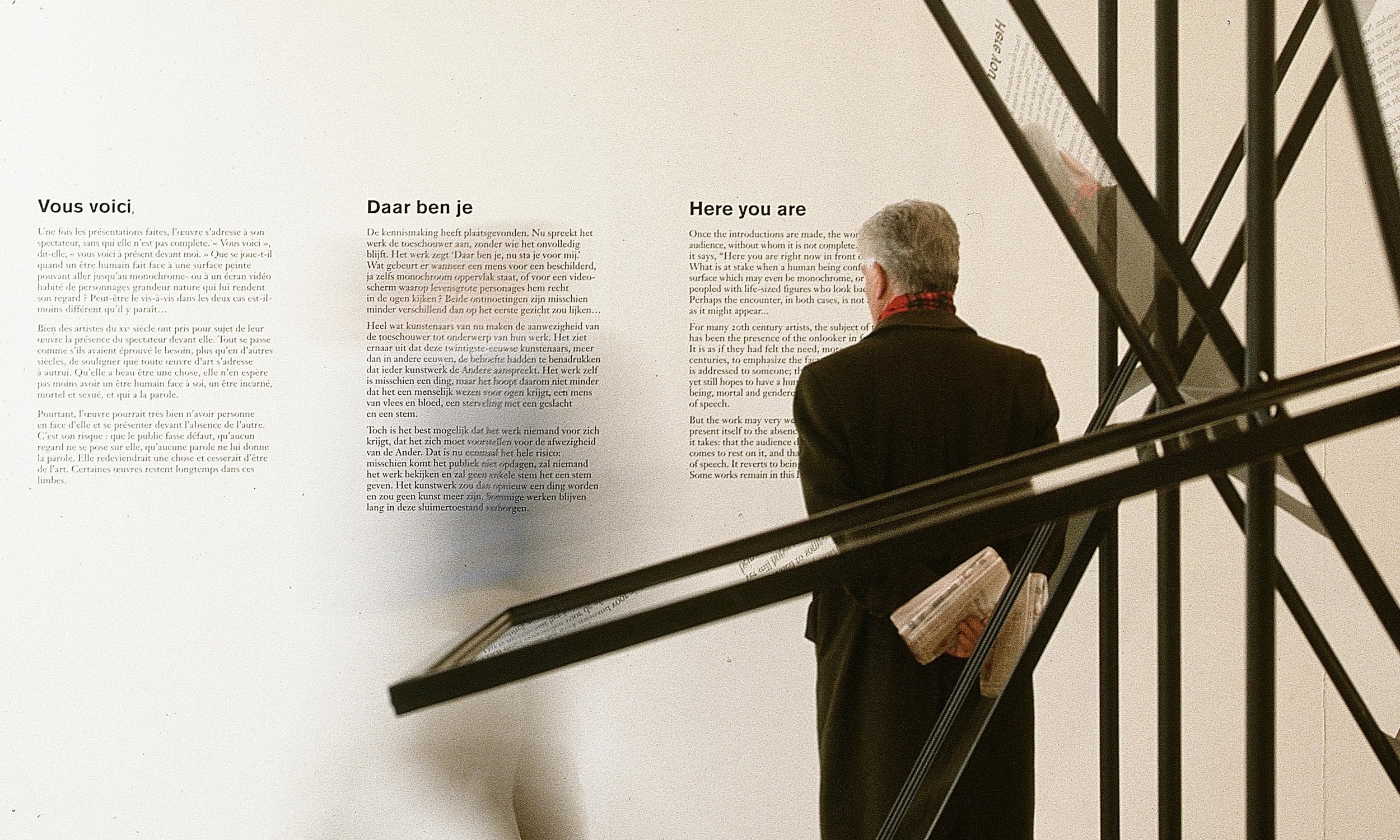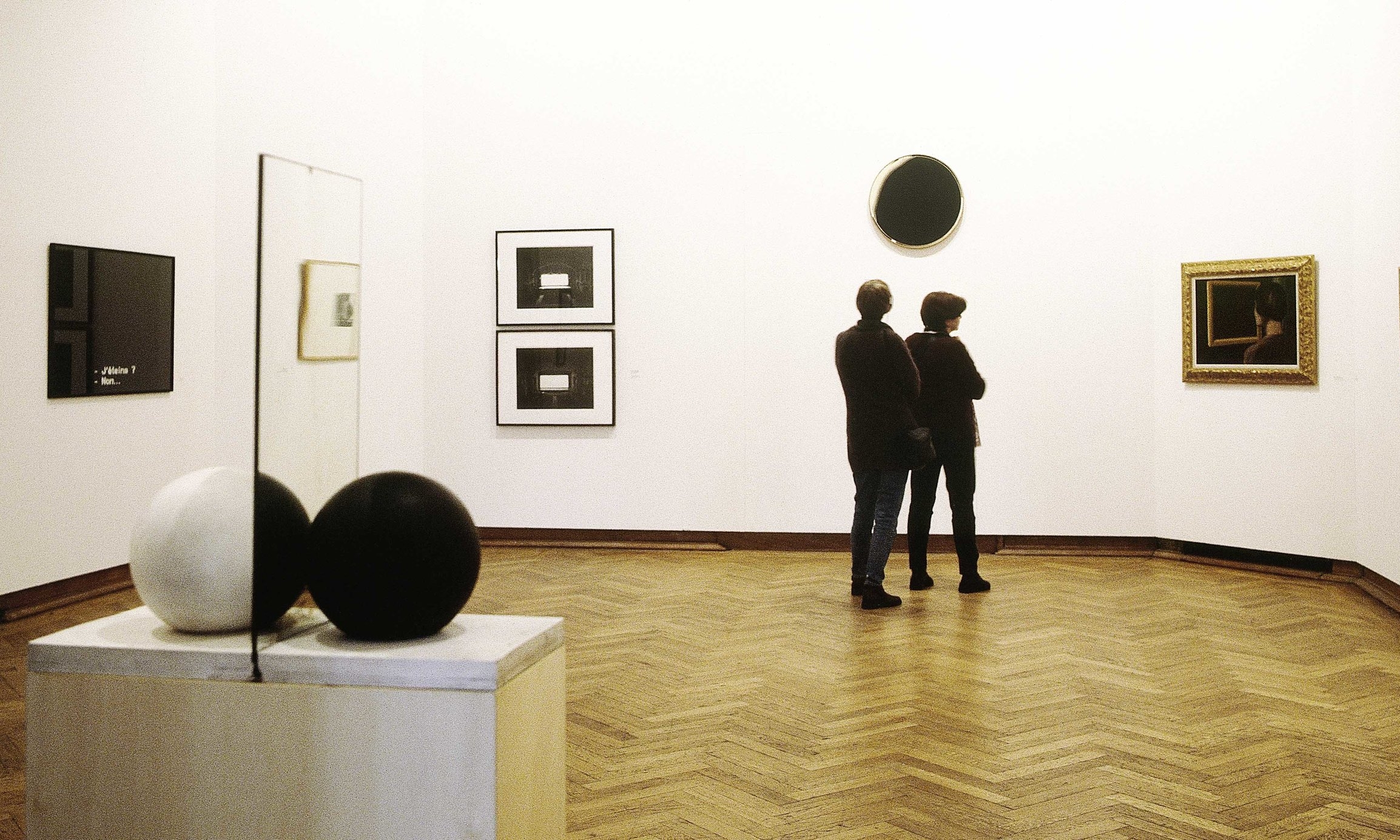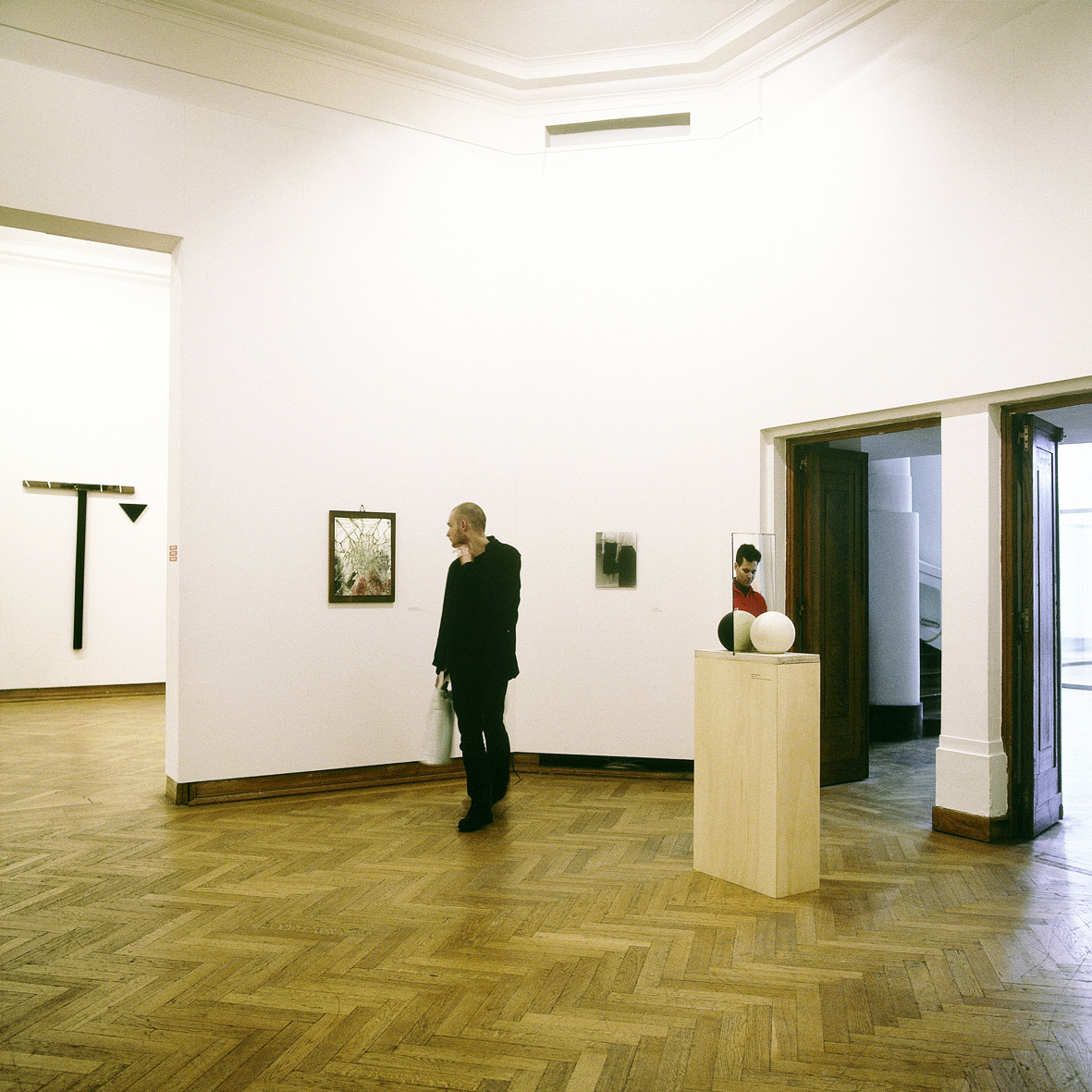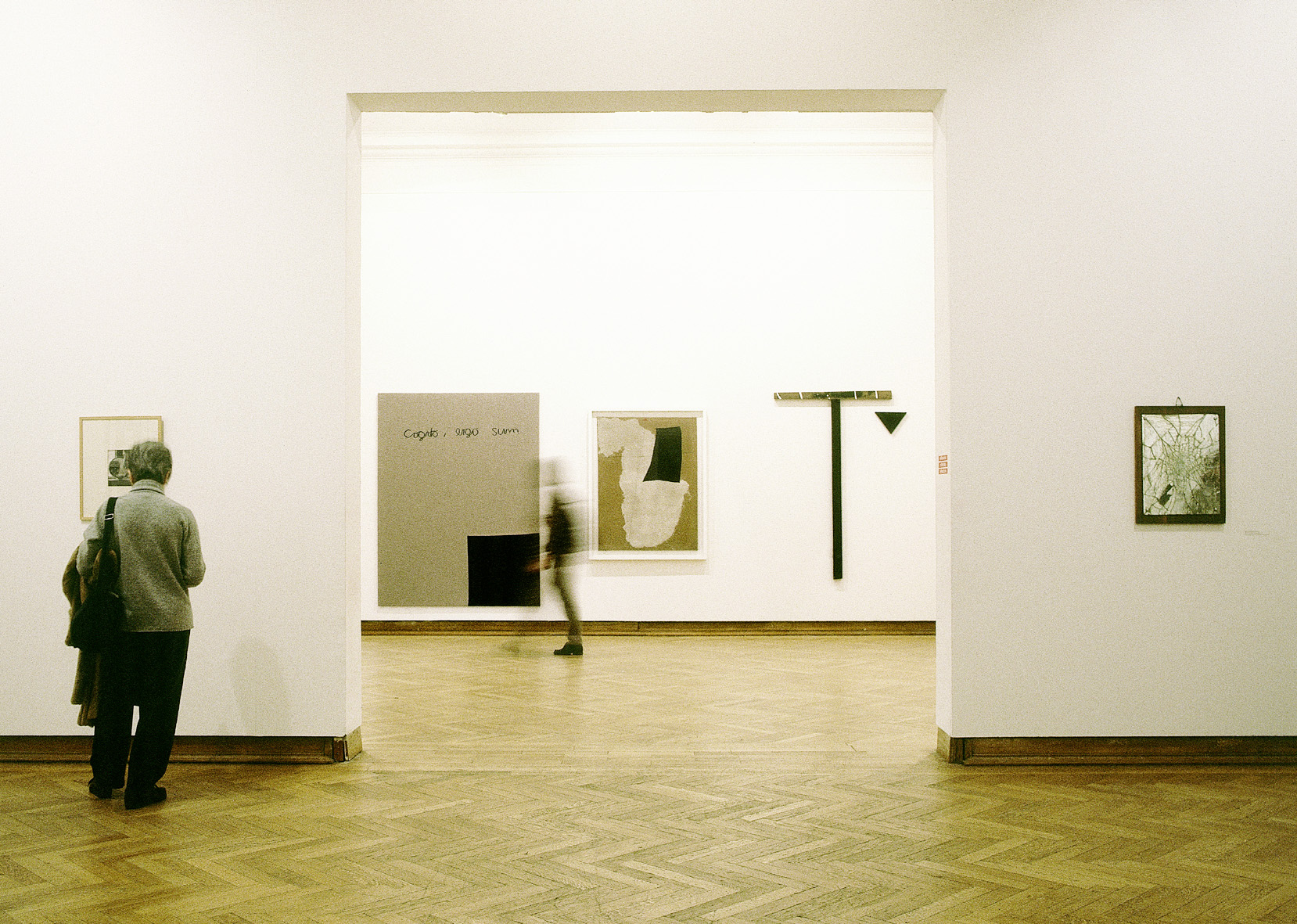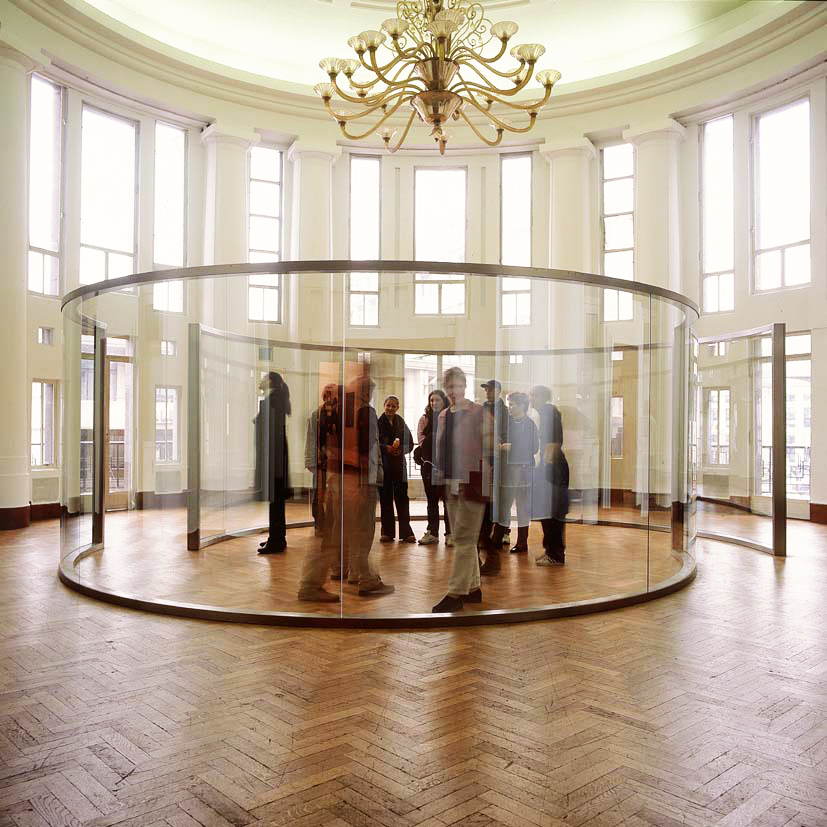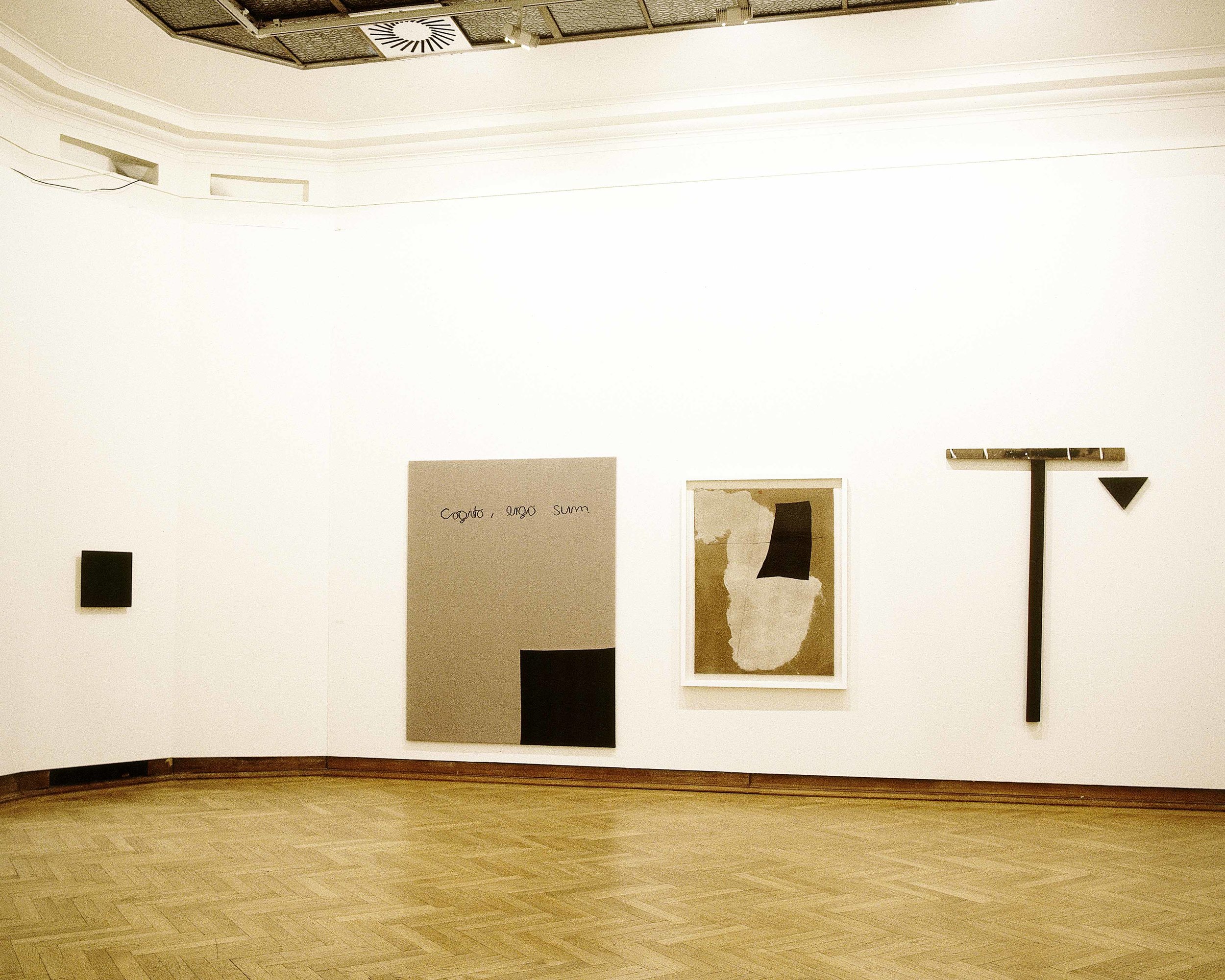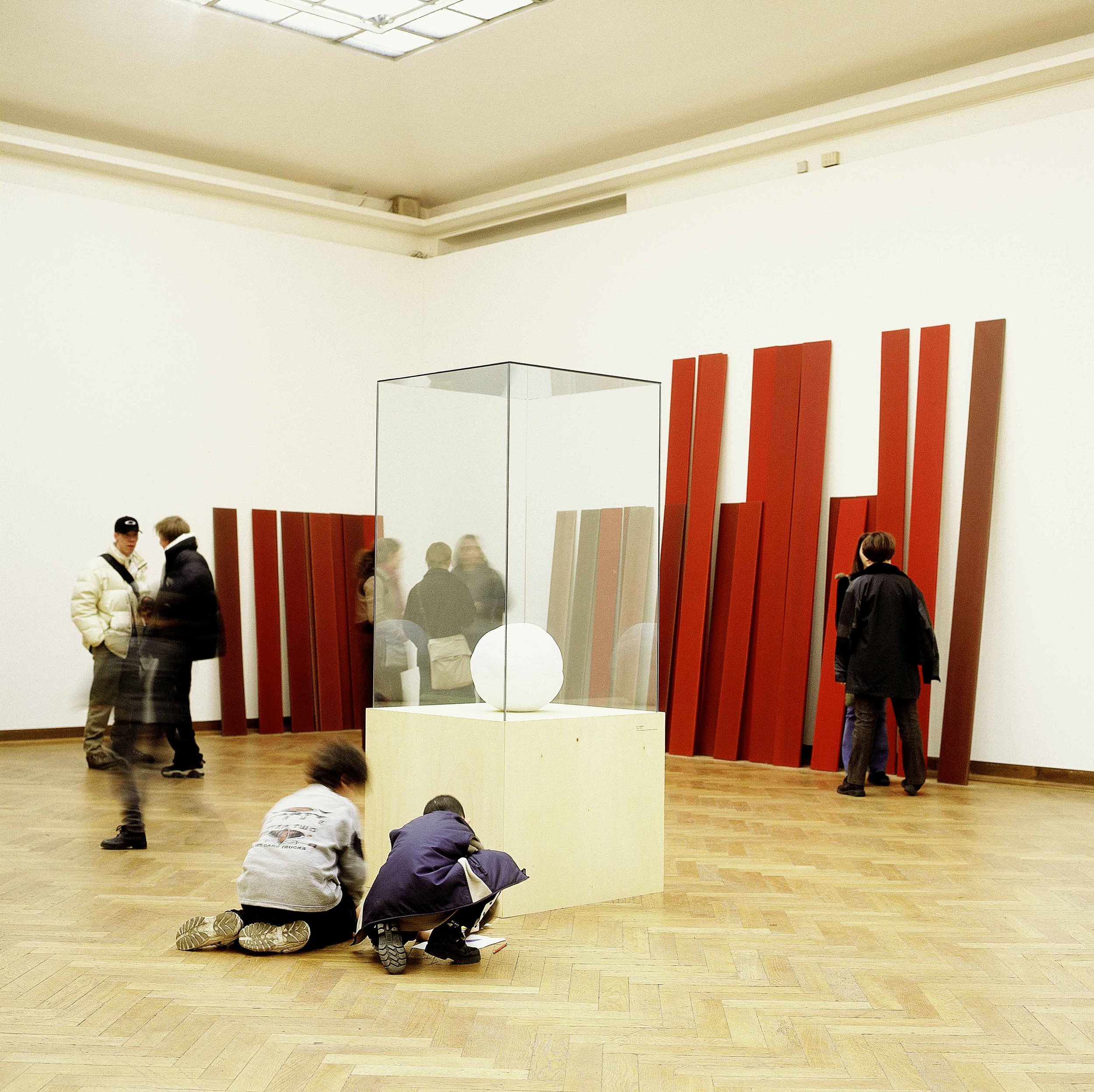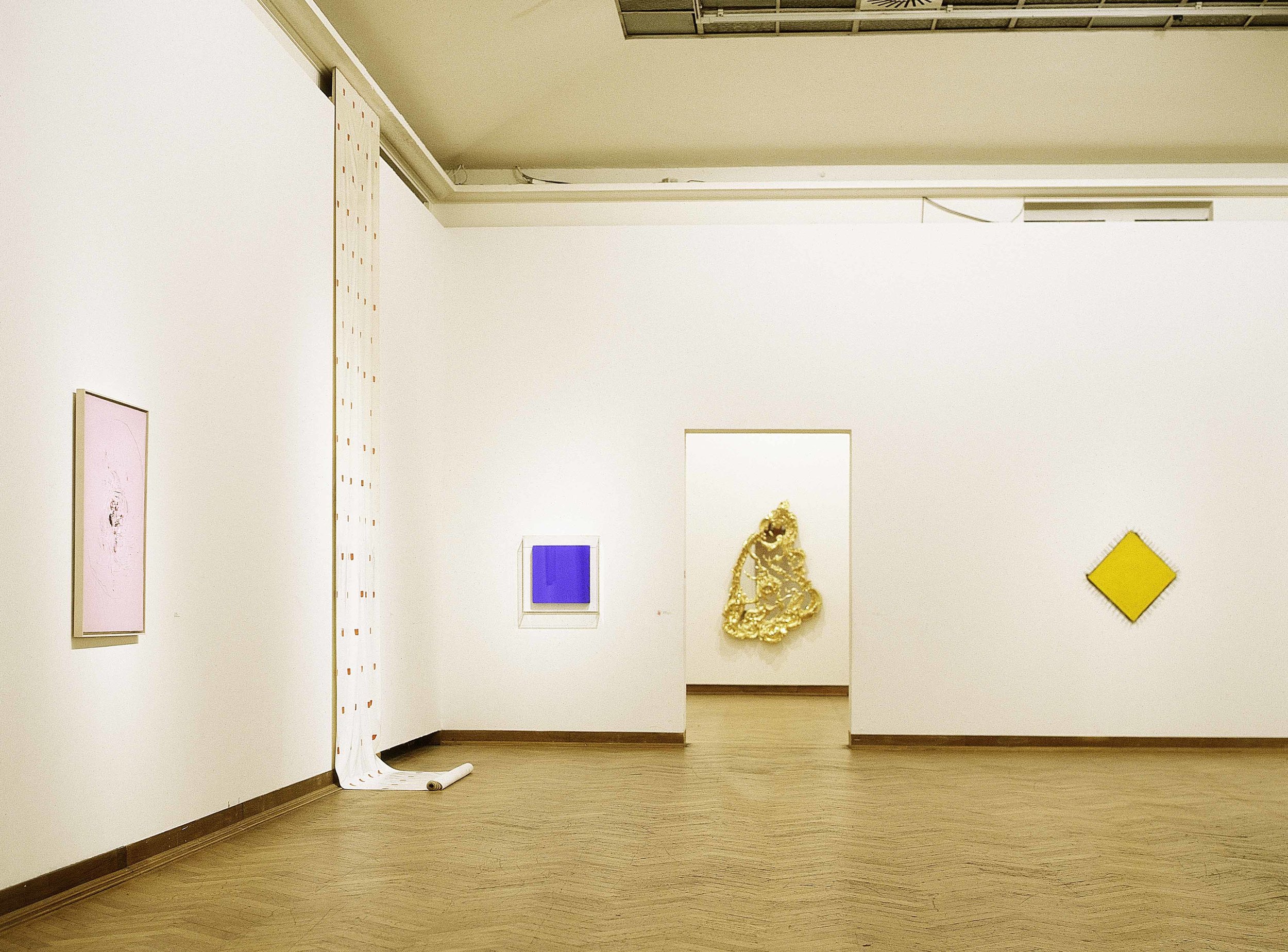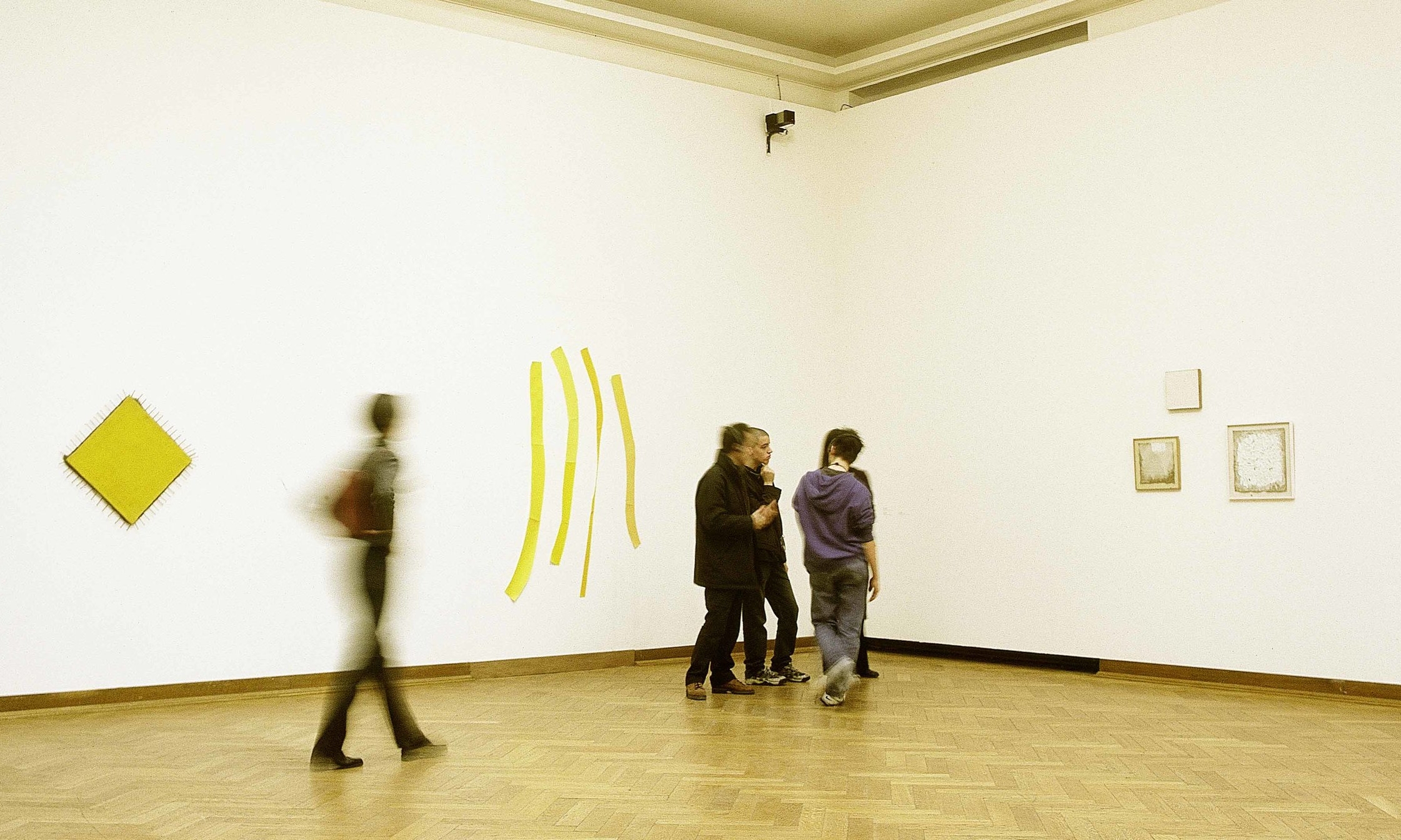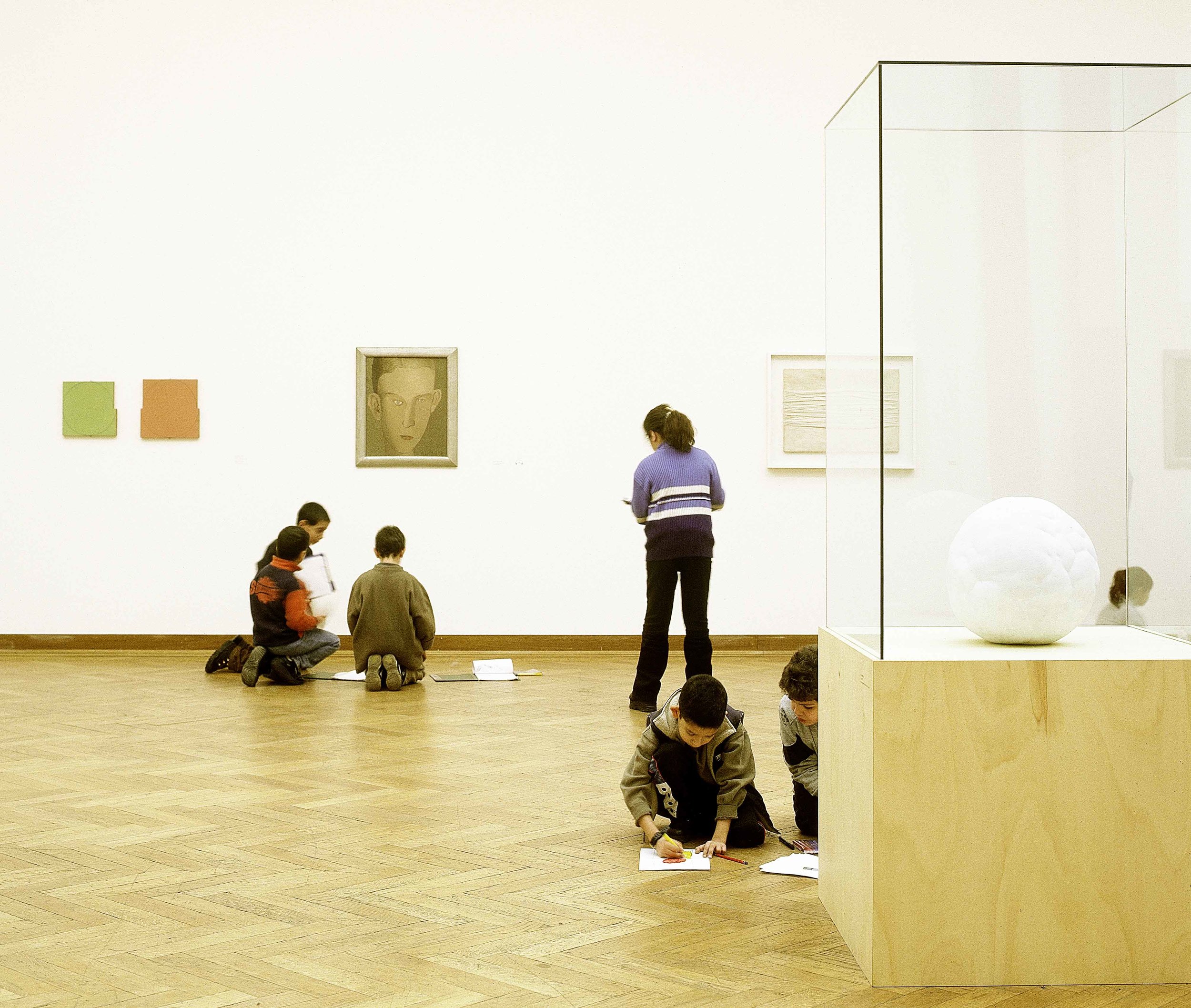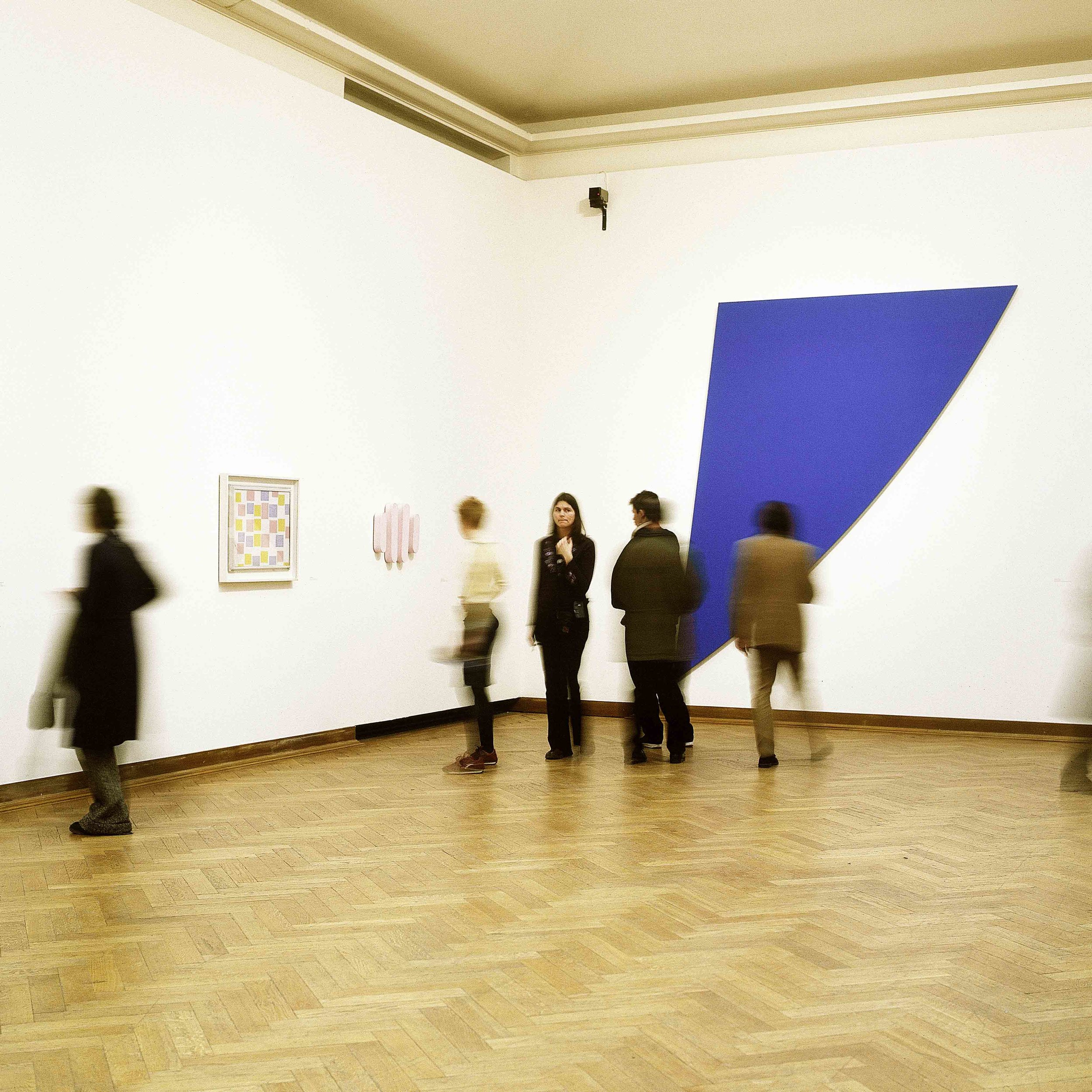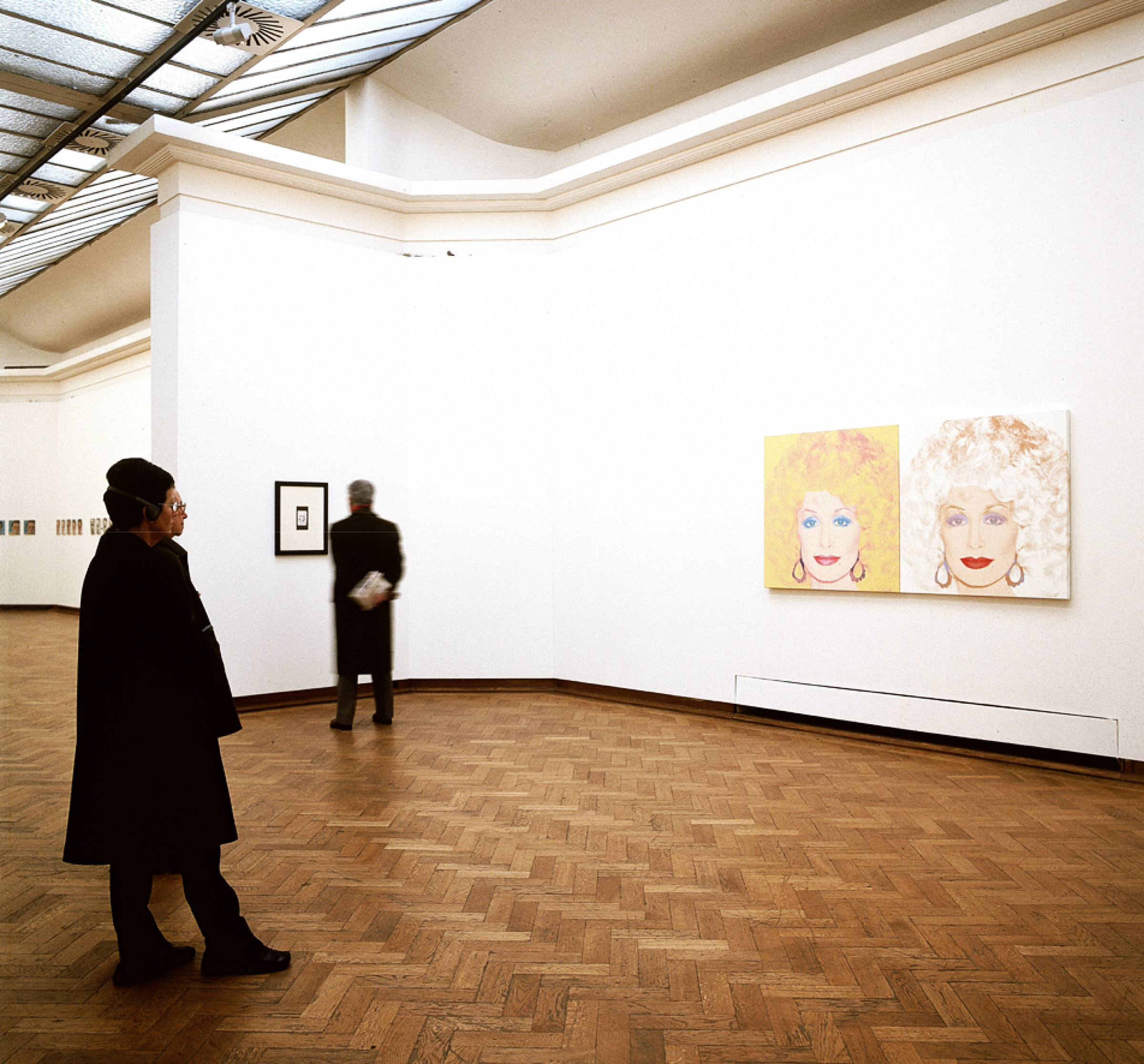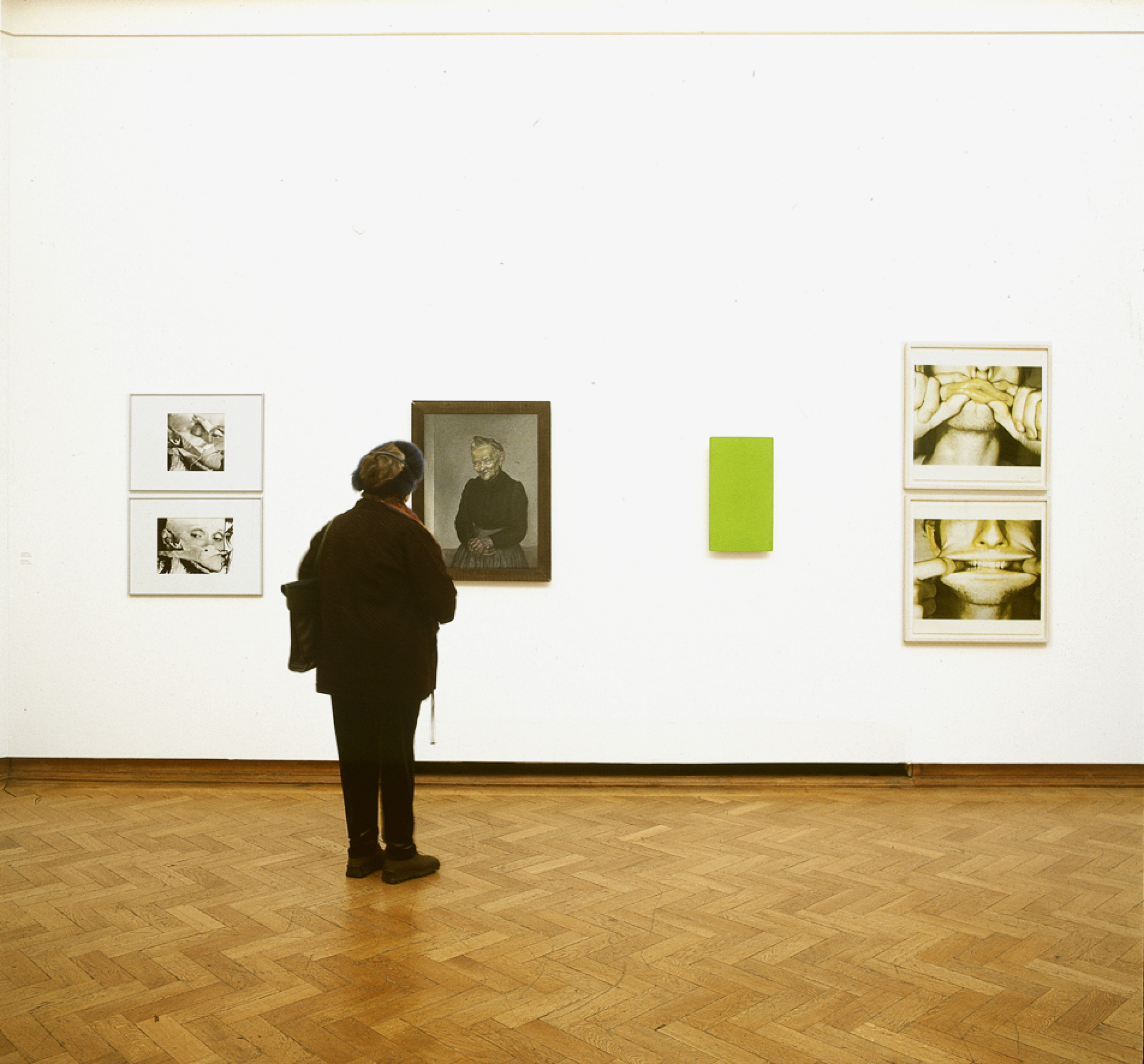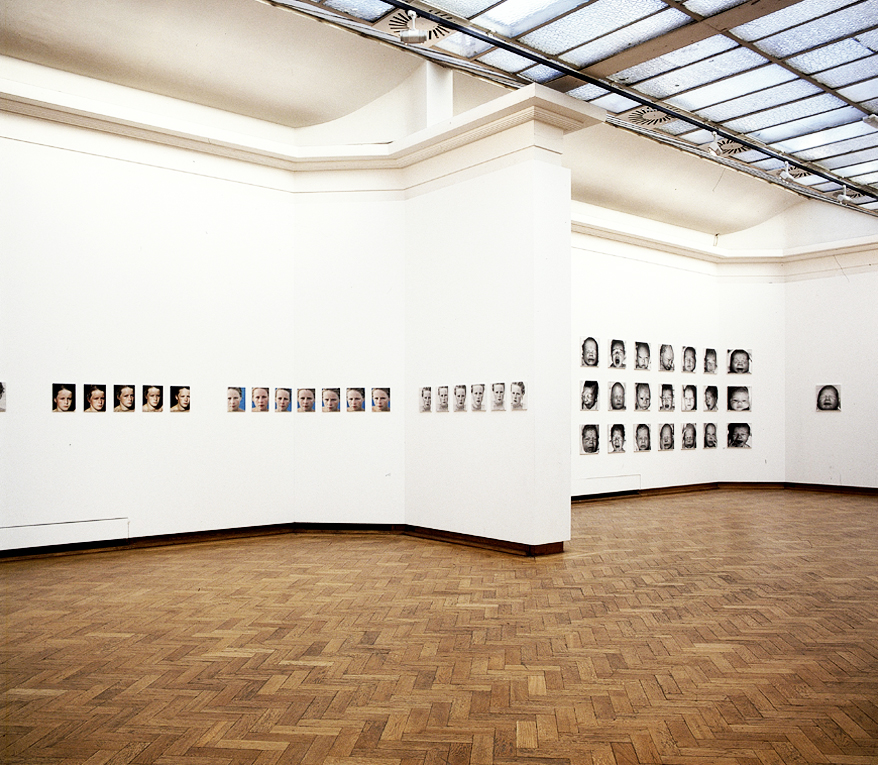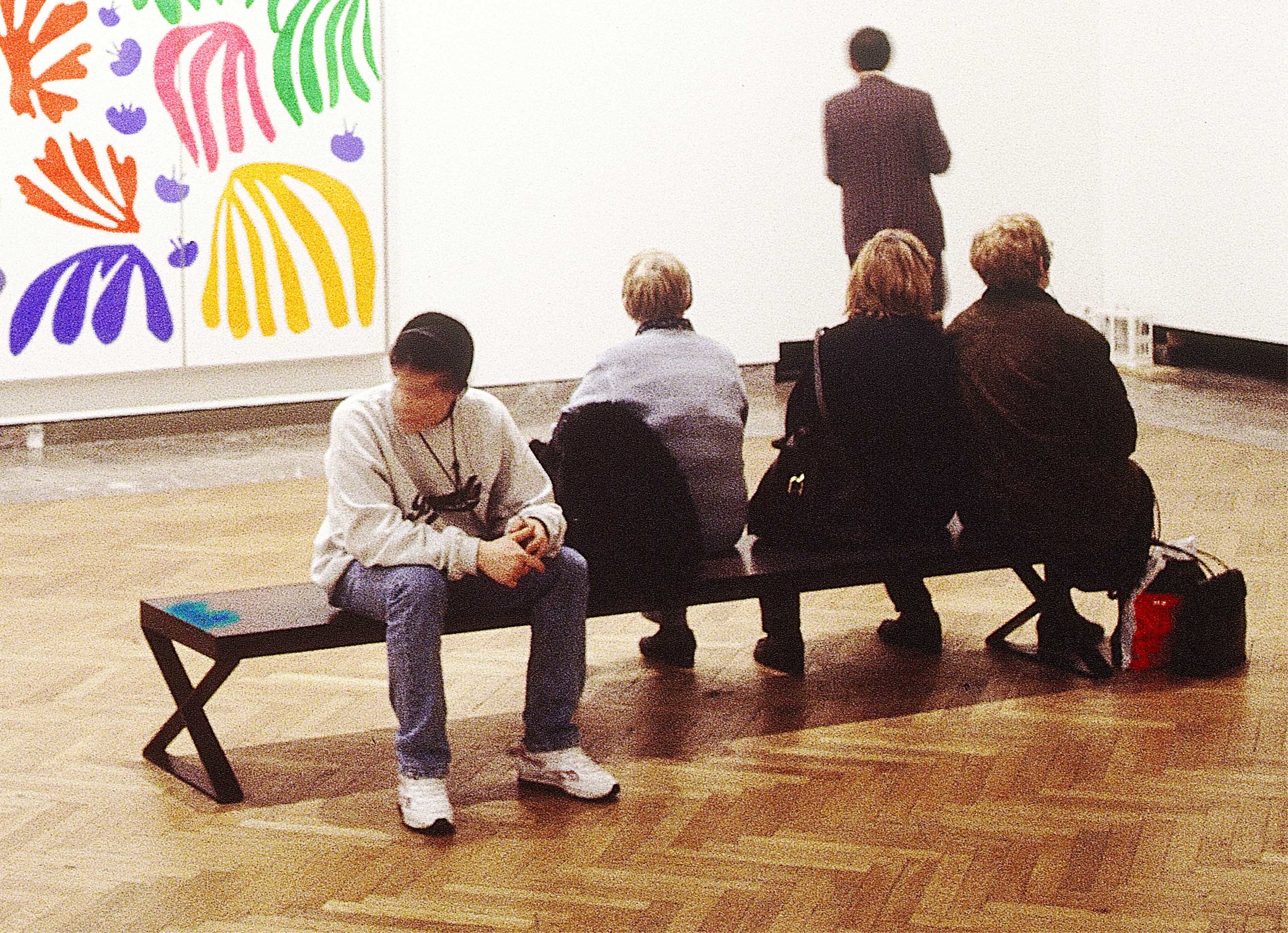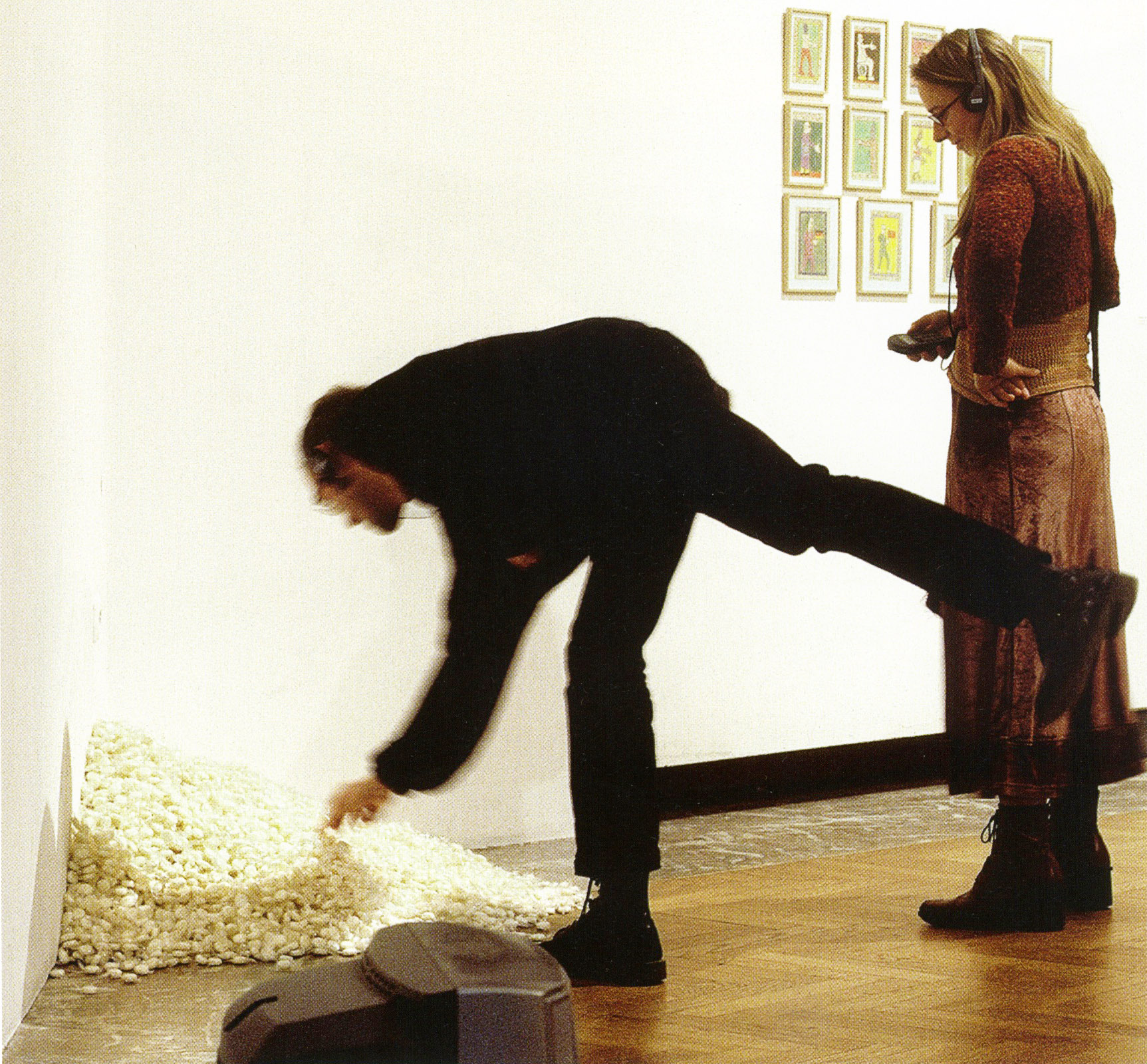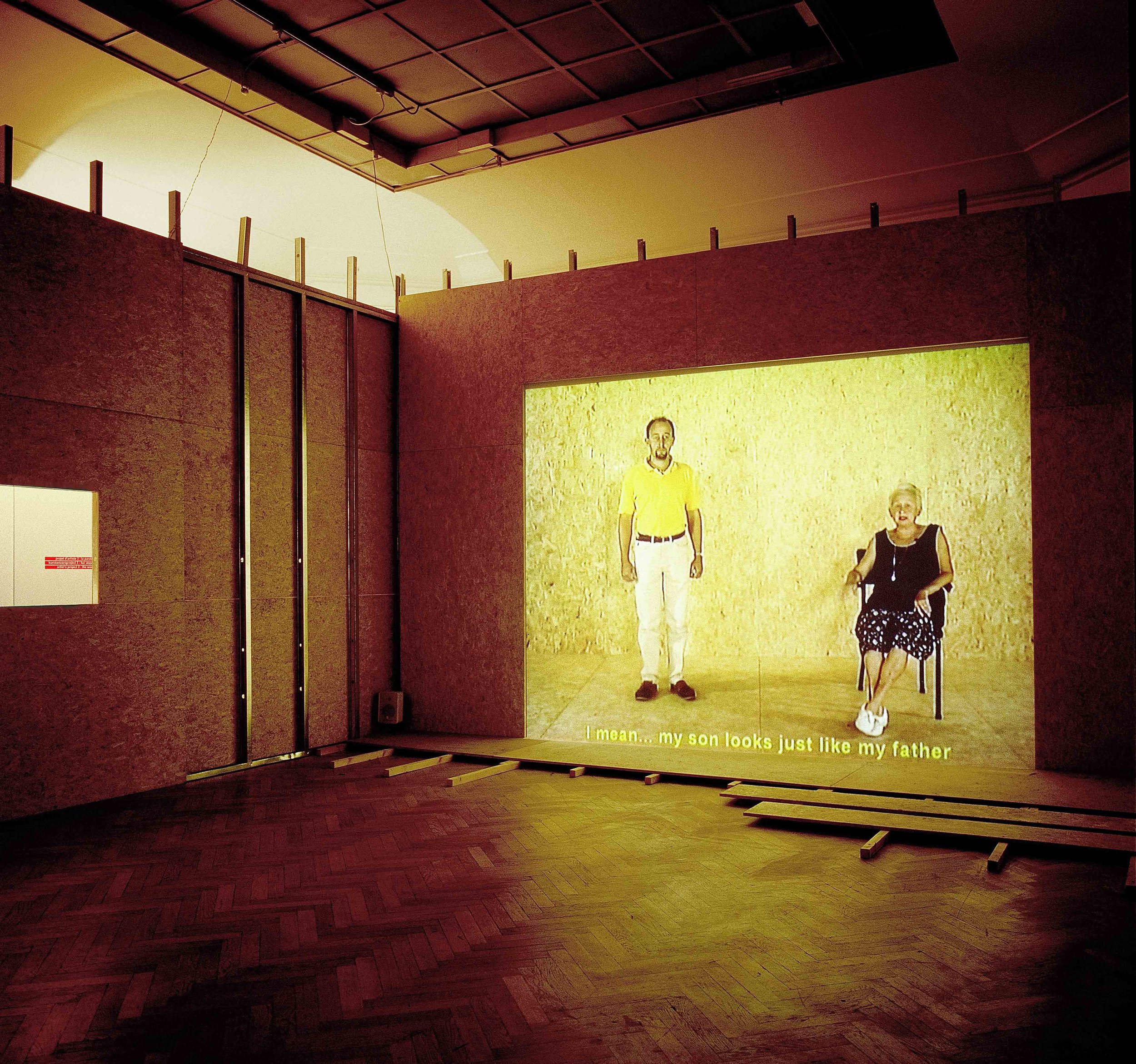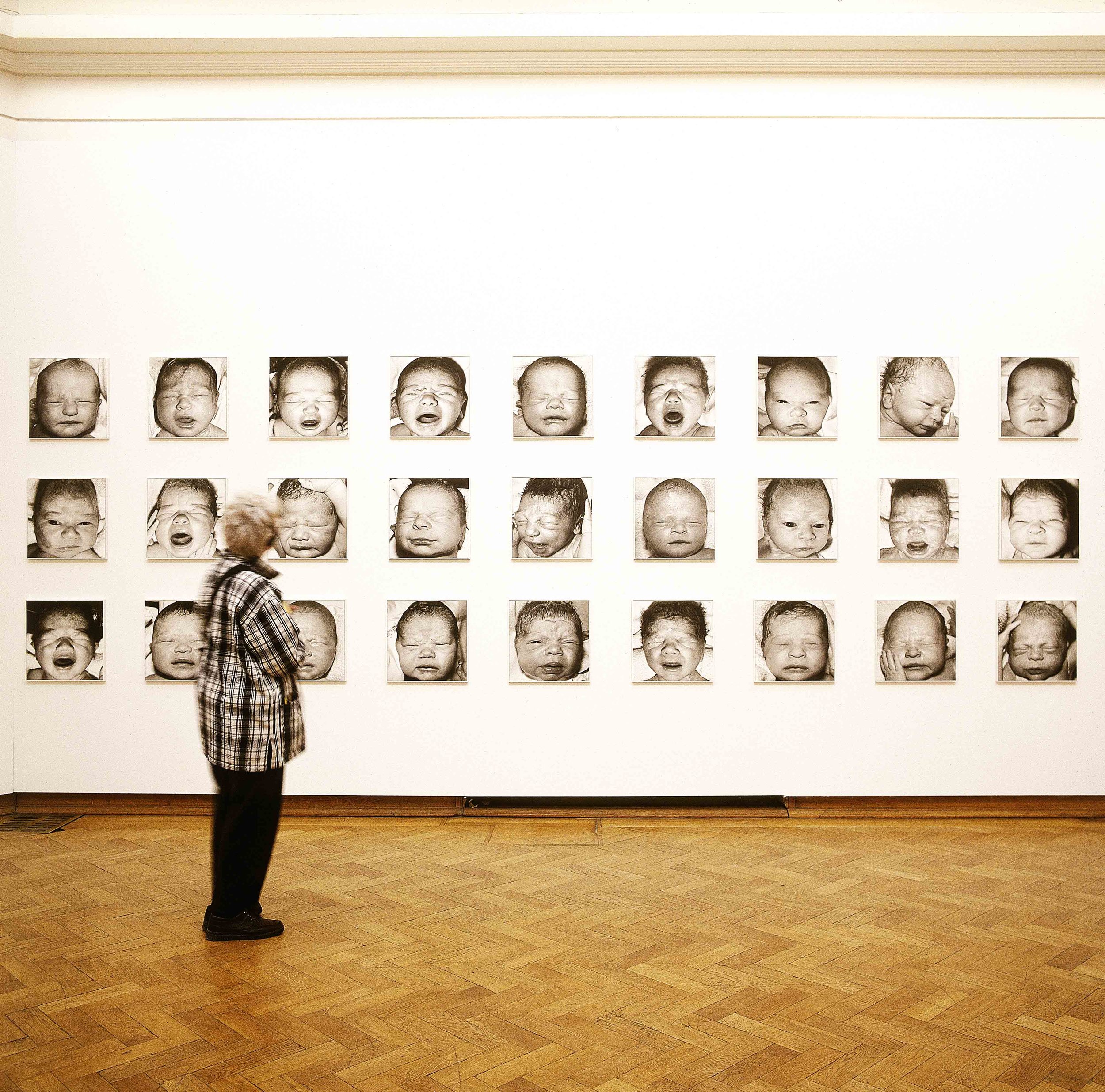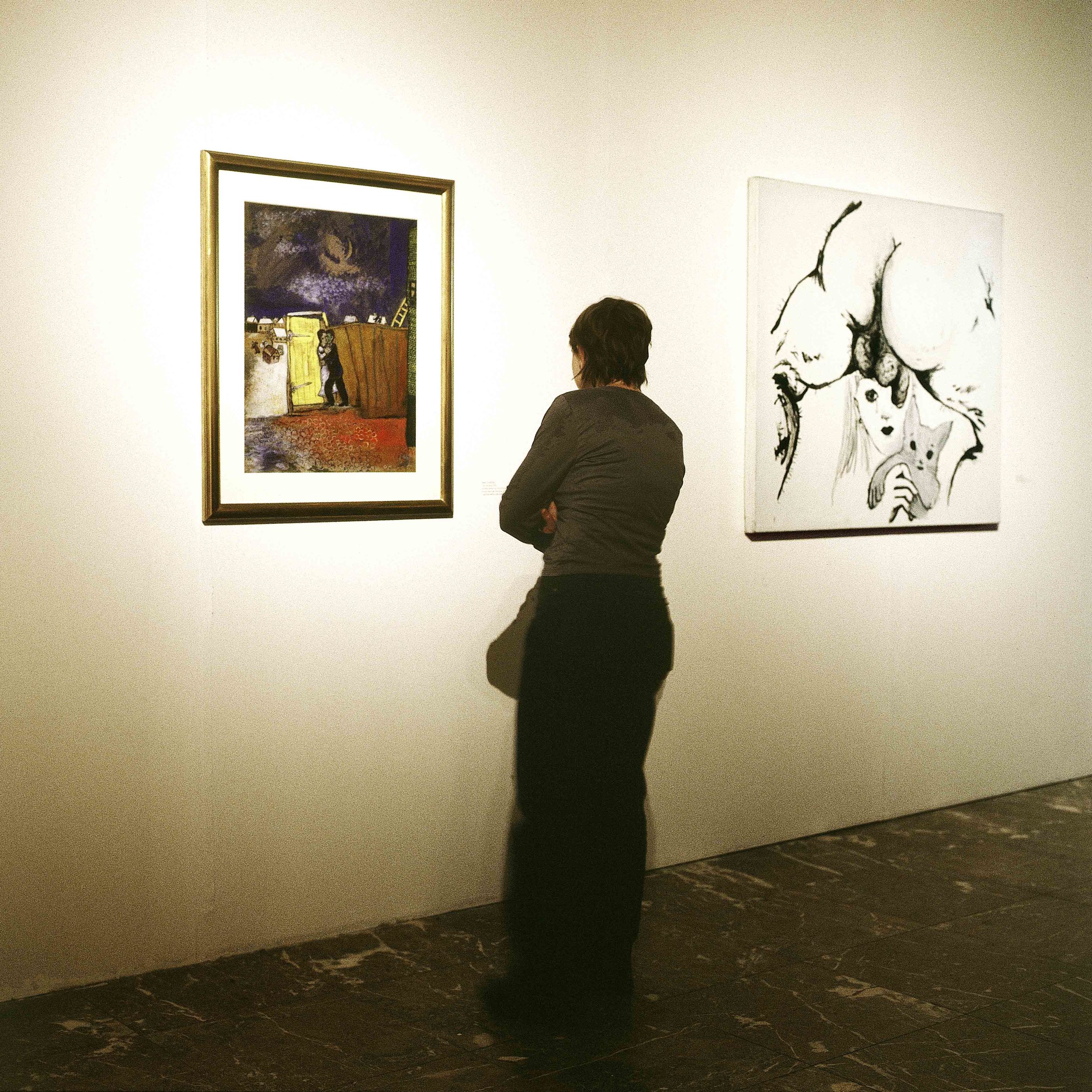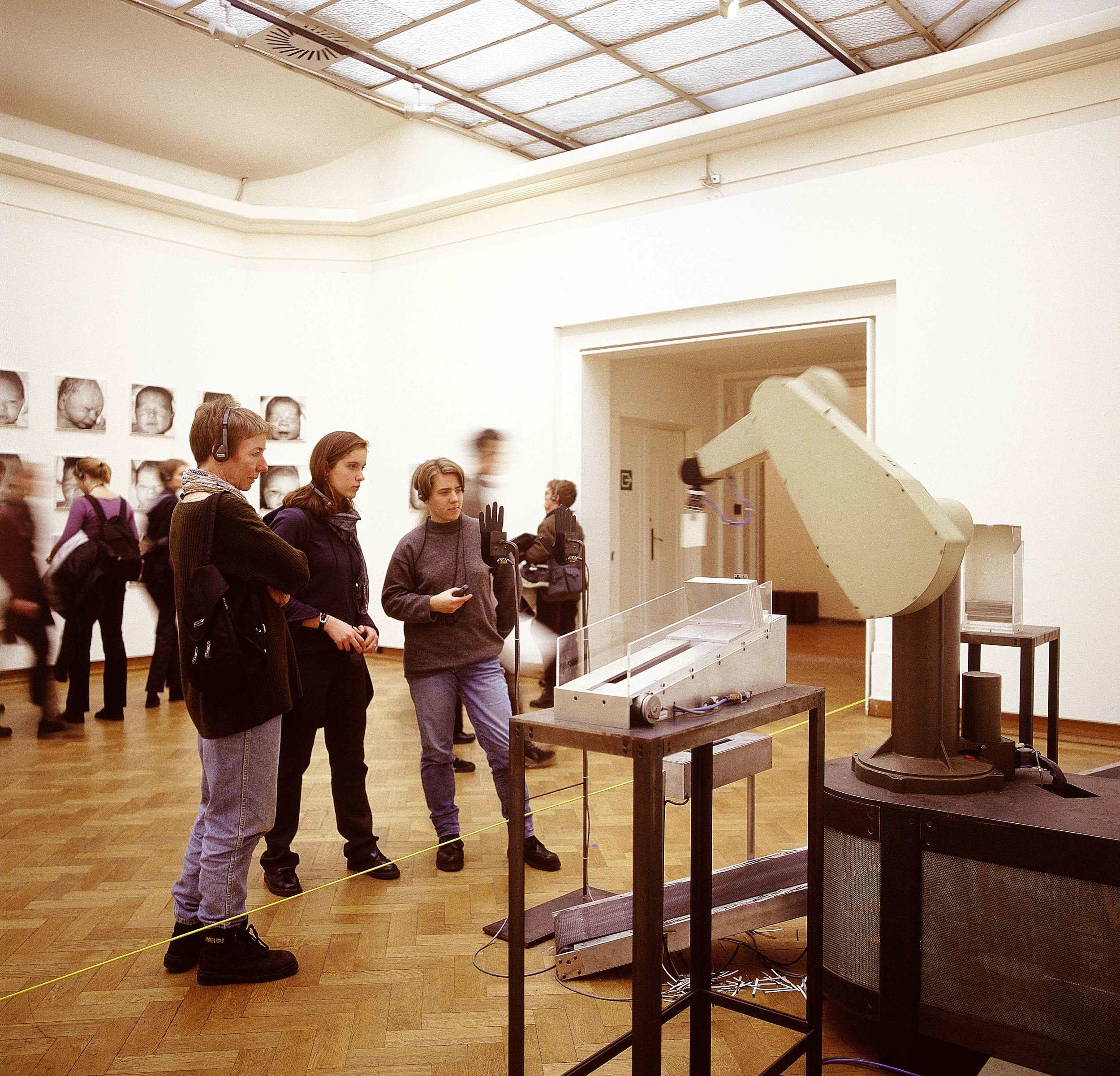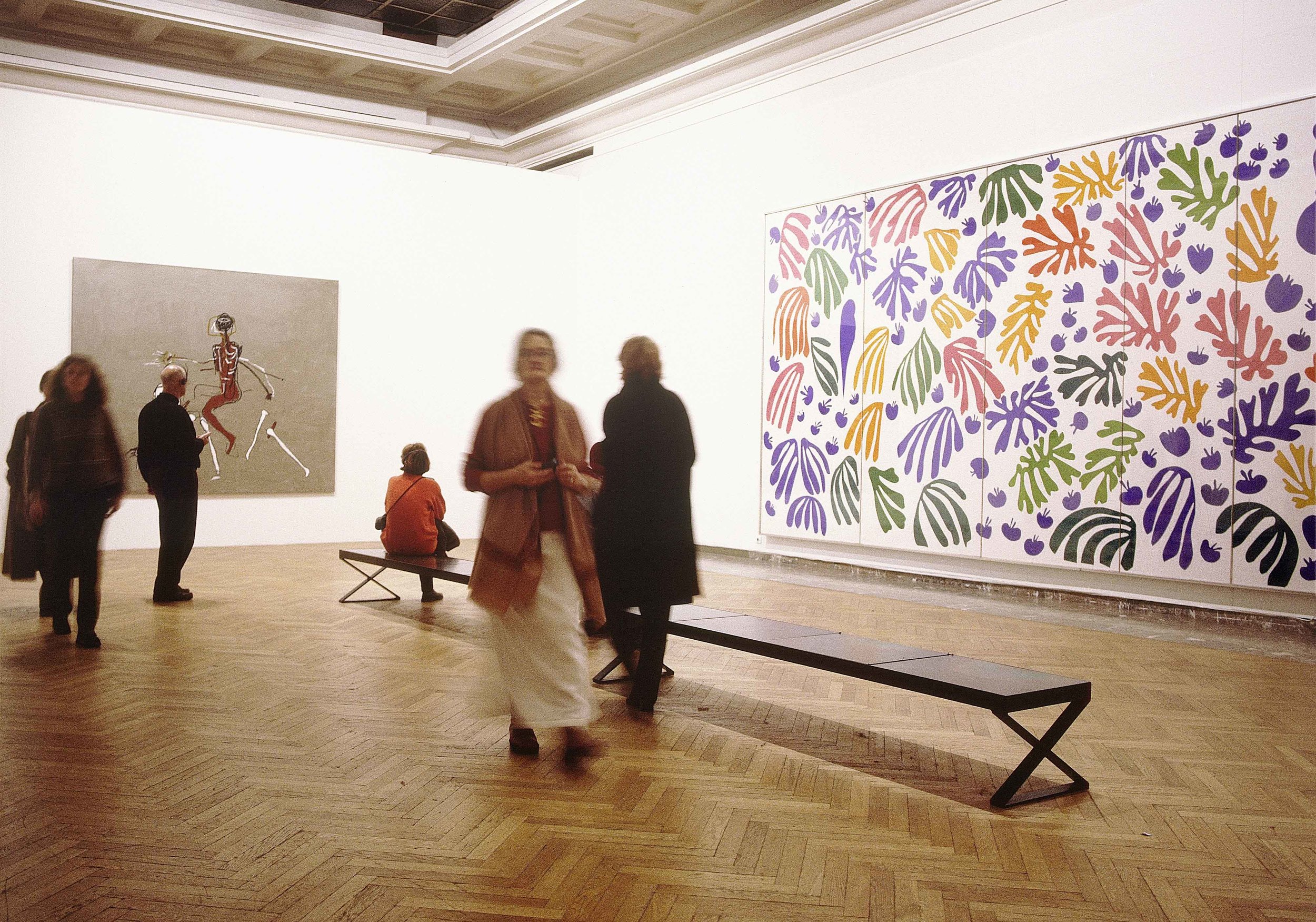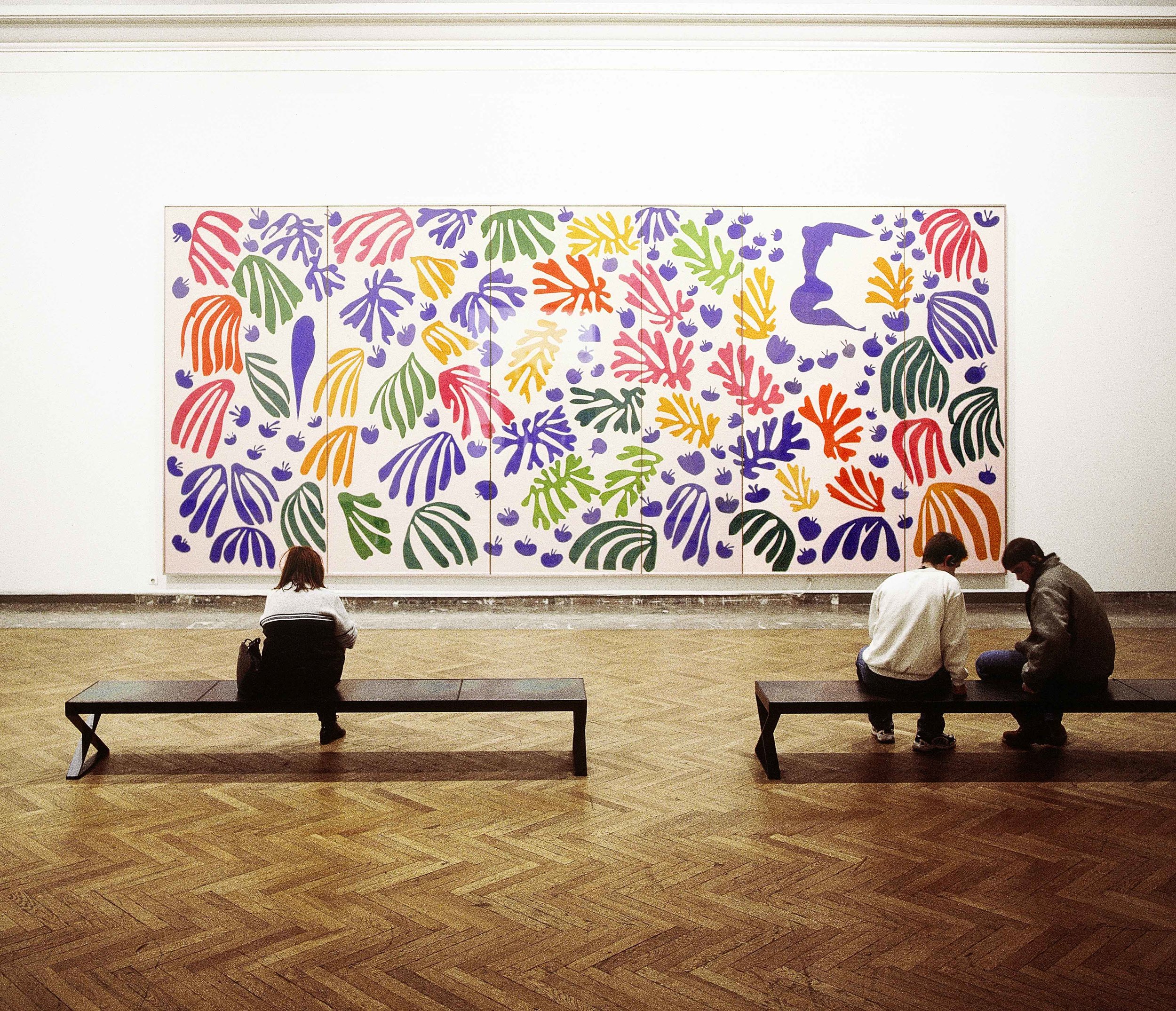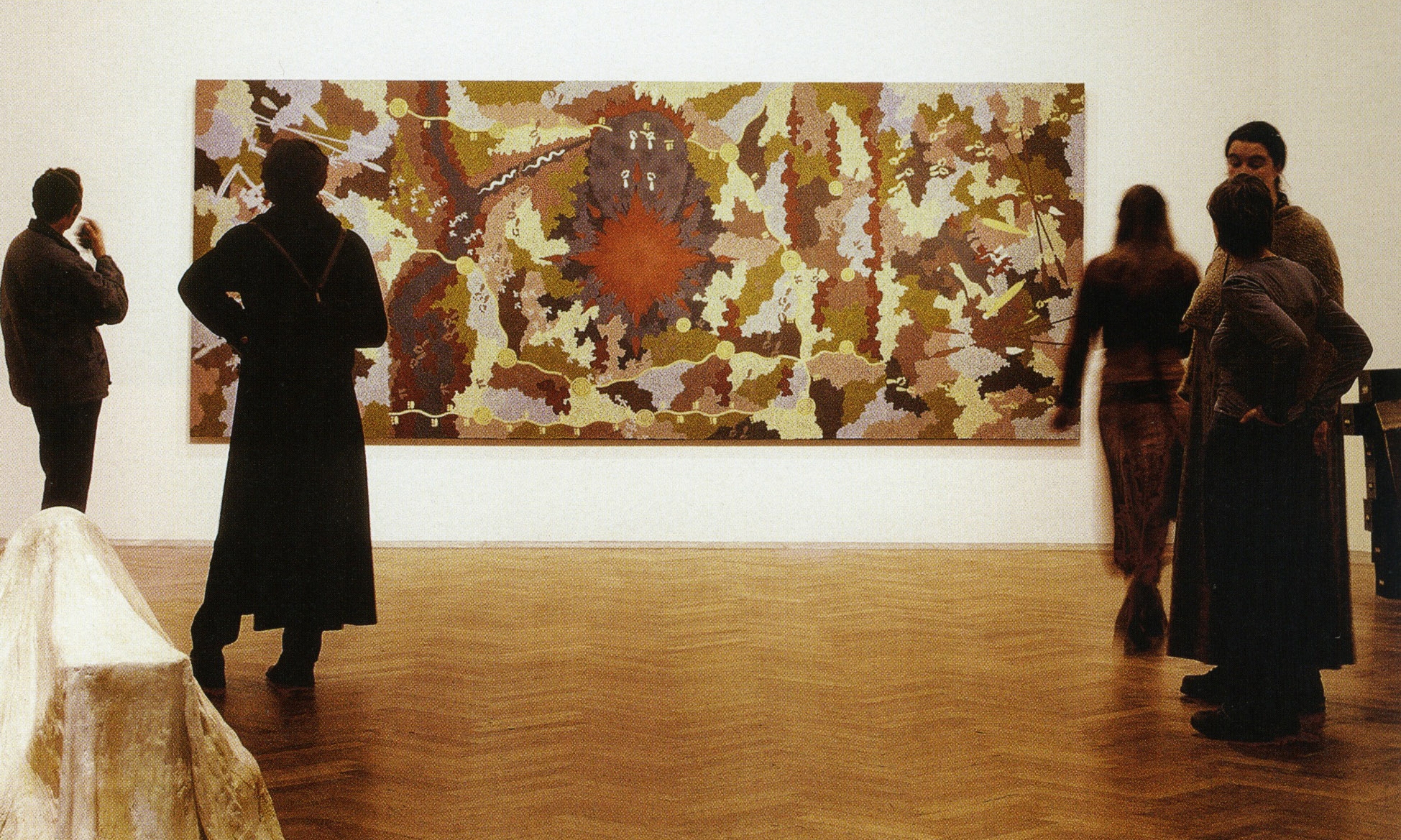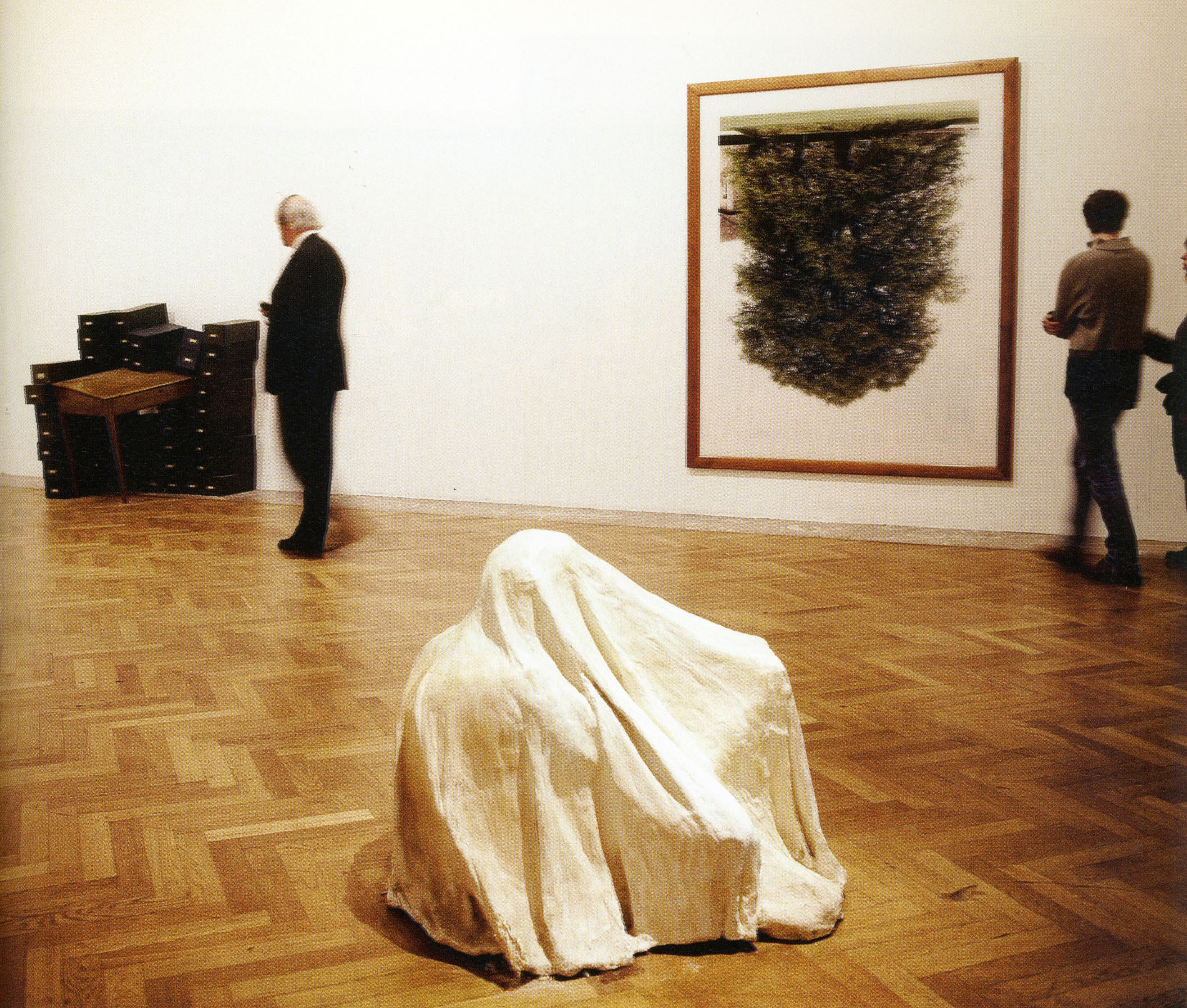Nahum Tevet
2017: Nahum Tevet: Works on Glass, Muzeum Sztuki, Łódź.
2016: Nahum Tevet: Works on Glass, Leubsdorf Gallery, Hunter College, New York.
Silvia Gruner
2006: Silvia Gruner, Galerie commune, Université de Lille 3 and ERSEP, Tourcoing.
Sylvie Eyberg and Valérie Mannaerts
2003: Belgian pavilion, Venice Biennale: Sylvie Eyberg and Valérie Mannaerts.
Voici — 100 ans d’art contemporain – 100 years of contemporary art
2000: Voici — 100 ans d’art contemporain, Palais des Beaux-Arts, Brussels.
Like a frame around a painting or a base underneath a sculpture, the word “Voici” is a presentational device whose meaning is “see this.” It is an invitation to look. The challenge taken on by Voici is to present the works in such a way that they present themselves, that they address us, their spectators, and that they speak of all of us. Hence its division into three parts. Me voici (Here I am), Vous voici (Here you are), and Nous voici (Here we are).
Me voici (Here I am)
No matter what, a work of art presents itself first as an object.
Nevertheless, the object “speaks.” “Here I am,” it seems to say. “In presenting myself before you, I am a thing that stands for something else, something human or inhuman, divine or diabolic, animal or angelic. Whether or not I represent that thing, I am its incarnation.” But works of art never totally succeed in emancipating themselves from their thing-like nature. Speech can be denied to them, such is their risk.
Vous voici (Here you are)
As soon as a work of art starts “speaking,” it addresses an Other. “Here you are,” it says, “here you are looking at me.” Facing the work there is someone human: an incarnated, mortal, gendered, and speaking being. However, works of art might be facing a void and present themselves before the addressee’s absence. Such is their risk: that the public be missing, or blind, or mute. They would then become things again and cease to be art. Some works stay in that limbo for a long time.
Nous voici (Here we are)
Once a work of art addresses the men and women facing it, it raises the question of their bond. “Here we are,” it claims to say. “We” is the collective pronoun: it goes from “the two of us” to “all of us,” and either includes or excludes its addressee. Such is the risk run by works of art: we never know for sure if the “we” they form with their own tradition isolates itself in art for art’s sake and keeps the public at bay, or if it includes its addressees and testifies for the community.
1979: Tournai (Ten Belgian artists), Maison de la Culture, Tournai, Belgium.
1977: Marcel Duchamp: la Boîte-en-valise, Maison de la Culture, Tournai.
1974: Andy Warhol, Maison de la Culture, Tournai.
1969: Géométries (Four Belgian Constructivists), University of Louvain.
1967: Art Cinétique, University of Louvain.
